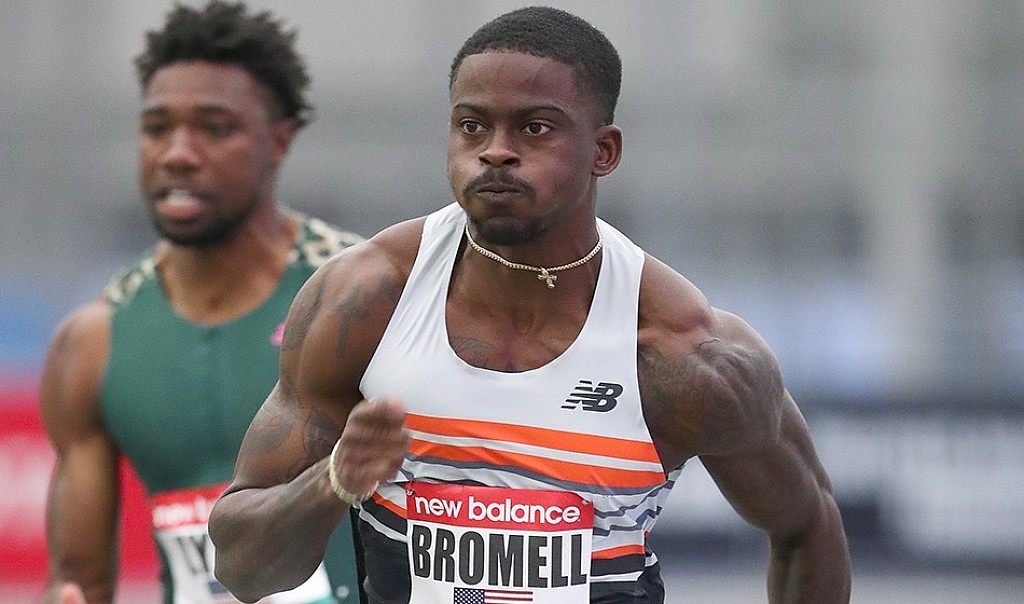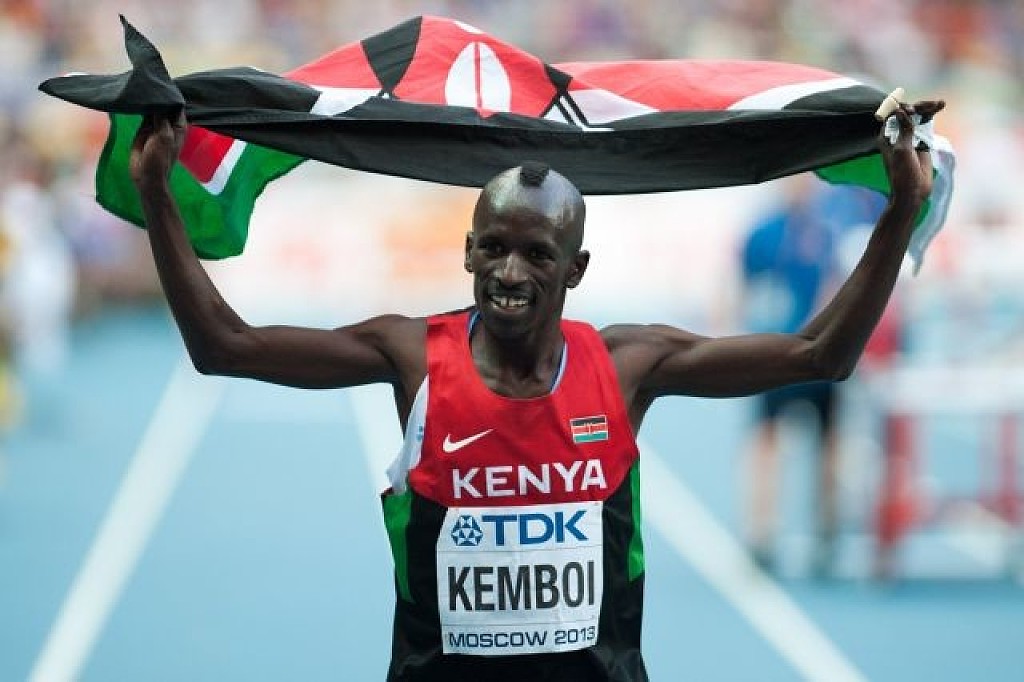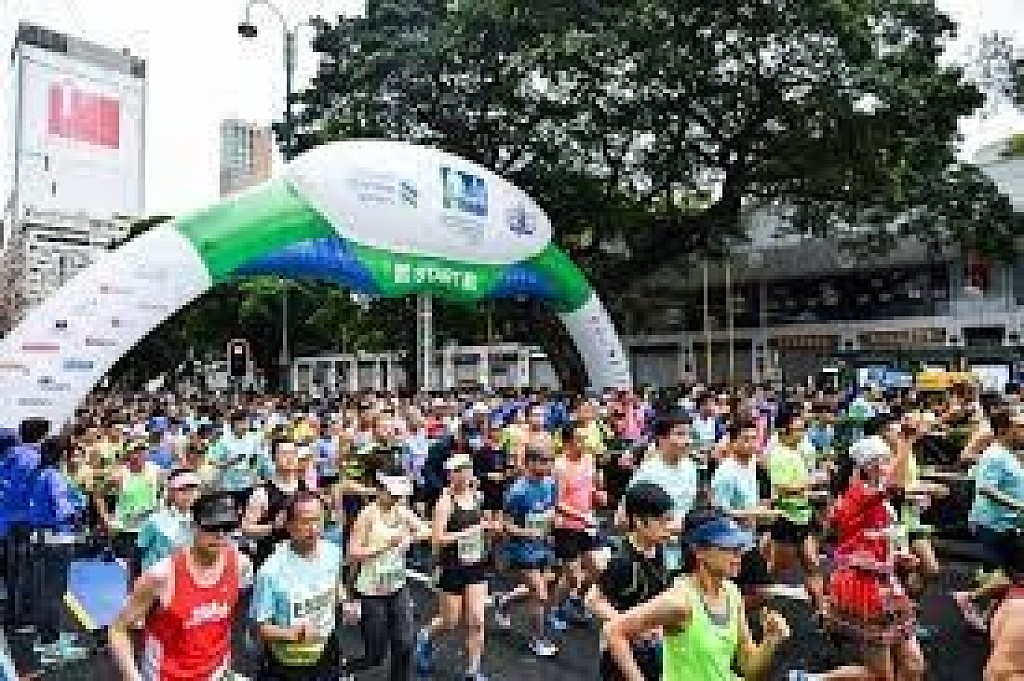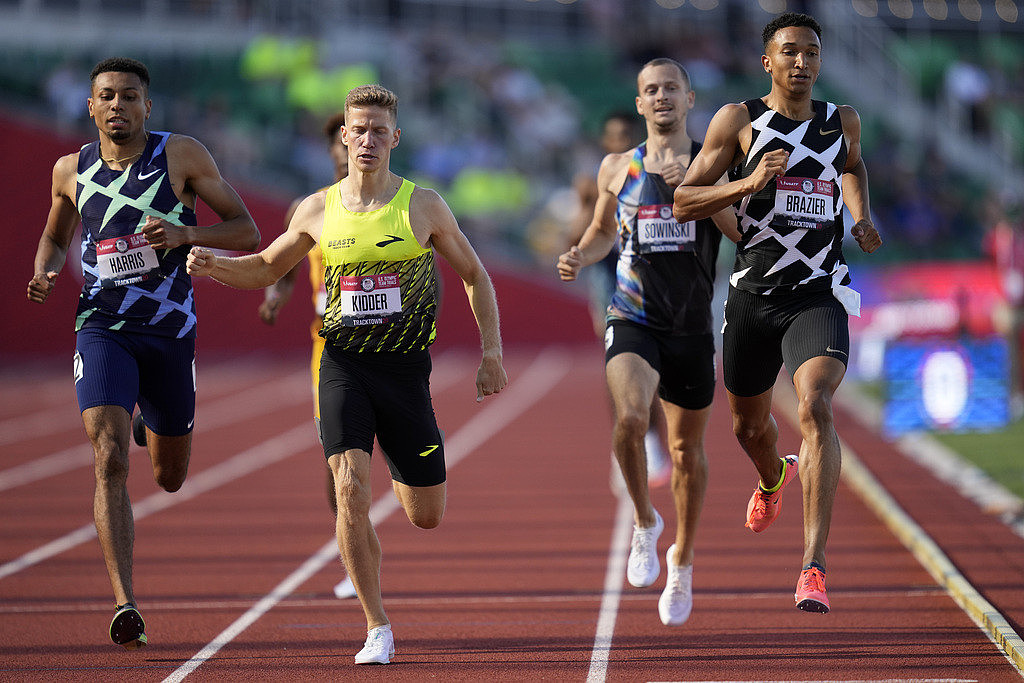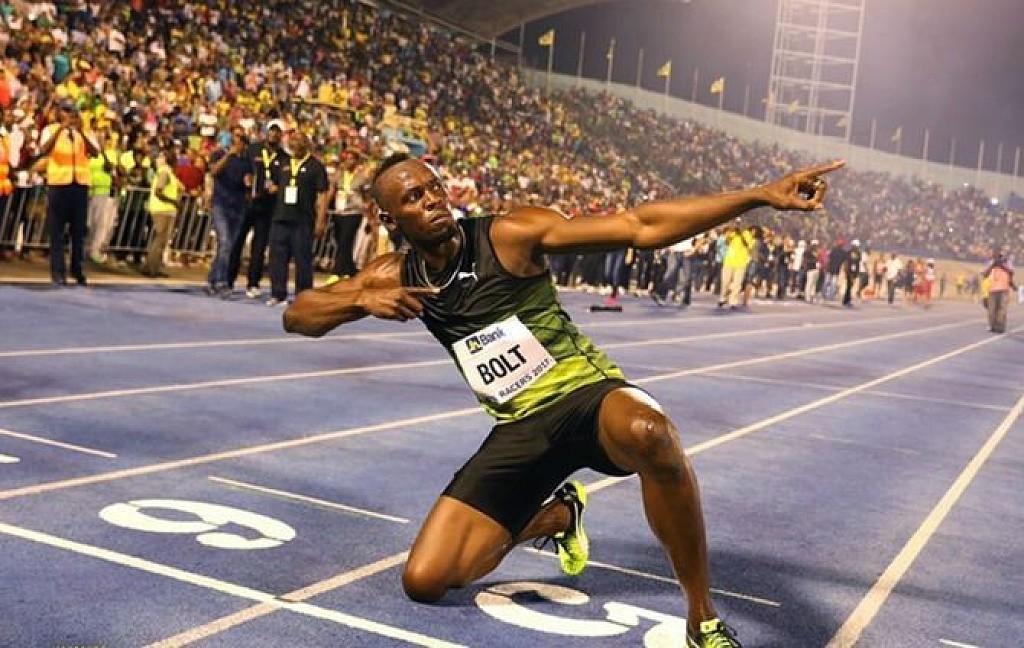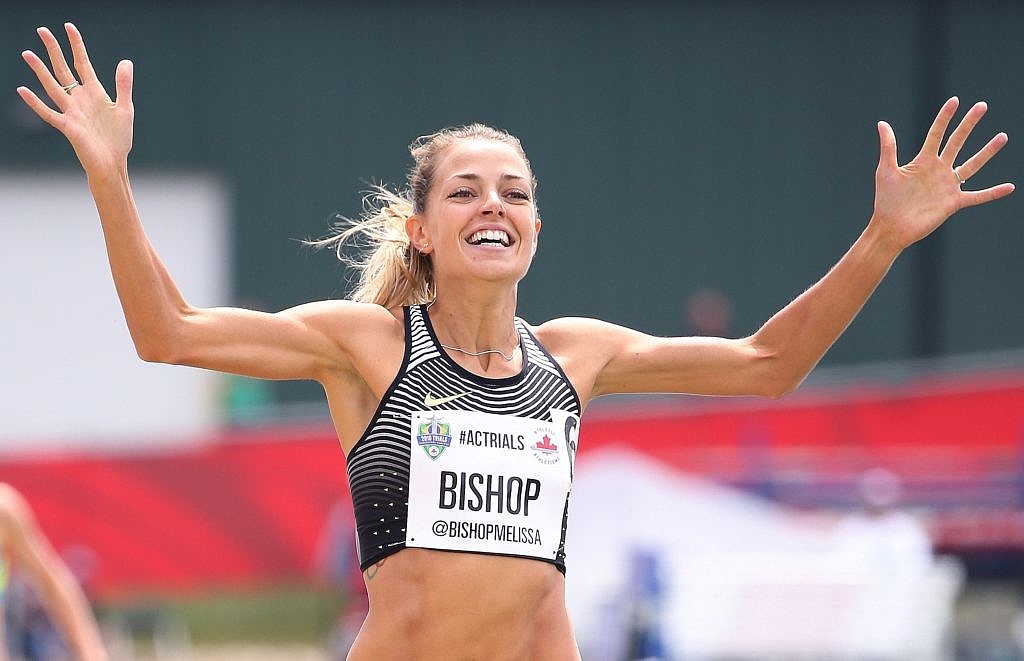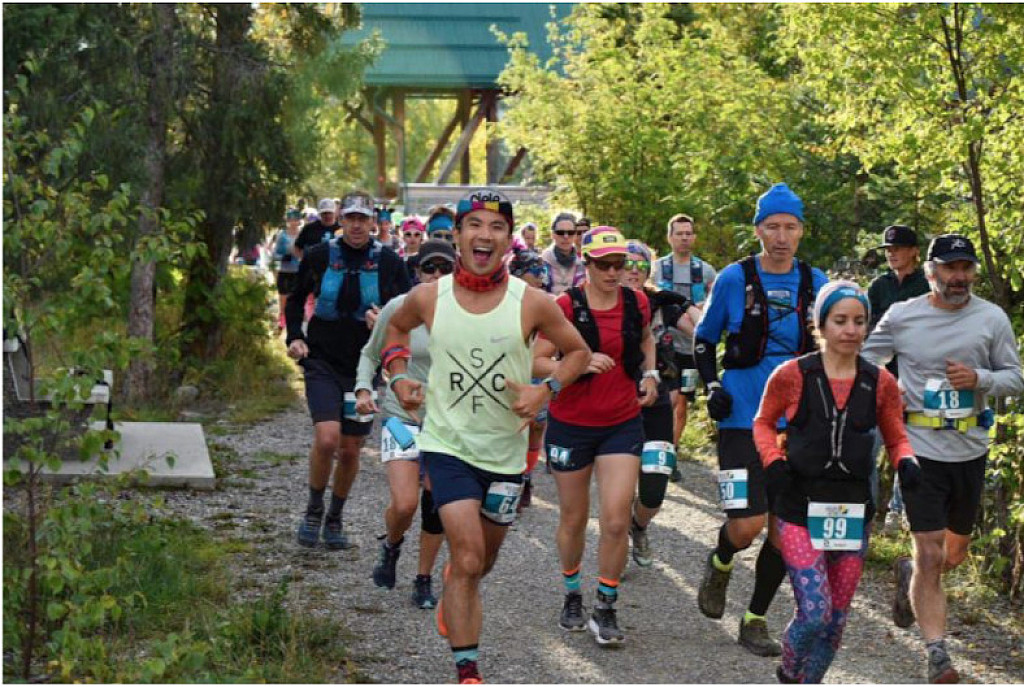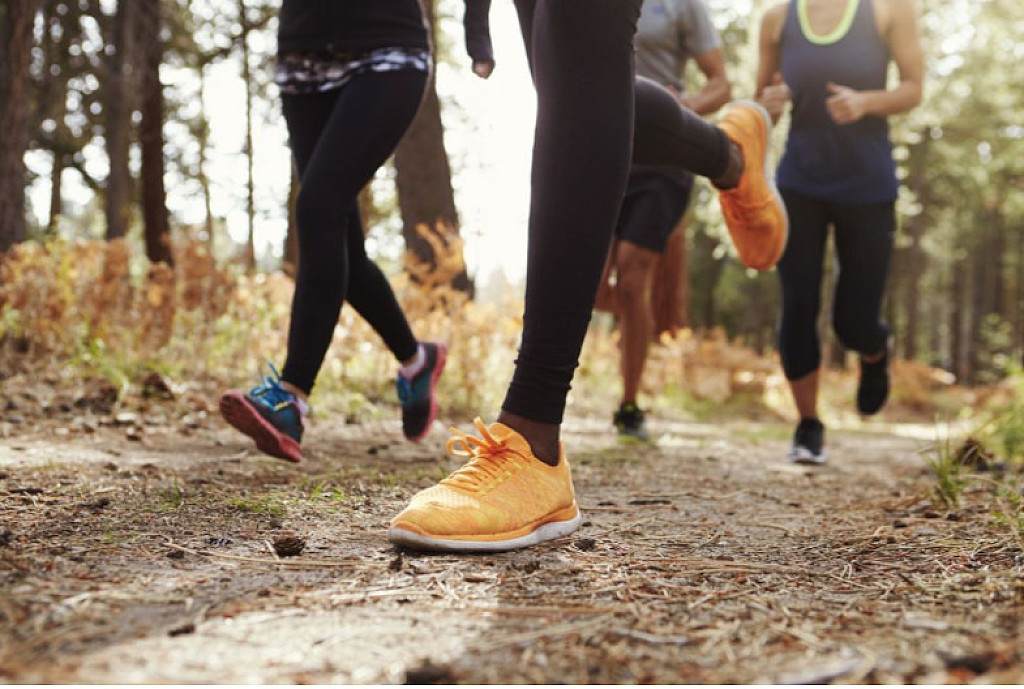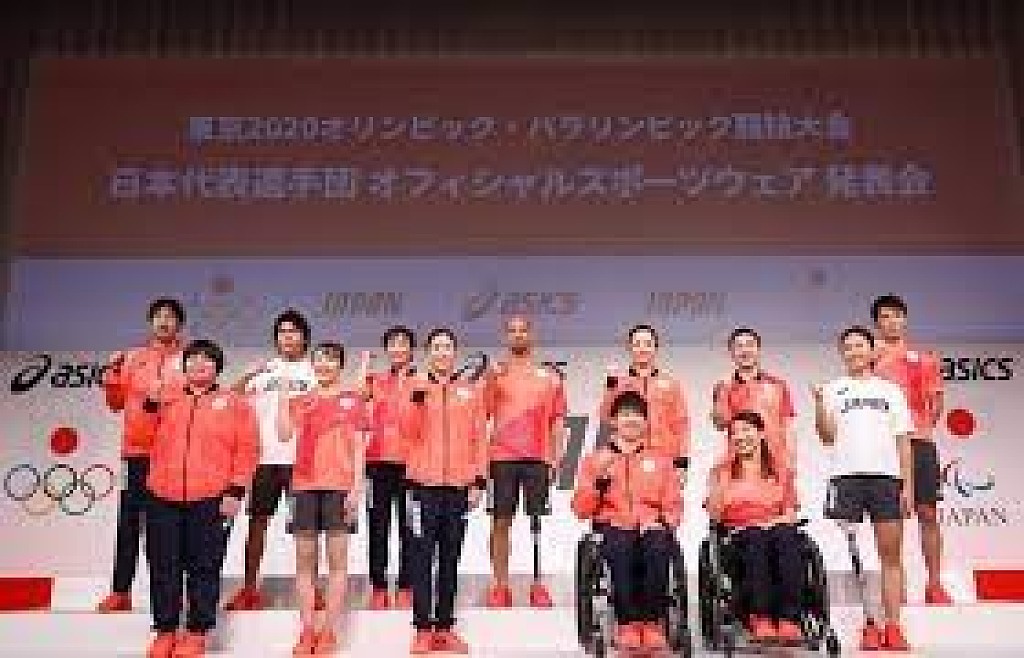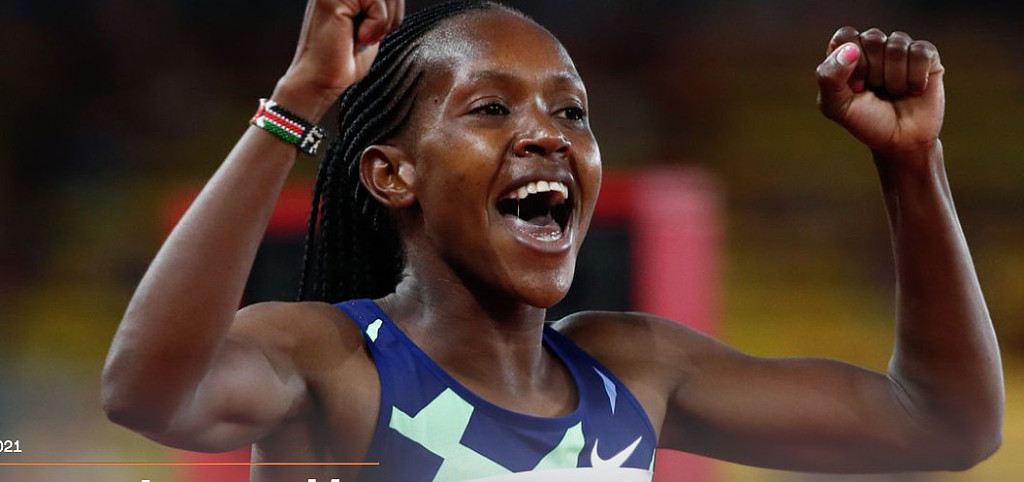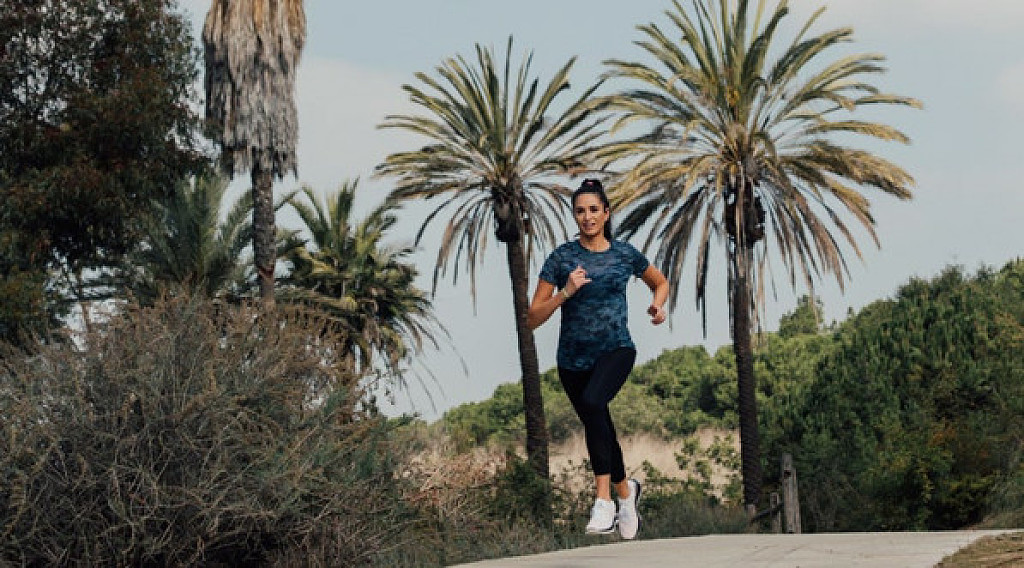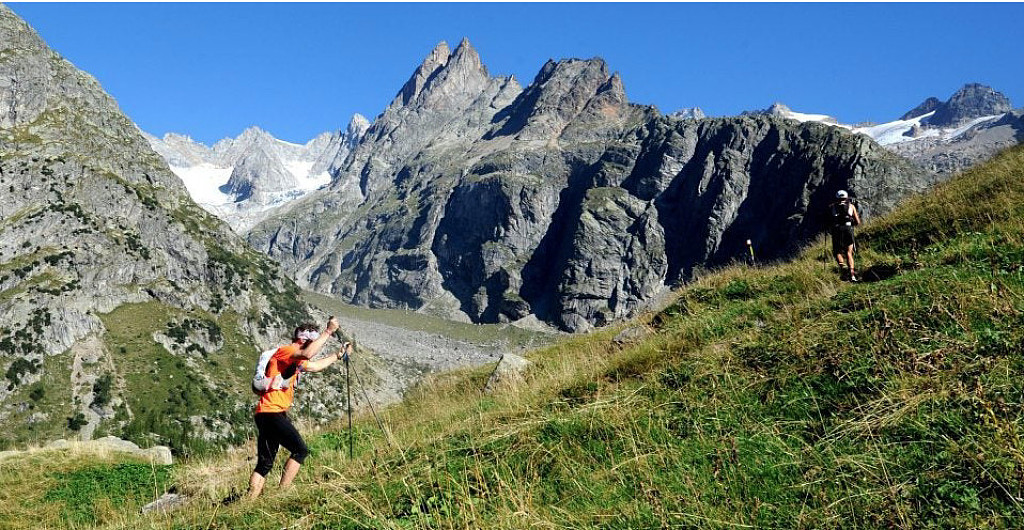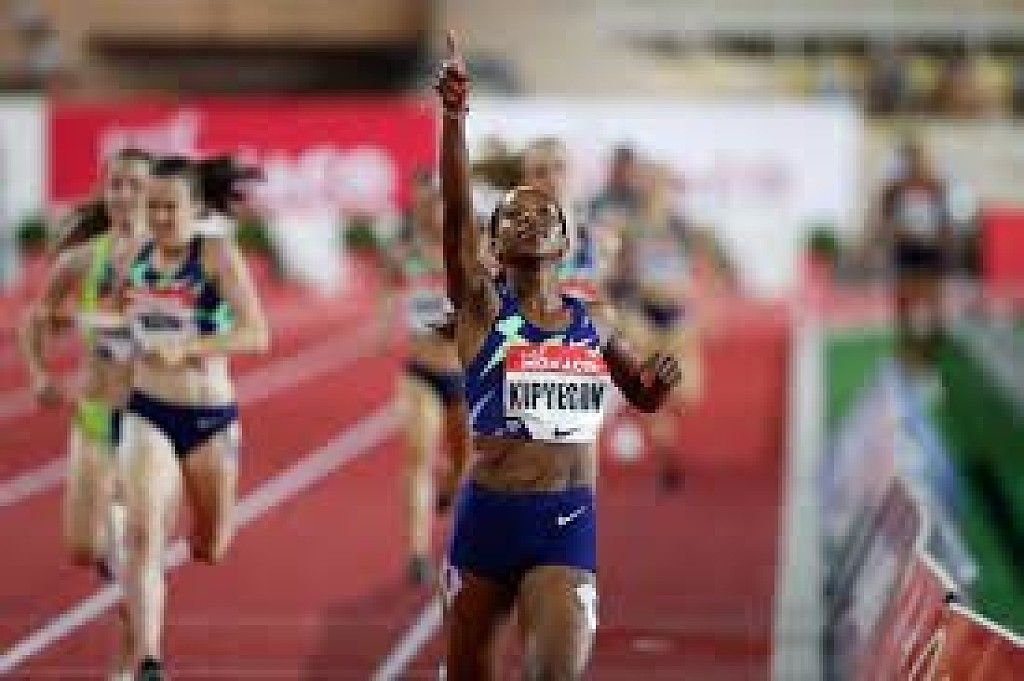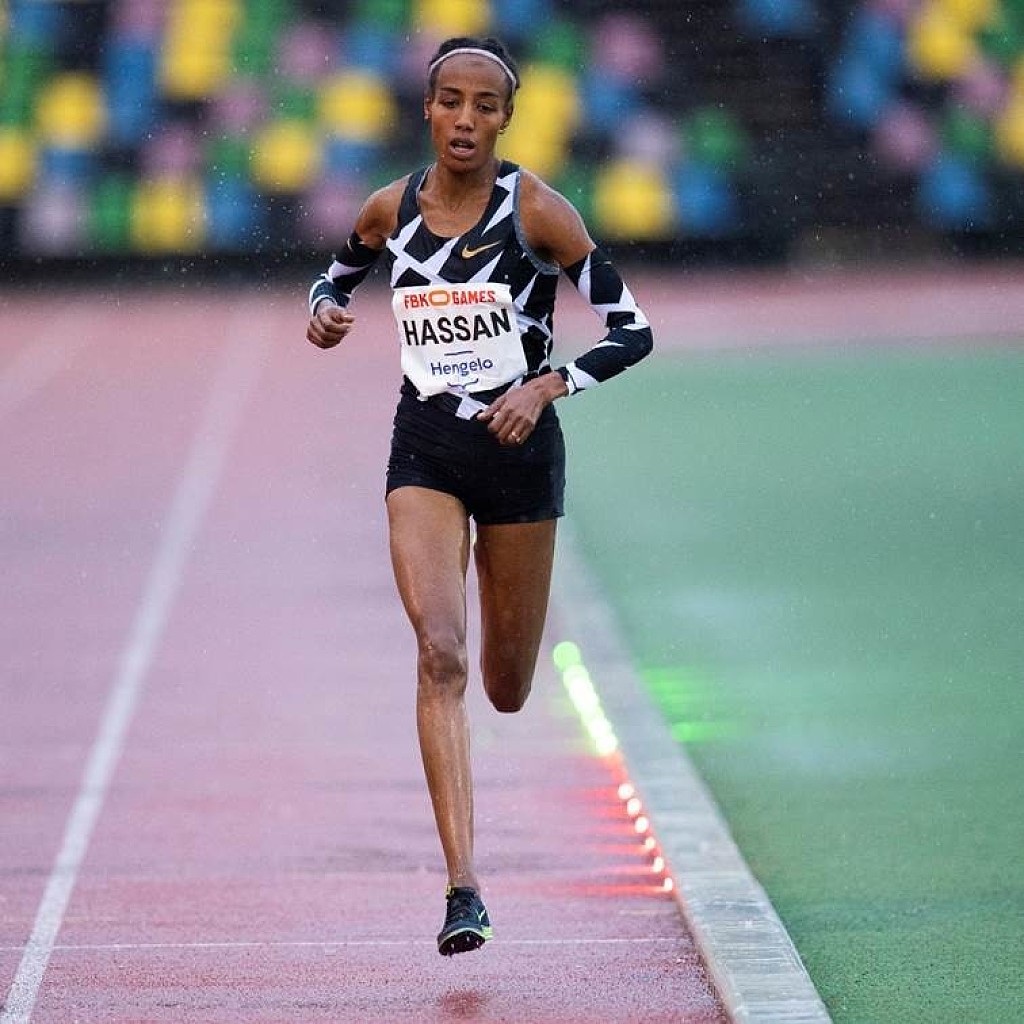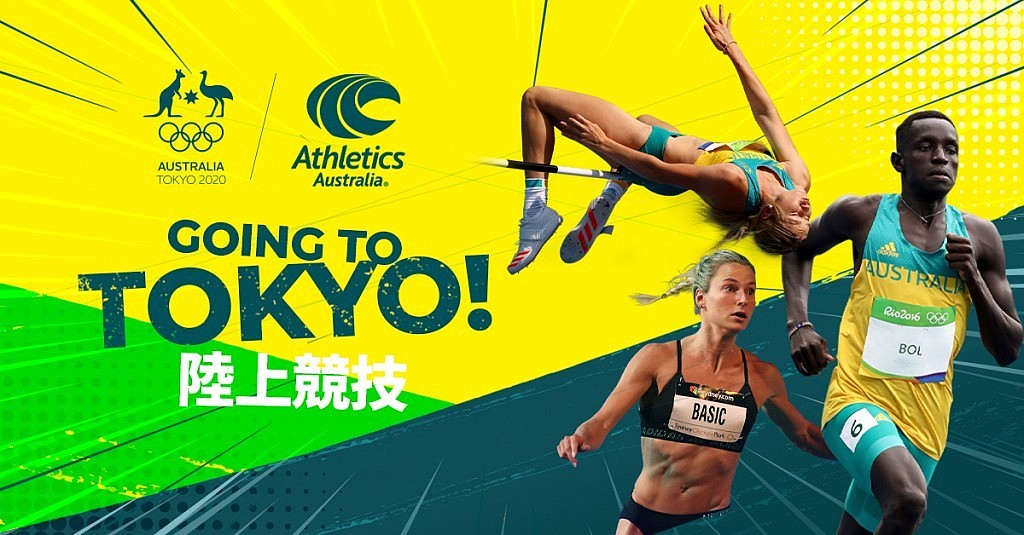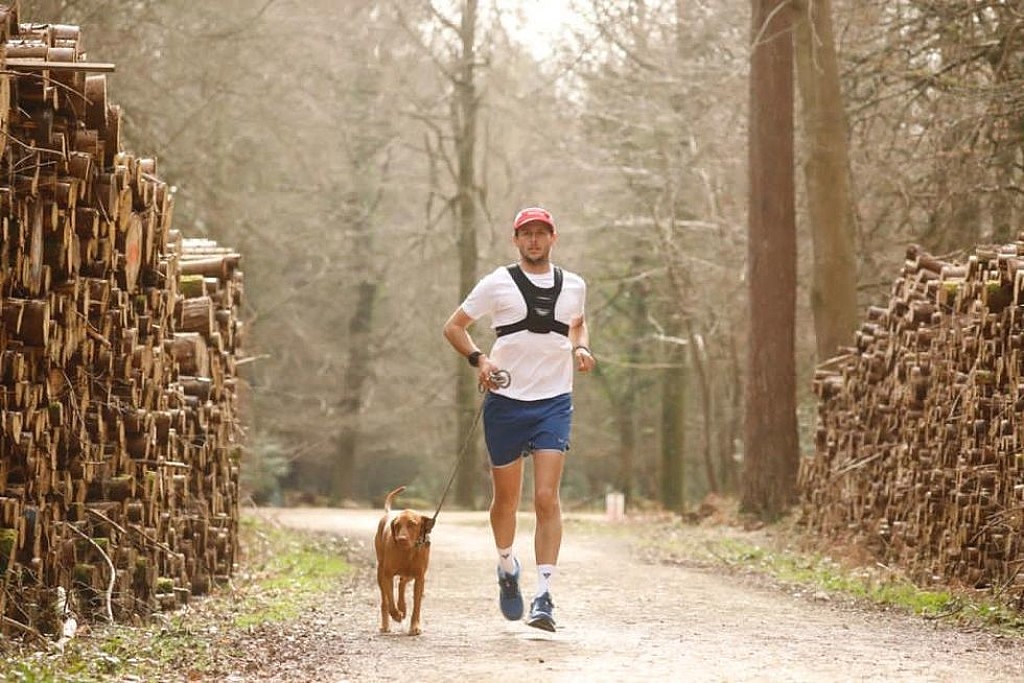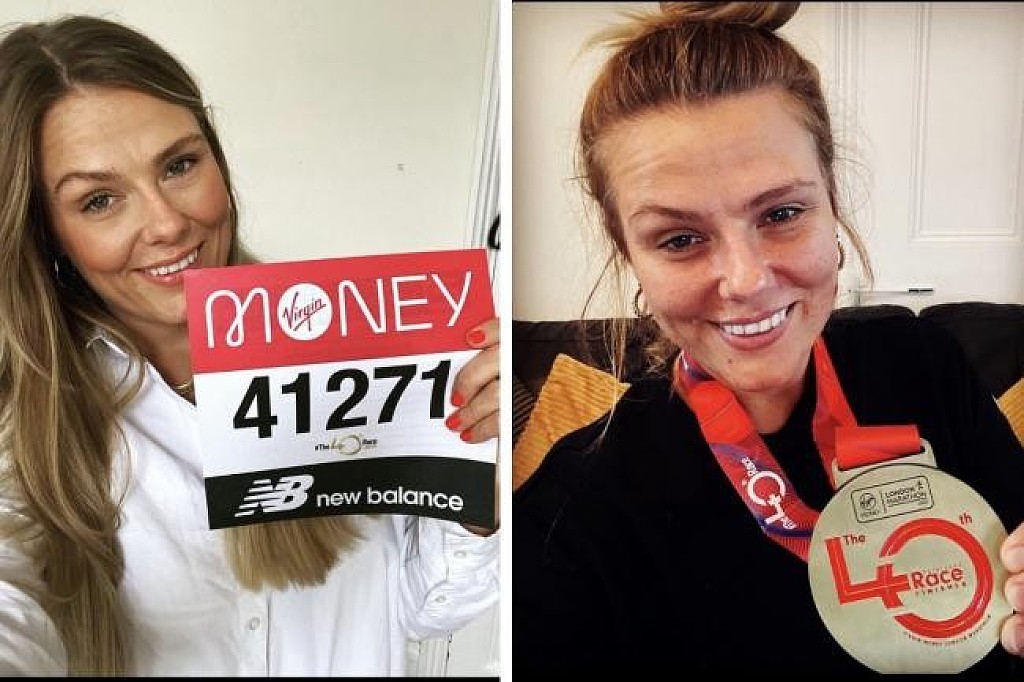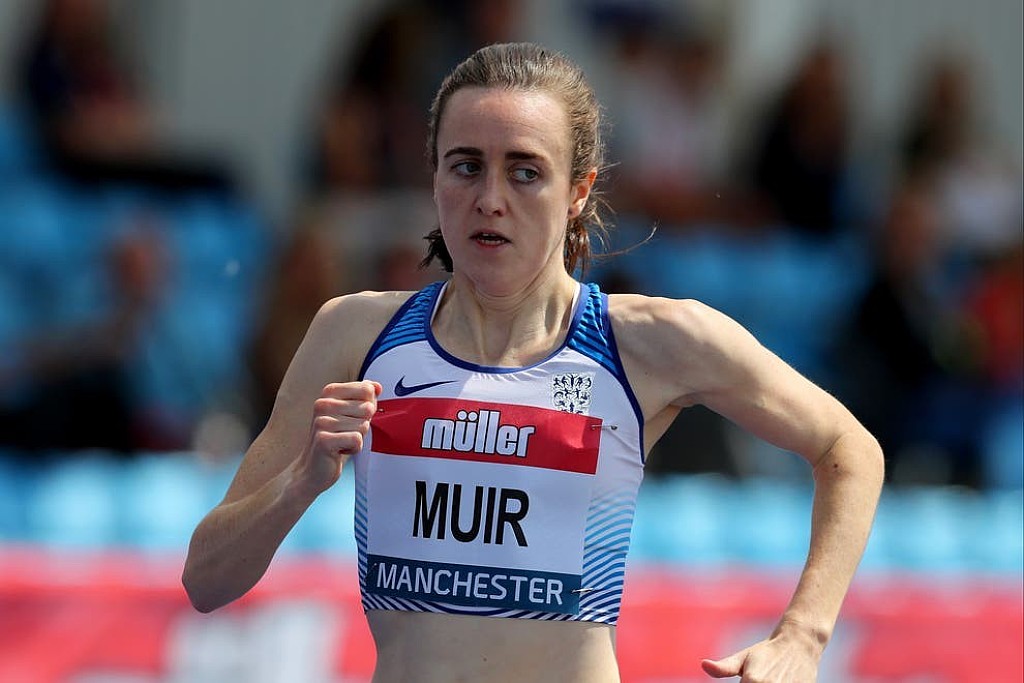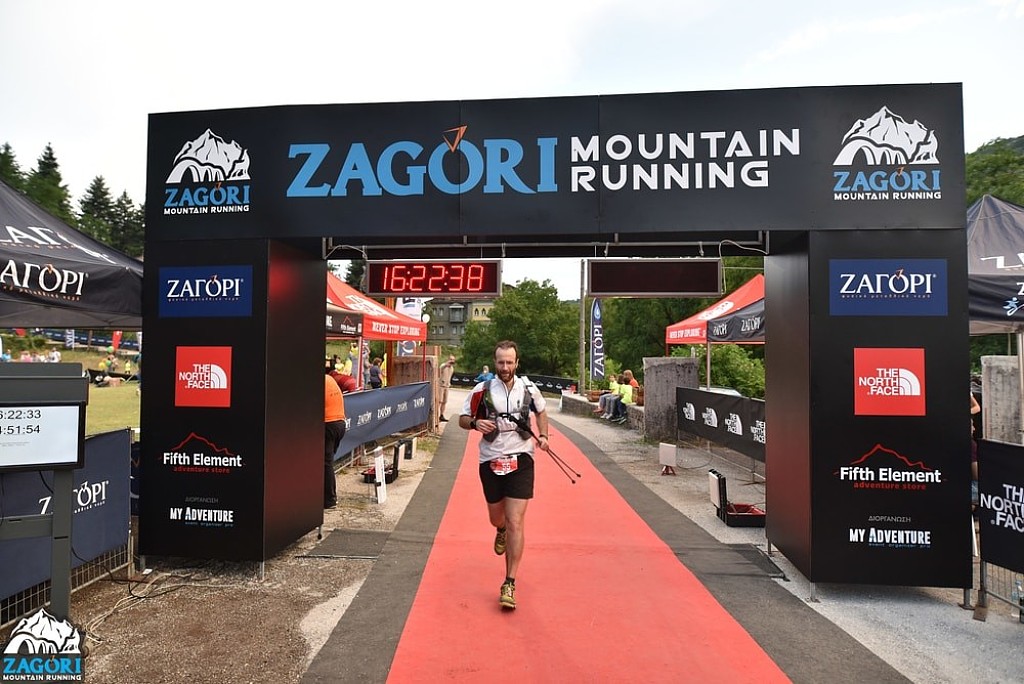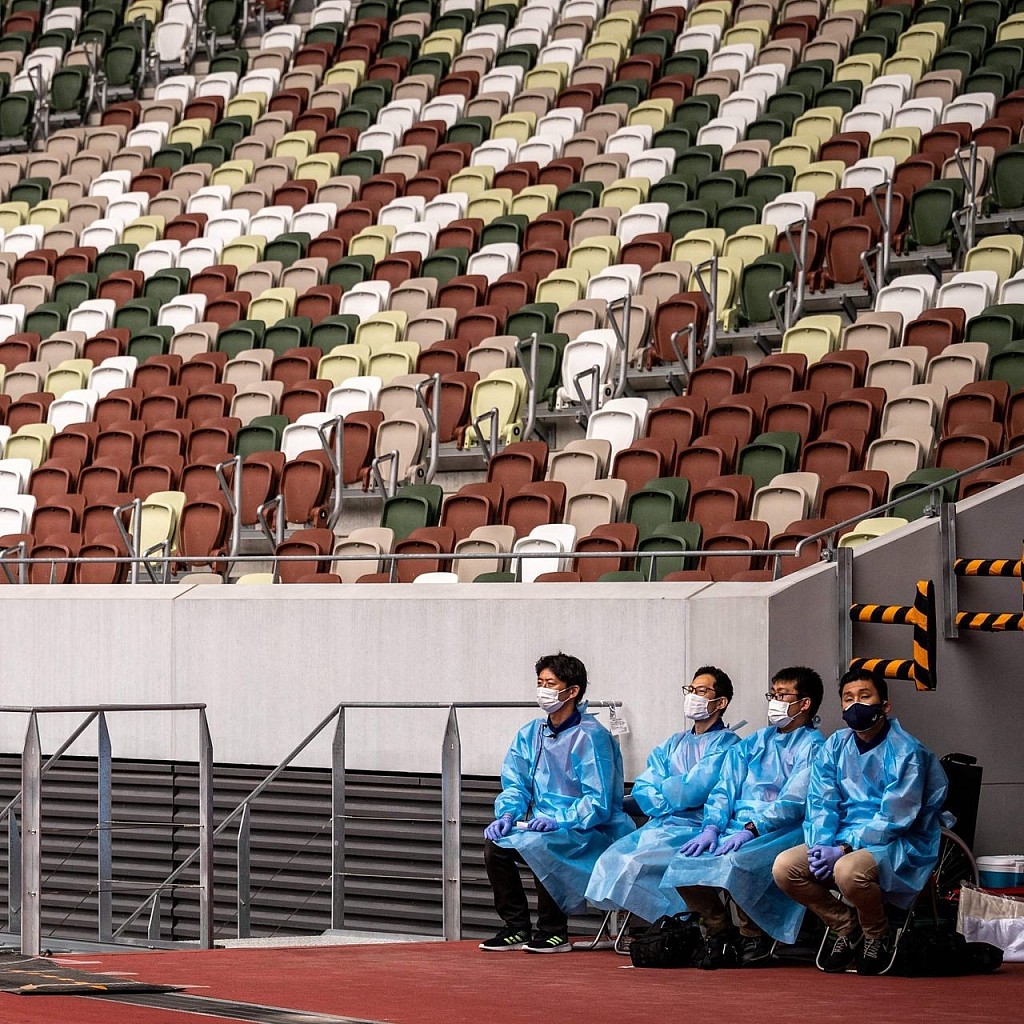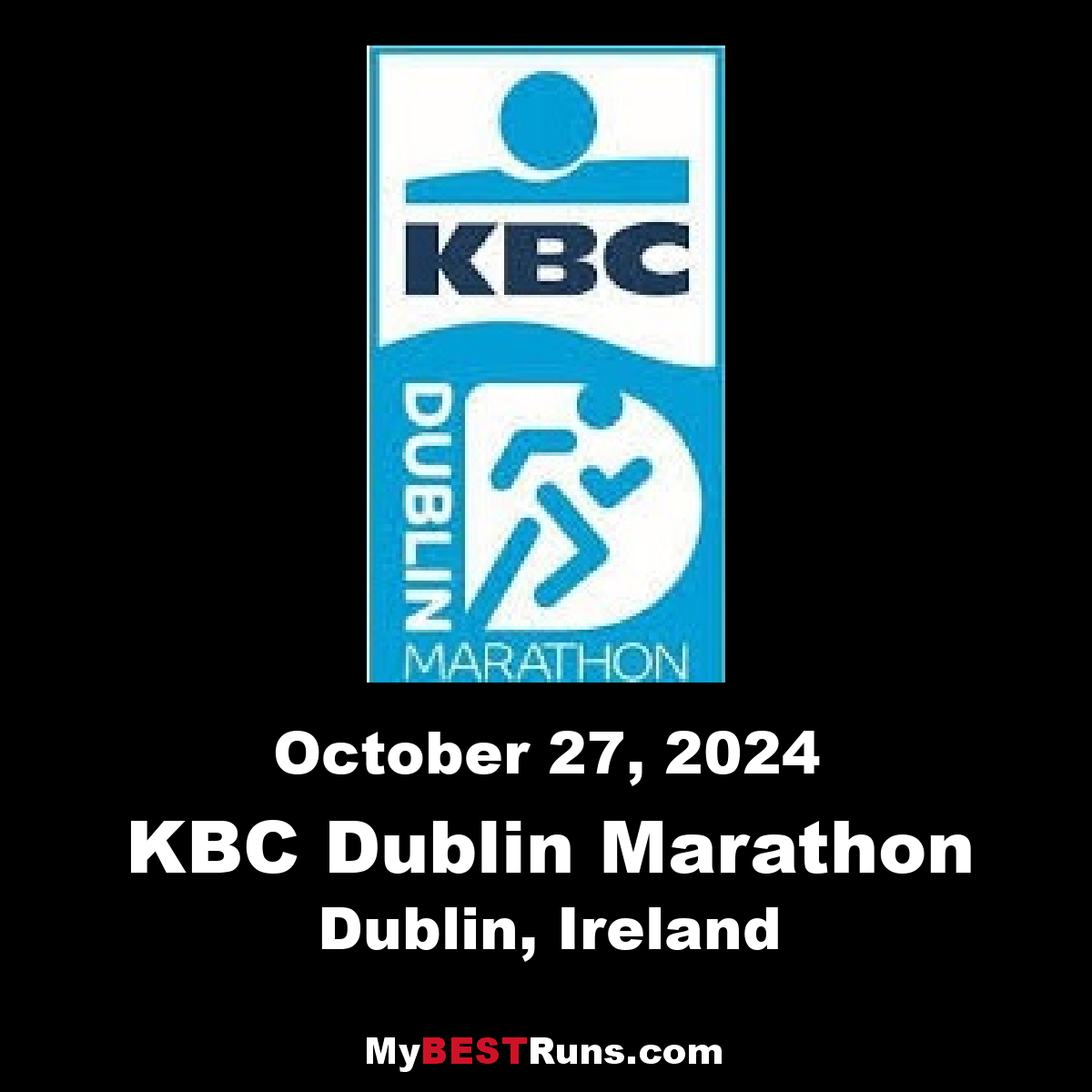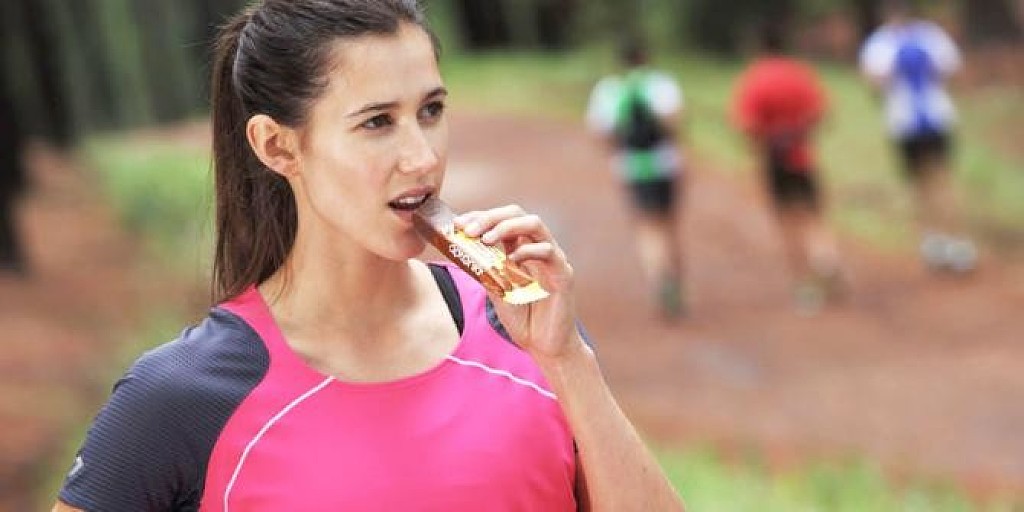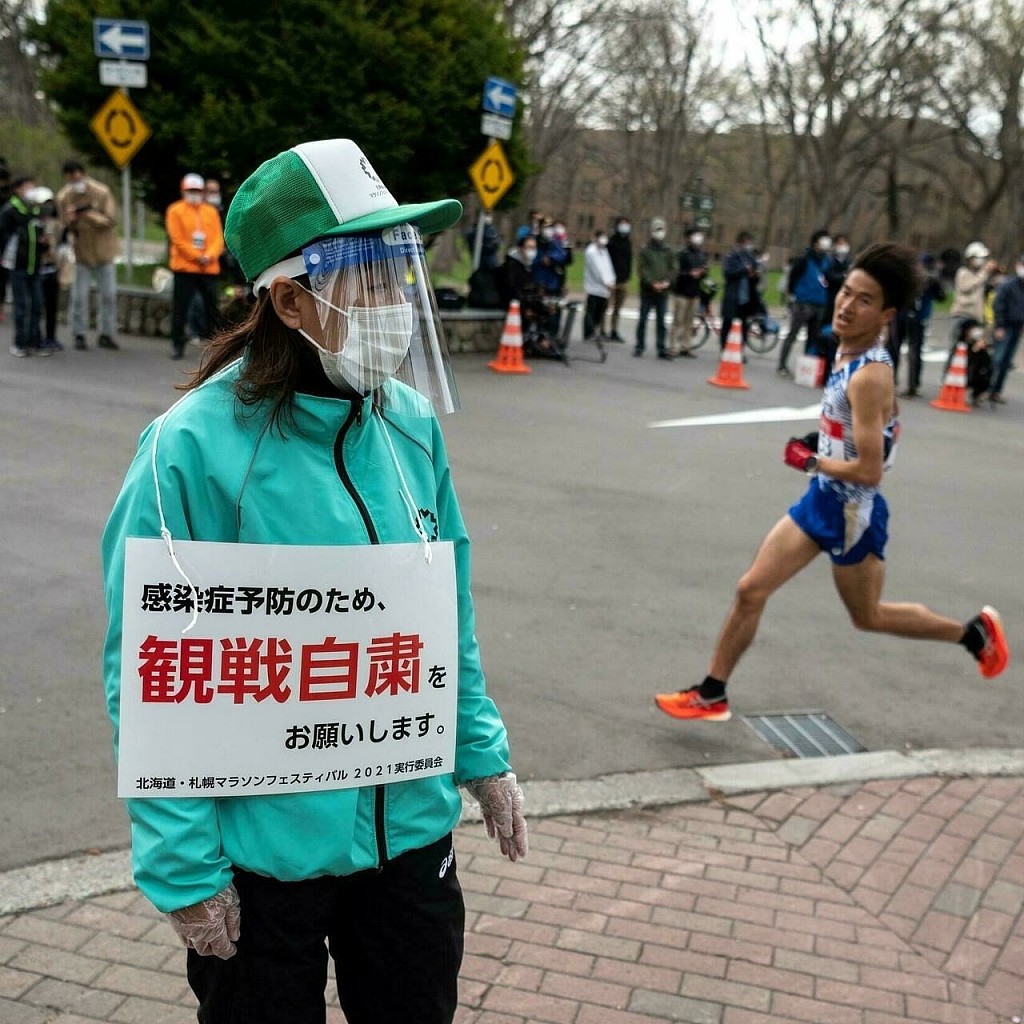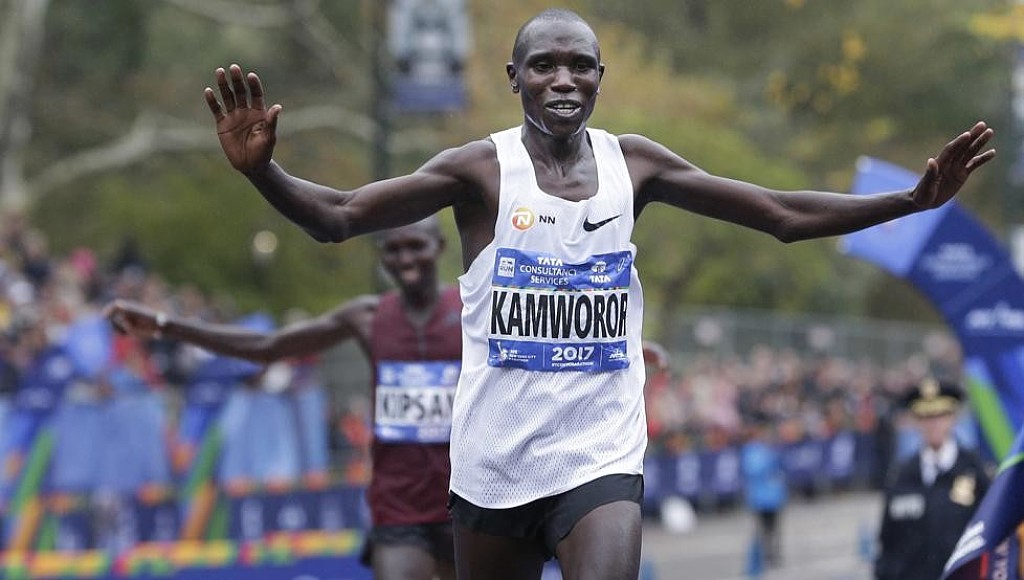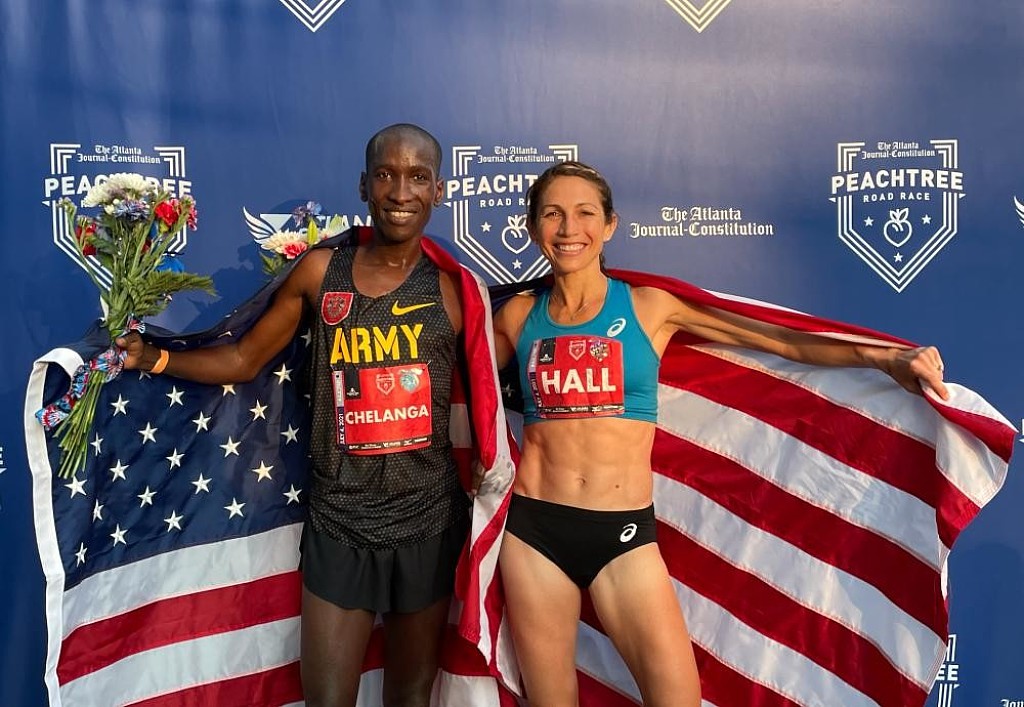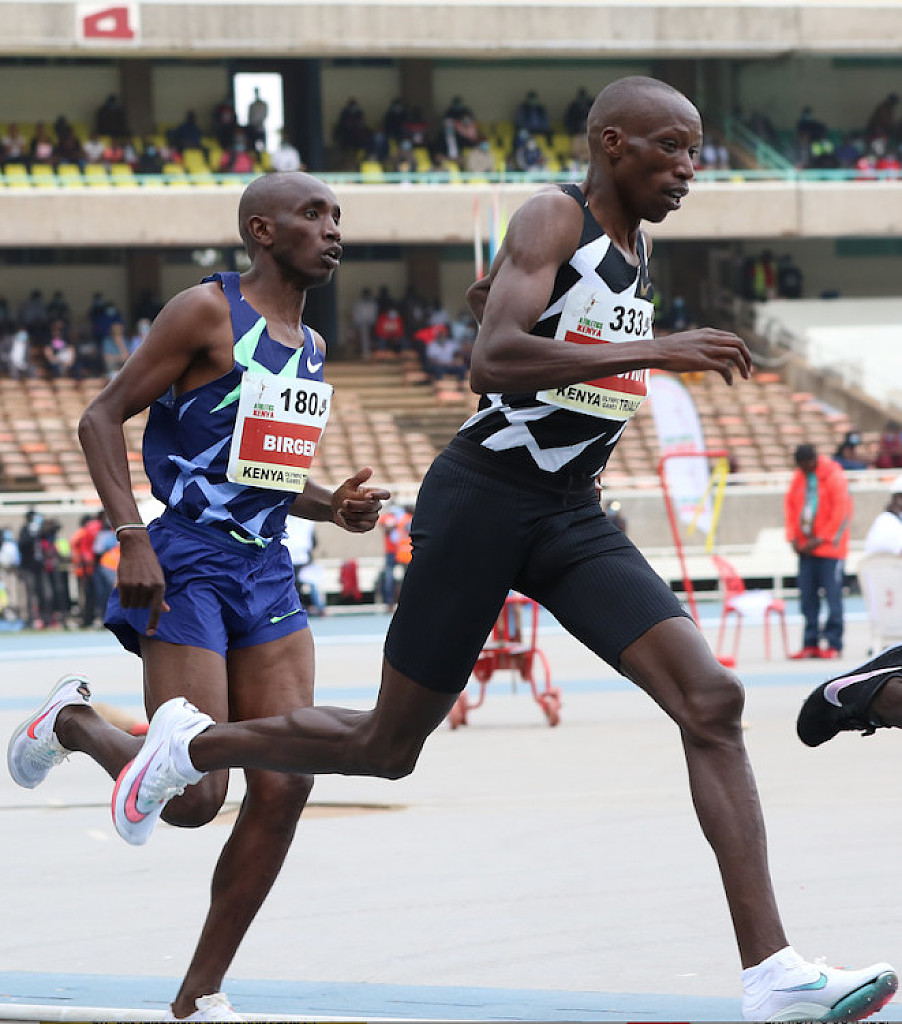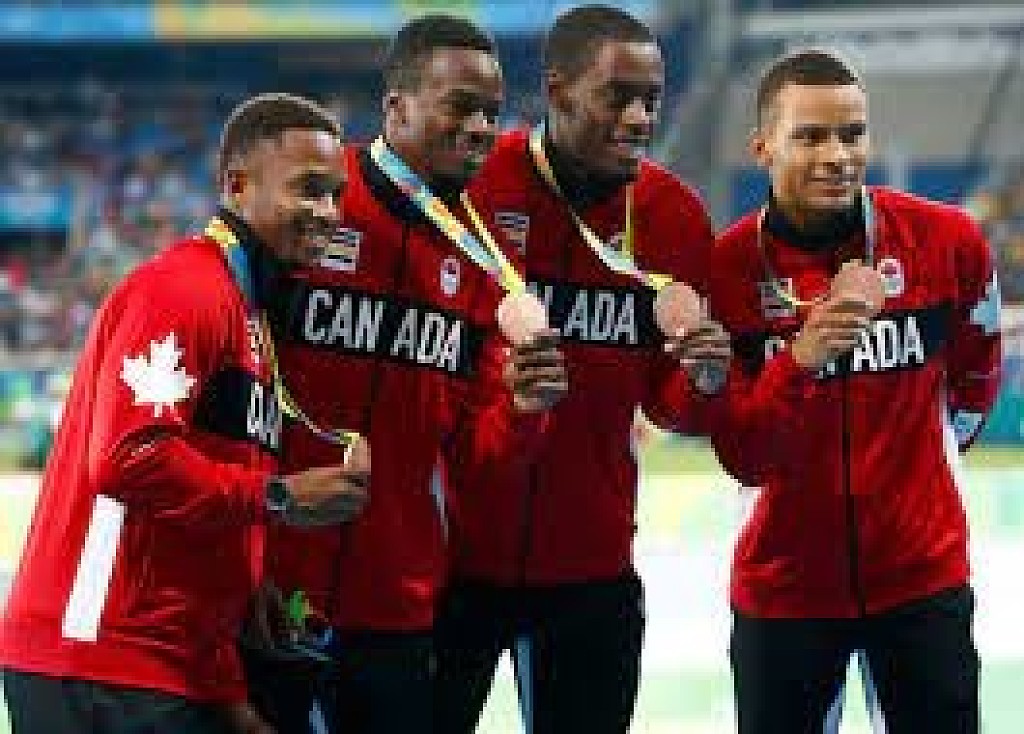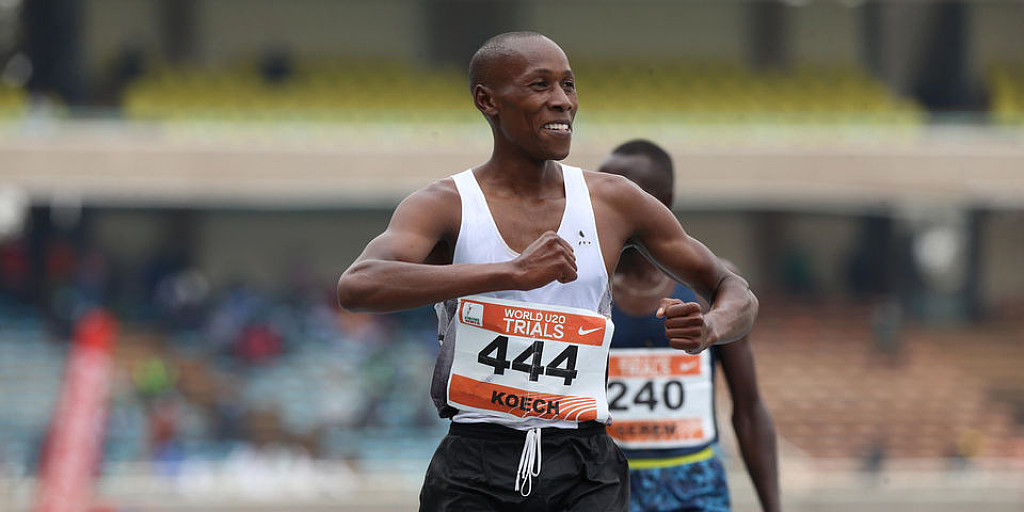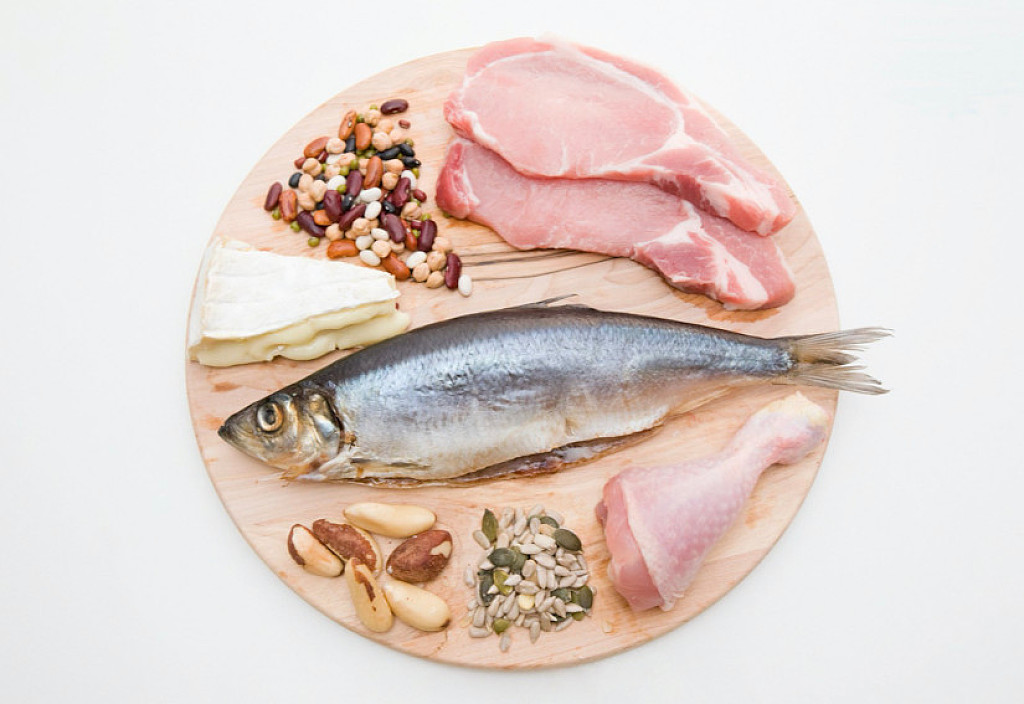Running News Daily
Running News Daily is edited by Bob Anderson in Mountain View, California USA and team in Thika Kenya, La Piedad Mexico, Bend Oregon, Chandler Arizona and Monforte da Beira Portugal. Send your news items to bob@mybestruns.com Advertising opportunities available. Over one million readers and growing. Train the Kenyan Way at KATA Running Retreat Kenya. (Kenyan Athletics Training Academy) in Thika Kenya. Opening in june 2024 KATA Running retreat Portugal. Learn more about Bob Anderson, MBR publisher and KATA director/owner, take a look at A Long Run the movie covering Bob's 50 race challenge.
Index to Daily Posts · Sign Up For Updates · Run The World Feed
With the Tokyo Olympics less than two weeks away Bromell, Thompson-Herah and Vetter headline last Diamond League
With the Tokyo Olympics less than two weeks away, many of the world’s top athletes will get a last chance to test their competitive form when they line up in the Wanda Diamond League meeting in Gateshead, England, on Tuesday (13).
US sprinter Trayvon Bromell, German javelin thrower Johannes Vetter, Jamaican sprint star Elaine Thompson-Herah and British heptathlete Katarina Johnson-Thompson are among the top names entered in the Muller Grand Prix.
Despite the late withdrawals of British world 200m champion Dina Asher-Smith and Dutch middle-distance star Sifan Hassan, the meet features an array of world and Olympic champions and will serve as a crucial tune-up ahead of Tokyo.
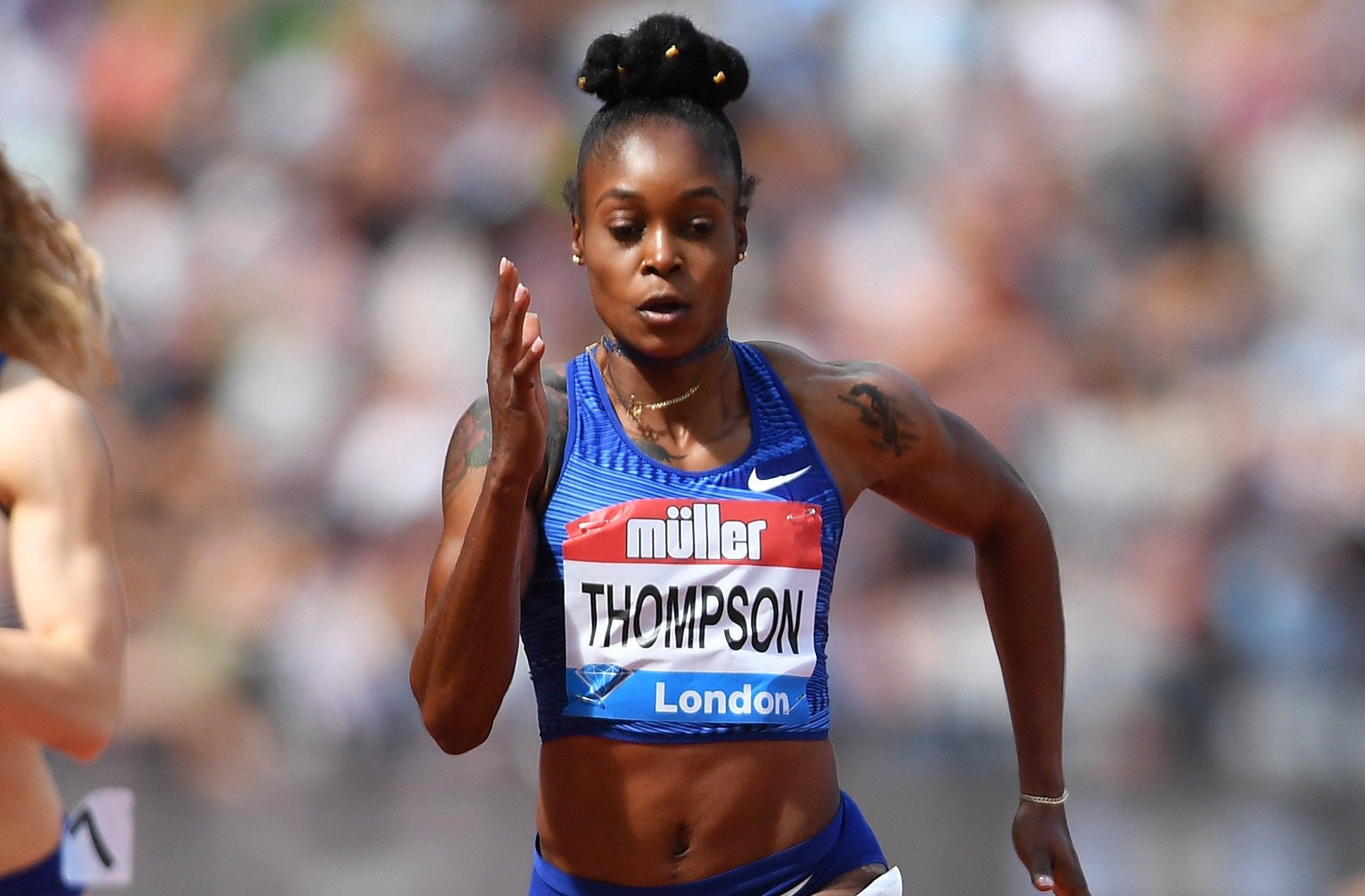
The seventh Diamond League meeting of the season – and second in Gateshead – comes just 10 days before the 23 July opening of the Tokyo Games and 17 days before the start of the Olympic athletics competition on 30 July.
Many athletes are returning to the venue in northeast England for the second time this season. Gateshead hosted the Diamond League opener in May after the meeting was moved from Rabat, Morocco. Tuesday’s meeting was originally scheduled to take place at the Olympic Stadium in London but was switched to Gateshead due to the Covid-19 pandemic.
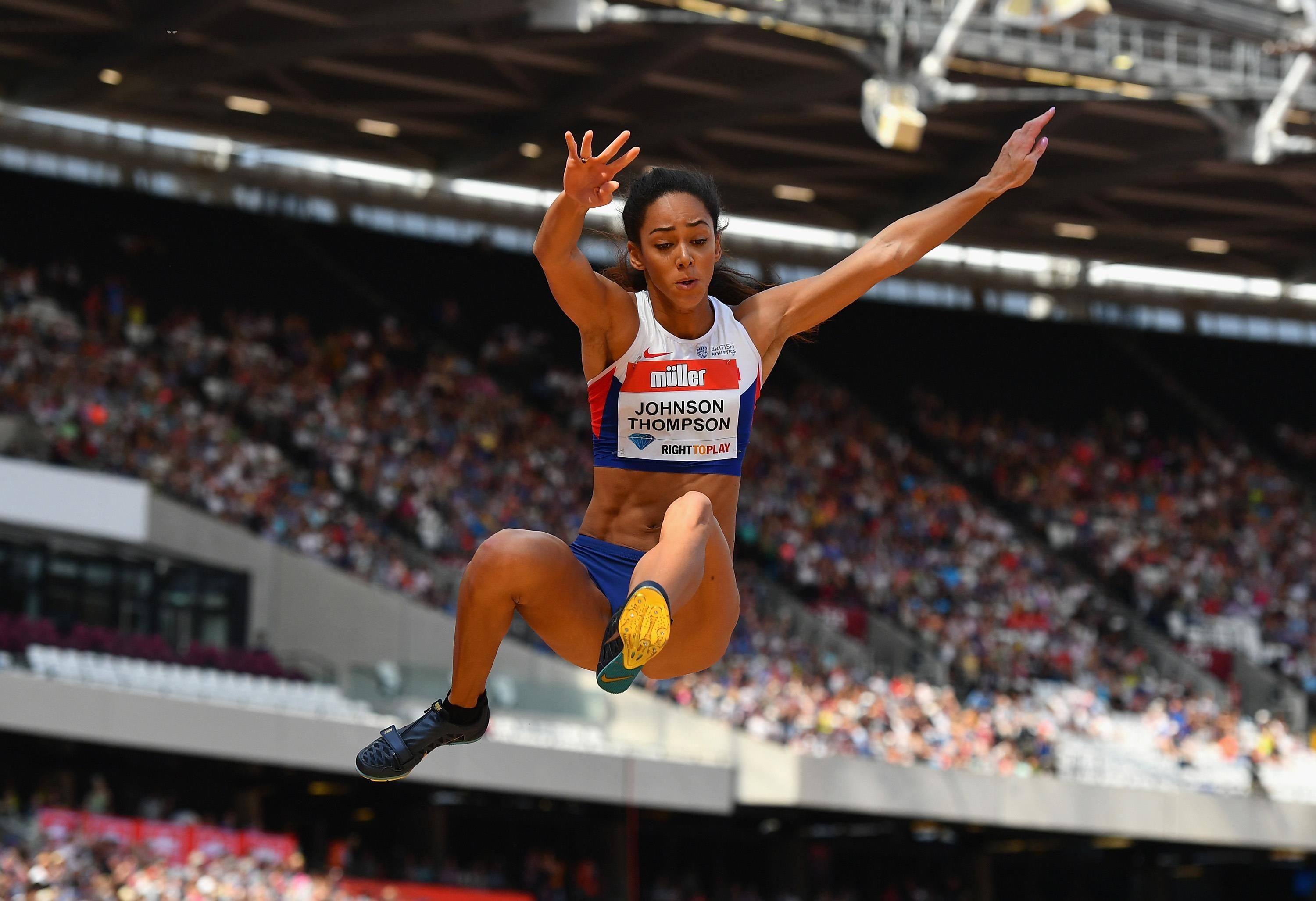
World 100m leader Bromell will be looking to bounce back after a disappointing performance in last Friday’s Herculis EBS Diamond League meeting in Monaco, where he clocked 10.01 and finished fifth in a race won by American teammate Ronnie Baker in 9.91. It was Bromell’s first 100m defeat since 2019, having won four races in 2020 and 10 this year.
Bromell, who ran 9.77 in June for the fastest time in the world this year and won the 100m in 9.80 at the US Olympic Trials in Eugene last month, will be determined to regain the form that made him the favourite for gold in Tokyo.
Bromell will go up against Fred Kerley, who qualified for Tokyo by finishing third in 9.86 at the US trials, and Canada’s Andre De Grasse, the Olympic and world 100m bronze medallist. Isiah Young, who has clocked 9.89 this season, is also in the 100m line-up, along with British sprinters Adam Gemili and Chijindu Ujah.
About 40 members of Team GB’s athletics team for Tokyo – more than half the entire squad – will be in action in Gateshead. Missing, however, will be Asher-Smith, who pulled out citing a tight hamstring. She opted not to take any risks ahead of the Olympics.
“As you all know, I love running in front of a home crowd but I have to make smart decisions for myself and my body ahead of Tokyo,’’ Asher-Smith said in a statement on Twitter. “I’m sorry to those who were hoping to see me run this week but I’m looking forward to making you all proud in a few weeks’ time.”
Asher-Smith had been scheduled to run the 200m in a marquee matchup against Thompson-Herah, the reigning Olympic 100m and 200m champion. The Jamaican will now be the favourite in a field that also includes American Tamara Clark, who finished fourth in the US Olympic Trials in a personal best of 21.98.
Hassan, the women’s world champion at 1500m and 10,000m, also withdrew due to a tight hamstring and preferring not to take any chances before Tokyo, where she looks set to contest the 5000m-10,000m double. Hasan had been scheduled to run the mile, in which she holds the world record of 4:12.33. Winnie Nanyondo of Uganda, who has a season’s best of 4:00.84 in the 1500m, and American Kate Grace, who clocked 1:57.36 for the 800m in Stockholm, now start as favourites.
The men’s mile has past winner Jake Wightman of Britain in the field along with European indoor 800m record-breaker Elliot Giles, who will be running the 800m in Tokyo.
If conditions are good, Vetter could challenge Jan Zelezny’s 25-year-old javelin world record of 98.48m. The German came close last year with a throw of 97.76m and threw 96.29m to win his event at the European Team Championships in May. Vetter has been successful competing in Britain, winning the world title in London in 2017.
Javelin records have been set in the UK before, with Zelezny throwing 95.66m in Sheffield in 1993 and Britain’s Steve Backley setting a mark of 90.98m at London’s Crystal Palace in 1990. Also in the javelin field in Gateshead are world champion Anderson Peters of Grenada and 2012 Olympic gold medallist Keshorn Walcott of Trinidad & Tobago.
Still making her way back to full fitness after an Achilles injury, Johnson-Thompson is entered in the women’s long jump, where she will take on world champion Malaika Mihambo of Germany. In Stockholm, Mihambo produced the best jump of 7.02m in the third round but settled for second place in the new final-three format when her final effort of 6.77m was bettered by the 6.88m of Ivana Spanovic of Serbia.
In the women’s 400m hurdles, 21-year-old Dutch star Femke Bol will resume her rivalry with US athlete Shamier Little for the third time this season.
(07/12/2021) ⚡AMPby World Athletics
The multiple World 3000m steeplechase champion Ezekiel Kemboi says he is satisfied with his accomplishments on the track and wants to transition to marathon races
Multiple world 3000m steeplechase champion and double-Olympic gold medalist Ezekiel Kemboi said he chose to focus on road races because he felt he had nothing left to prove on the track.
The legend, who boasts four world titles to his name, said he is satisfied with his accomplishments on the track during which he won various medals on offer, including gold, silver and bronze.
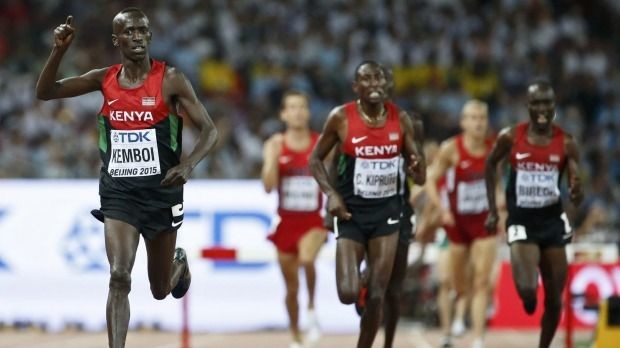
“I won everything, all the medals, and it’s like in politics, you can’t be president and come back to be an MCA,” Kemboi said.
Apart from the four gold won at the eight world championships in which he participated, Kemboi also clinched three silver medals in addition to a gold medal at the 2006 Commonwealth Games in Melbourne, Australia.
His first Olympic gold at the 2004 Olympics in Athens was followed by another at the London Olympics in 2012.

Kemboi reminisces on that win in Athens as the groundwork for what would be a colourful career of which the 2009 World Championships in Berlin stands out.
“The guys in that race were very strong. I remember around five guys who had participated in Diamond league, and I emerged a winner. That was the best race for me,” he said.
During the Rio Olympics in 2016, Kemboi stepped out of the race after being pushed by a fellow athlete.
“Some guy from Eritrea pushed me and I lost momentum, I then stepped on the inner lane and it’s a rule when you step you get disqualified. It was good for me because sometimes it’s good to have ups and downs,” he recalls.
Kemboi willingly gave away his bronze medal to the number four athlete who protested that he had broken some rule.
(07/12/2021) ⚡AMPby Laura Shatuma
Postponed 2021 Hong Kong Marathon set for October with 75 per cent cut in numbers
The twice-postponed 2021 Hong Kong Marathon, due to take place in October, will have its numbers cut by 75 per cent to 18,500, organisers have announced.
The participation numbers within the full, half marathon and 10km events has been reduced from its normal total of 74,000 as part of COVID-19 precautions.

The Hong Kong Association of Athletics Affiliates (HKAAA) said the Home Affairs Bureau had agreed in principle for the postponed event to take place but it still needed a stamp of approval from the government and Centre for Health Protection.
Organisers are seeking approval for the re-shaped event from senior Government and medical experts by August to have time to prepare for the races.
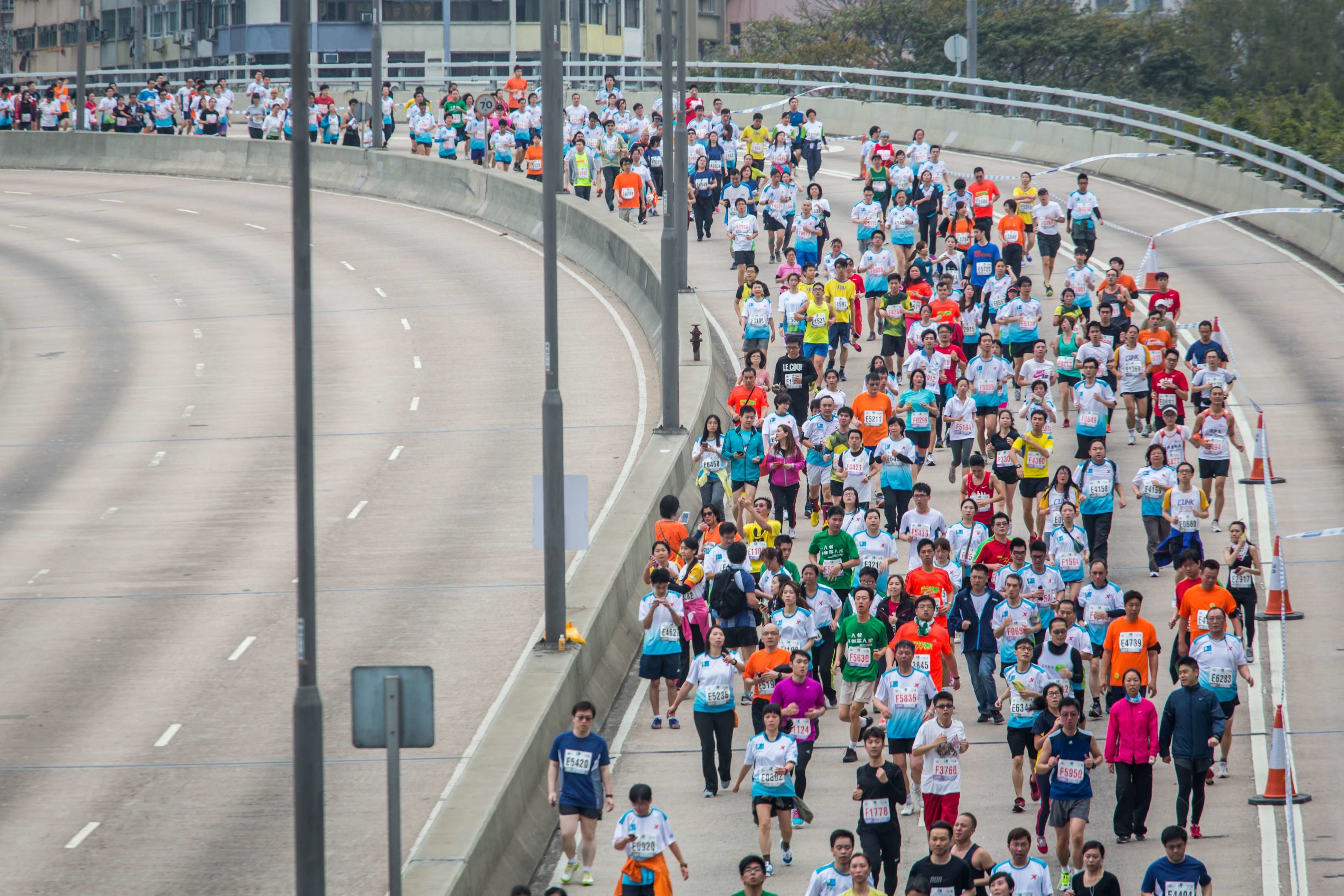
Negotiations for the latest arrangement began in March.
The 2021 race, due to take place on January 24, was postponed to April and then again to October.
The half and full marathons will accommodate 6,500 and 4,000 runners respectively, with the route largely unchanged from previous years.
The 10km race, which will involve 8,000 runners, will start at the Western Tunnel Toll Plaza as opposed to its usual location at the Island Eastern Corridor.
This is to ensure all three races share the same route to minimise the chance of COVID-19 infections.
The roll-out-style starting times remain the same despite the reduced field, with runners going off in batches of 200 to minimise contact.
All participants must be fully vaccinated at least two weeks before the race and must arrive with their masks on before the race, although they can remove them at the start line.
"The Government is eager to bring people back to normal life, and with the recent ease of the pandemic [restrictions], we are quite confident in finding a resolution to pave a way to stage the event his year," said HKAAA chairman Kwan Kee.
World governing body World Athletics said given the pandemic, there was no need to classify the event as gold-label and therefore organisers do not need to meet the "top runner" threshold.
Organisers nonetheless plan to invite elite runners from neighbouring countries who have comparatively lighter Government-imposed quarantine requirements.
They added that a bubble scenario was not feasible in terms of money and manpower.
In case the HKAAA needed to call off the event 14 days in advance, there will be a 50 per cent refund on entry fees - any later and refunds will not be offered, as is the case with many international race events this year.
Organisers have also pencilled in next year’s Standard Chartered Marathon events for February 13, 2022
(07/11/2021) ⚡AMPby Mike Rowbottom
HONG KONG MARATHON
The Hong Kong Marathon, sponsored by Standard Chartered Bank, is an annual marathon race held in January or February in Hong Kong. In addition to the full marathon, a 10 km run and a half marathon are also held. Around 70,000 runners take part each year across all events. High levels of humidity and a difficult course make finishing times...
more...History of track and field at the Olympics
Track & field events at the Olympics make use of some of the most basic physical maneuvers that human beings perform, so it’s no surprise that it has a long and storied past. Every event uses running, jumping, and throwing, simple and necessary movements used by early humans to survive, hunt, make war and have fun. Let’s take a look at the origins of track & field events, from their inclusion in the ancient Olympics to today.
If you’re interested in betting on track & field today, you should check out sportsbooks that take wagers on those events, like Fanduel.
Origin At The Ancient Olympics
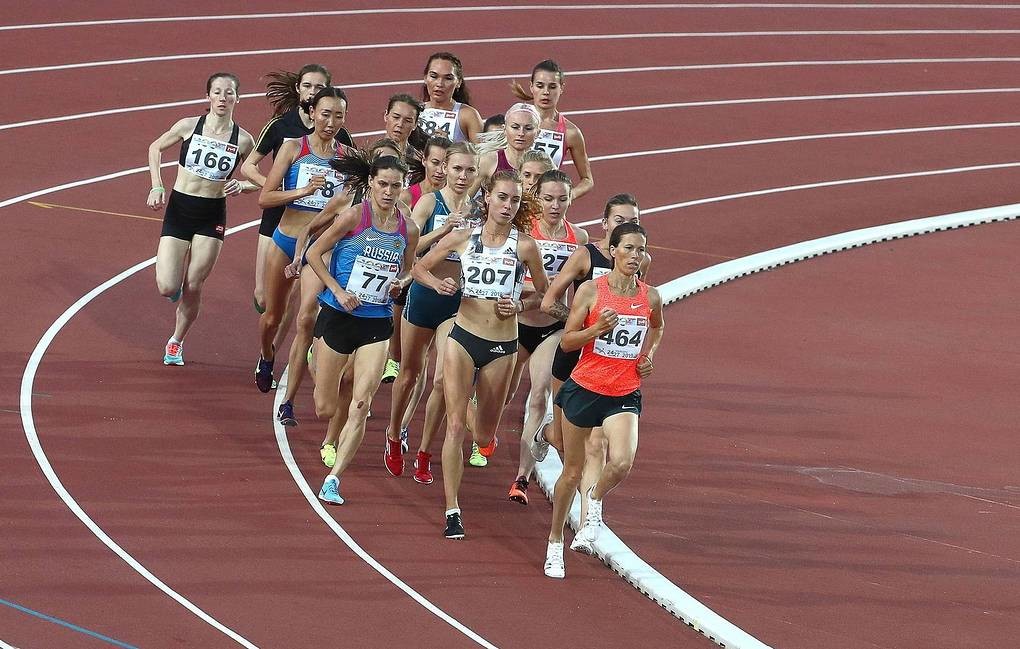
As we said, the origin of track & field is thought to come from human prehistory. Where the Olympics is concerned, however, we can point to the Ancient Olympic Games. While the first Olympic games used the stadion, a simplistic footrace. It was the pentathlon years later that created what we could call the first track & field events. This combined the stadion event with the javelin throw, the discus throw, and the long jump, before a finale where athletes wrestled one another. The first pentathlon was held at the 18th Ancient Olympics, which took place in 708 B.C. That’s 2,700 years ago!
Track & field events were also performed at the Panhellenic Games, where they then eventually spread to Italy and then into Northern Europe throughout the Middle Ages (500 – 1500 A.D.) These events kept track & field activities alive till the revival of the Olympic Games.
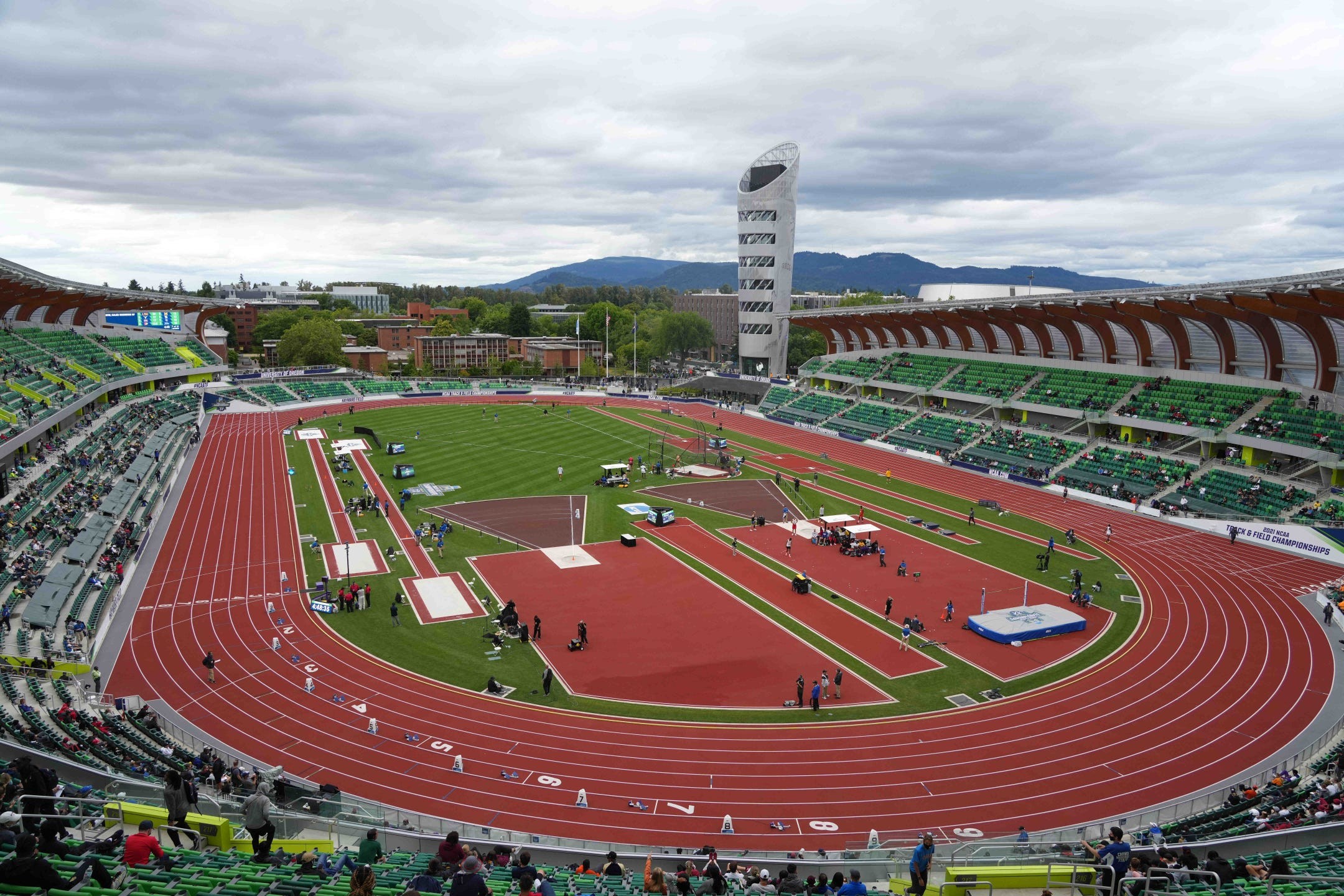
Revival At The Olympic Games
The Olympic Games as we know it today returned in 1896 with the Athens Summer Olympics. Bringing together fourteen nations who fielded over two hundred athletes, they competed across forty events. One of those events combined track & field activities with the marathon as part of their athletics program.
It is thought that its inclusion was because of numerous athletic clubs in Britain and America during the 1800s, where public schools and military academies started using track & field training which then developed followings from those who wanted to engage in those activities for leisure purposes.
The Olympics struggled for its next gatherings after 1896. This changed in 1912 with the so-called Swedish Masterpiece, where the fifth Olympic Games went off without a hitch in Stockholm and attracted massive appeal. It was also the last event to use solid gold medals and the first time they welcomed an Asian nation, Japan, to join the games.
At these games, the track & field event wasn’t without controversy. Pentathlon winner Jim Thorpe was revealed to have played baseball for money in the past, technically breaking the amateurism rules enforced at the Olympics, and so his track & field medals were stripped. They were reinstated 29 years after his death.
The International Amateur Athletic Federation, the IAAF, then became the governing body for track & field events.
From The ‘60s To Now
Over the course of the century, the Olympic Games steadily became the most popular and prestigious athletic event, and track & field was along for the ride. Multi-sport events like track & field inspired similar activities in the Commonwealth Games and the Pan-American Games. As televisions became more mainstream in the 60s, worldwide audiences could now view and become fans of specific track & field runners. This gradually overthrew their amateurism rule as Olympic performers became professional athletes.
Something else was also going on in the world during the 60s, the Cold War. While the war was silently raging in the background, the Olympics became a battleground where athletes from the USA and the USSR clashed across multiple sports, including track & field.
From the 90s onward, the popularity of the sport would only improve as the IAAF grew. The IAAF now hold their own events too, where track & field athletes test their mettle outside of the Olympics. At the last Olympic Games, in Rio de Janeiro, track & field events were hosted.
(07/11/2021) ⚡AMPby Colorado Runner
Tokyo 2020 Olympic Games
Fifty-six years after having organized the Olympic Games, the Japanese capital will be hosting a Summer edition for the second time, originally scheduled from July 24 to August 9, 2020, the games were postponed due to coronavirus outbreak, the postponed Tokyo Olympics will be held from July 23 to August 8 in 2021, according to the International Olympic Committee decision. ...
more...Olympic champion Usain Bolt will be running 800m race as a promotion for CarMax
The reigning 100m and 200m Olympic champion is coming out of retirement for one race and one race only — not in either of his signature events, but in the 800m. Usain Bolt, who recently became the father of twins, will be making a brief comeback to run a promotional race for the used vehicle retailer, CarMax.
Bolt, whose 13-year reign as Olympic champion is set to come to an end this summer, said in an interview with NBC Sports that he’s enjoying being back on the track. “I definitely miss it a little bit,” he said. “I’m excited to be training and just running and seeing what I can do.”
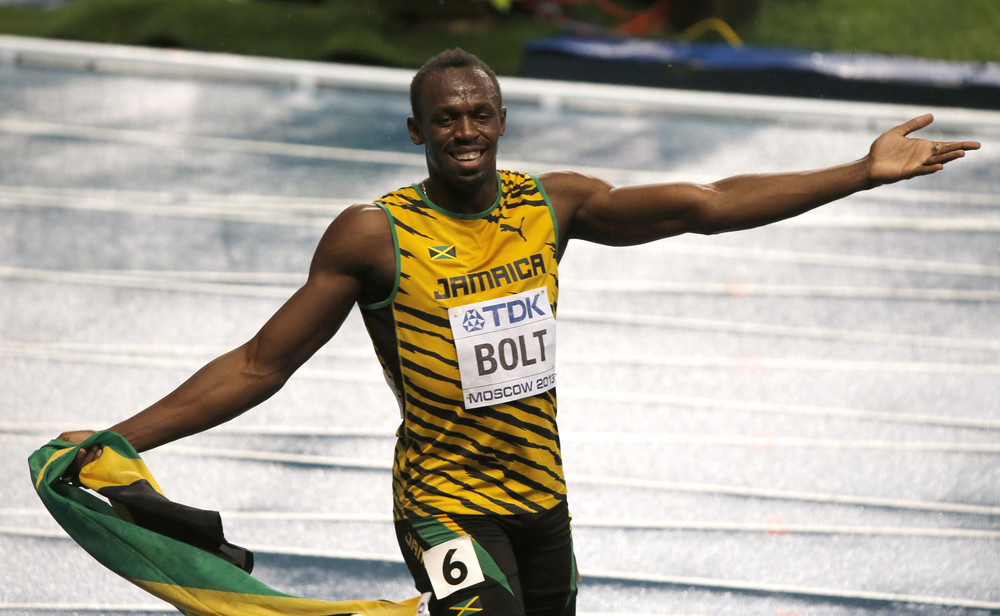
To get ready for the race, Bolt has been riding his Peloton bike and hitting the track for some interval sessions. “Just to get my legs ready for the lactic acid and my lungs for the air that I need,” he explained. His best time over 800m is 2:05, but he says he did that without spikes. “If I put the spikes on, I can make it under 2 minutes,” he insisted.
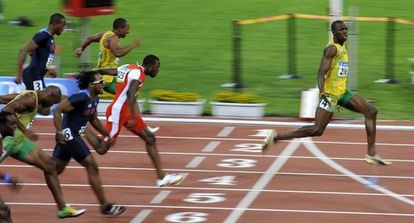
The race is set to take place on July 13, and will be broadcast on his Facebook page. He won’t be racing against anyone, and instead, his opponent will be a CarMax customer who is getting an instant online offer for a vehicle on their phone while Bolt sprints around his home track. Much to his fans’ disappointment, he made it clear that no, this is not a sign of a future comeback.
“Definitely not,” he said. “This is just a one-off challenge to see if I still got it.”
(07/11/2021) ⚡AMPby Brittany Hambleton
2016 Olympian Melissa Bishop-Nriagu wins Sunset Tour 800m
A few of Canada’s top middle-distance runners toed the line in Sacramento, California on Saturday, and it was Melissa Bishop-Nriagu who stole the show yet again. The 2016 Olympian took the win in the women’s 800m in a season’s best time of 1:58.36, a performance that bodes well for her as she heads to the Olympic Games in just a couple of weeks’ time.
There were several strong performers on the line with Bishop-Nriagu, including Canadian 800m champion Lindsey Butterworth and Natalia Hawthorn. The race was tightly packed, and the second and third-place finishers, Americans Sadi Henderson and Sabrina Southerland. crossed the line close behind Bishop-Nriagu in 1:58.62 and 1:58.77, respectively.

Butterworth also ran a strong race, finishing under two minutes for the second time in her career in 1:59.86 for fourth place. Hawthorn, who has been selected to Team Canada for the 1,500m, was just a couple of seconds back, crossing the line in 7th place in 1:02.35.
Toronto’s Sasha Gollish was the only other Canadian competing in Sacramento and placed 9th in the women’s 1,500m in 4:19.39. American runner Sara Vaughn won the race in 4:07.81, followed by Emily Infeld in 4:08.06 and Laura Galvan in 4:08.10.
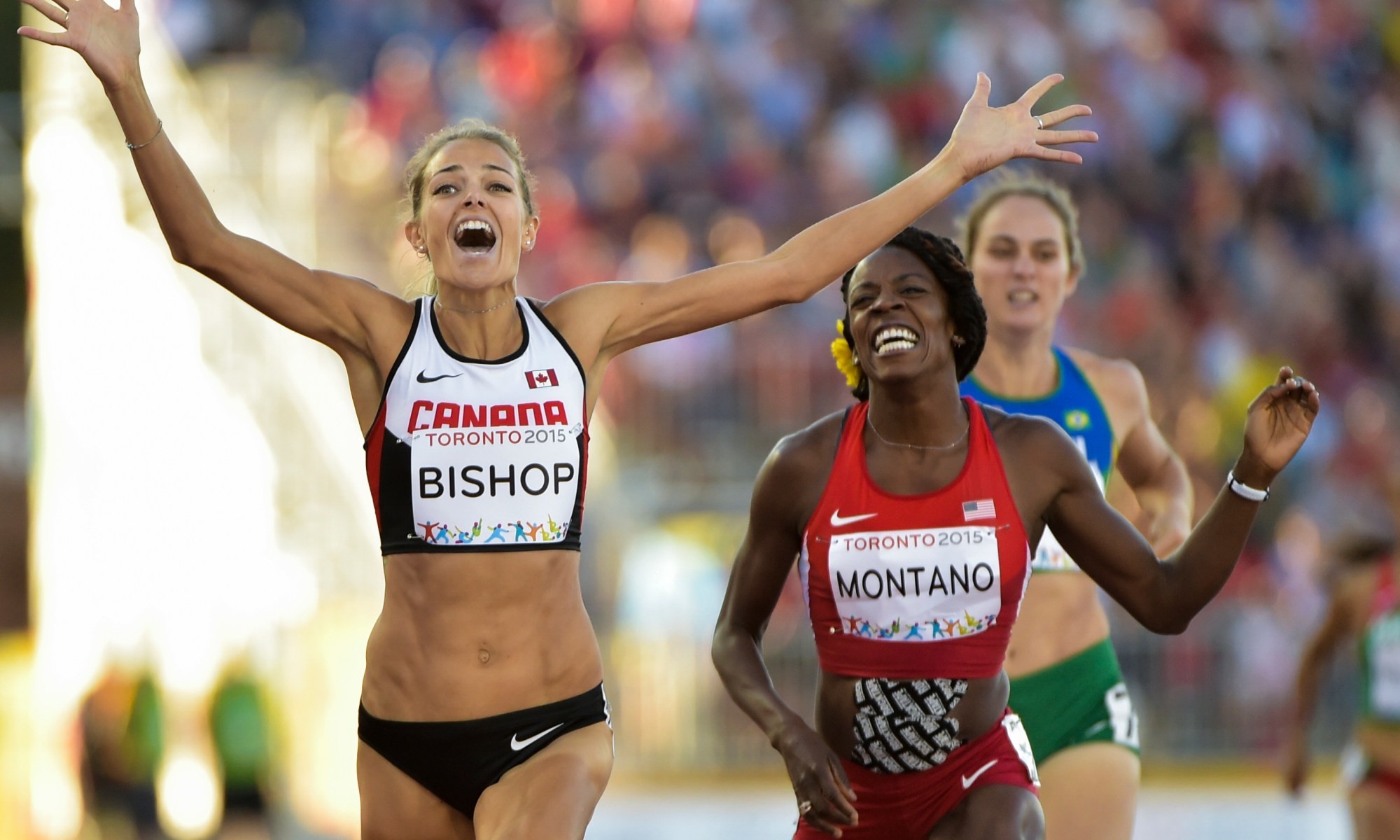
This was the first meet in the Sunset Tour. Next in the series is the s So Cal at Trabucco Hills High School on July 18, followed by the third and final installment at Mt. Sac on July 21.
(07/11/2021) ⚡AMPby Brittany Hambleton
Does ultrarunning make you smarter?
There are plenty of reasons why ultrarunners do what they do: to challenge themselves mentally and physically, to explore a new area and to enjoy the great outdoors are just a few of the more common ones. Thanks to a group of scientists, ultrarunners everywhere can add one more item to that list: it’s good for your brain.
The authors of the study, which was published in June in the scientific journal Medical Science Monitor, wanted to find out how ultrarunning affects brain tissue. Specifically, they wanted to investigate if running long distances had an impact on brain volume. To do so, they recruited 23 healthy males runners, who they classified as either short-trail or ultra-trail endurance runners. They then had the short-trail group run a 38.6K mountain race, while the ultra trail group ran a 119.8K mountain race.

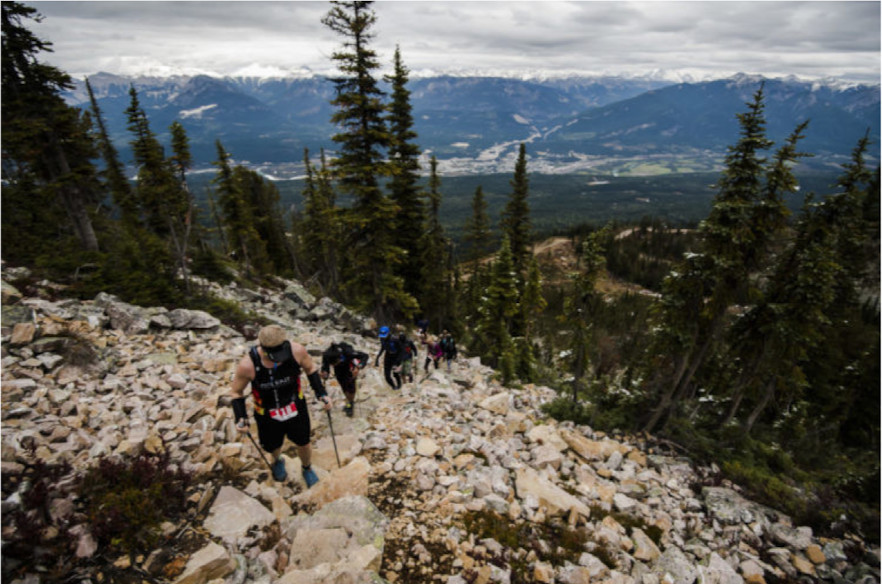
The researchers took MRI scans of the brains of each participant both before and after their races. They found that the volume of gray matter in the brains of both the short trail and long trail runners had significantly increased after their races.
The gray matter in your brain plays a role in memory and executive function, which affects your cognitive performance, balance and co-ordination. Additionally, studies have shown that having more gray matter in your brain is linked to a greater level of intelligence. As we age, we tend to lose brain volume and gray matter, which leads to age-related cognitive diseases like dementia.
The authors of this study concluded that endurance running may help prevent a loss of brain volume and gray matter as you age. It appears that ultrarunners experience the most significant effects, but even runners who go out for 50 kilometres or more can reap the brain-boosting benefits of running. As for whether ultrarunning makes you smarter, the authors didn’t say, but boosting your brain volume certainly won’t do the opposite.
(07/11/2021) ⚡AMPby Running Magazine
Should you wear minimal, maximal or traditional shoes?
Shoe science has progressed rapidly over the years, and in that time physical therapists, sports scientists and runners have formed many different opinions on what type of shoe is best. There are those who are firm advocates for minimalist footwear, those who believe in maximum cushioning for a softer landing and those, of course, who fall somewhere in between. But is there a right answer? In a recent study published in the journal Footwear Science, researchers tested minimal, maximal and traditional shoes to understand how they impacted runners’ bodies, and these are the results.
To assess the differences between the three types of footwear, researchers used a “muscular simulation” to examine running biomechanics in minimal, maximal and traditional running shoes for 13 male runners. They filmed the runners as they ran over a force plate and analyzed the results using various forms of statistical analysis.

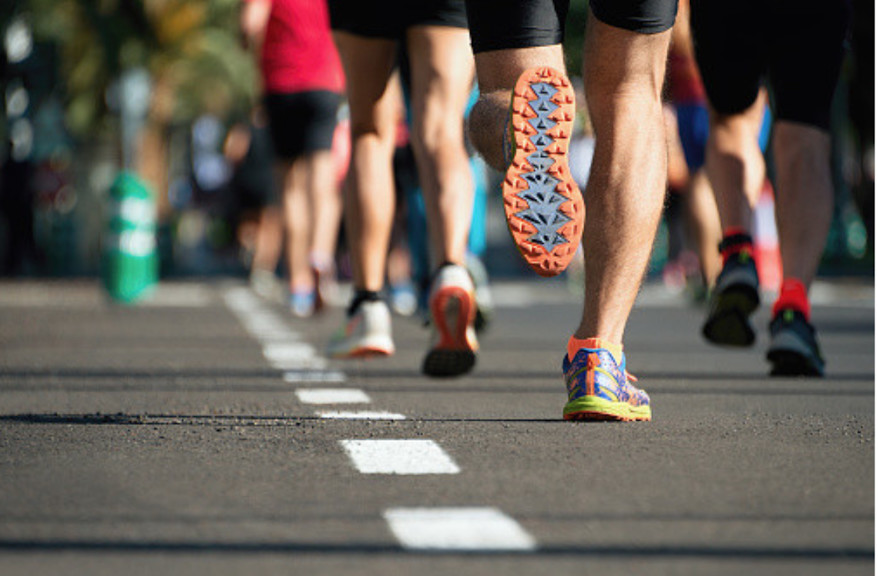
The results
The results showed that minimalist shoes increased forces on runners’ glutes, hips and Achilles compared to other types of footwear. Traditional footwear, on the other hand, increased forces on the muscles surrounding the knees and the knee joint itself. Maximal shoes increased the runners’ ankle eversion (when the sole of the foot turns outwards, putting more pressure on the inside of your foot), which puts more pressure on the shins compared to other types of shoes.
What does this mean for runners? If you’ve recently changed your shoes and you’re noticing some aches or pains that you hadn’t felt previously, it could be the shoes. Looking at this information, you may want to consider your own injury history when purchasing your next pair of shoes. For example, if you have a history of knee problems, a more minimalist shoe might be a better option for you, but if your Achilles is the issue, a traditional shoe might be a better bet. Of course, if you are often plagued by chronic injuries, it is probably a better idea to talk with a physiotherapist or sports doctor to try and understand what’s going on biomechanically that’s causing your aches and pains — a new pair of shoes certainly won’t solve all your problems.
So is there a right answer to the “which shoe is best” debate? Sorry to disappoint, but as of now, it appears there isn’t. There is a wide variety of shoes available to suit a wide variety of runners, which means that each of us has to do the somewhat frustrating work of determining which shoe is best for us.
(07/11/2021) ⚡AMPby Running Magazine
Black Toenails Is an injury that is totally preventable so why is it something many athletes aspire to achieve?
Seven years ago, when I first entered the world of marathons, I joined a group of runners who, on our very first long run, let me know the chaos that training for 26.2 miles would bring. Being the newbie to the club, I was schooled and taunted by the veterans. They made me feel like my measly 5K and half marathon finishes were nothing. They warned of the 20-miler ahead, insufferable track workouts, and bizarre bodily reactions to the new, great distances.
For instance, they said I would suffer the burn of chafed skin. They explained I would likely experience the strange dichotomy between the urgent need to poop halfway through a training run and the impossibility of pooping on race day morning. And then, a man with a shaved bald head and sunburned scalp told me that if I was lucky, and if I trained hard enough, my toenails would turn black. He reveled in the pride of his own bruised nail beds.

“Ah yes, the first time I ever got one was my first marathon,” he said, remembering it, like he should have earned a Purple Heart. He gave us the current status of his feet: His left big toenail had fallen off, his right big toenail was permanently blue. The others in the group laughed and nodded along. Many said they, too, had mangled toenails.
“But doesn’t that hurt?” I asked.
“Sometimes,” the sunburned man said. “But it shows you are putting in the work.”
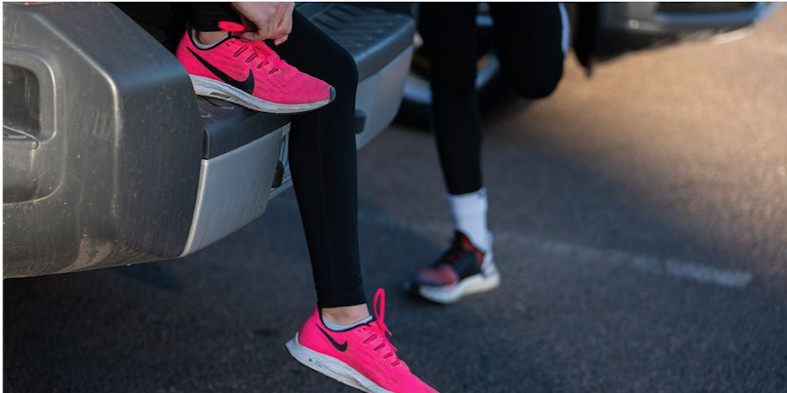
At first I did not believe that experiencing disfigurement was a necessary part of marathon training. But of course, I had never run the distance before. I wondered how many miles it would take for me to earn my first black toenail. I did research. I read how the impact of a toe repeatedly bashing up against the inside of a shoe can cause a toenail to bruise. My Google searches said that it happens to runners tackling longer distances. It sounded like the sunburned bald man was right. This magical rite of passage would confirm that I could tolerate long miles and prove I was a real runner.
Beginners seldom suffer black toenails because they do not yet have the number of foot strikes that would warrant one, Runner’s World previously reported. I felt like my perfectly pedicured toes were a telltale sign that I was new to longer distances. As I reached my peak training weeks, I checked my feet nightly half hoping a nail bed would appear purple at the very least.
Now, after three marathon training cycles, a lot of miles, and totally normal toenails, I wonder: What exactly does the black toenail prove? Maybe the toenail reminds us of all the miles and pain we have endured, acting as a visible representation of the sacrifice of the runner. Perhaps it announces to the world (if the afflicted is so bold as to wear flip flops, which those in this tribe so often are): “Hey, I am a runner. And I’m a serious runner, too.” But why do we need the reminder—and why would we need to show off the pain of training if we know we’ve left our best out on the road?
During that first training cycle, as I longed for a black toenail, I unwittingly prevented trauma to my feet by making sure my shoes fit well. I had visited a local running shop and purchased a pair that was a thumb-width distance from the tip of my longest toe to the end of my shoe. I wore thin socks, clipped my toenails short, and laced my shoes to ensure they were not too snug or loose. That’s the thing: Black toenails are generally pretty easy to prevent, even if you are running long distances, even if you are actively trying to cause one.
I wondered, too, why so many experienced runners get them. Maybe the shoes they adore and refuse to give up don’t have enough room for their feet. A heavy foot strike causes more intense microtraumas than someone lighter on their feet, research in Podiatry Today suggests. Like any injury, the volume of miles tolerated by one runner could damage another.
So, let’s say you do everything right, and you just run so much that your tiny toenails slowly turn purple, blue, and black—why is this considered positive? How have we let what is essentially a gear problem, or an overtraining injury, become something a group of athletes aspires to achieve?
The running community really leans into the “no pain, no gain” fallacy. We thrive on the agony of the miles and brag about how far, how fast, how much we push ourselves. But running doesn’t have to be treacherous. Yes, the sport is hard—you might feel out of breath, your leg muscles might feel exhausted, or your feet could ache. Those sensations are normal. But you can make progress without tormenting yourself. And to be real, if you’re training at the paces you’re supposed to, the biggest anguish you’ll likely face is boredom on a long run.
Perhaps runners have too much of a dependence on suffering. Celebrating black toenails is representative of an overall ethos that encourages runners to push past the point of pain. It’s time to change that line of thinking. Running—any distance at any pace in any circumstance—is already challenging enough. Let’s give ourselves and each other a break and applaud our ability to run, not our dedication to discomfort. A “real runner” is not determined by how much they hurt or how messed up their feet look. Real runners take care of their bodies and real runners can make it to the finish line unscathed.
If, for whatever reason, your poor toes get beat up as you train, it happens. Accept it, treat it (here’s how!), check your shoes and your socks, and be kind to those little appendages as they heal. But do not buy into the culture of the sunburned bald man. Those who are wounded in marathoning action, who believe they are tougher, stronger, and more genuine runners because of their tar-colored toenails, are mistaken. Anyone who runs is a real runner, regardless of the color of your toes.
(07/11/2021) ⚡AMP
by Runner’s World
2021 Hardrock 100 Preview
Come the morning of Friday, July 16, 146 lucky runners will set off for 100 miles of beauty and challenge through southwestern Colorado’s San Juan Mountains in the Hardrock 100. Along the way, they’ll climb (and descend) 33,000 feet, all at elevations of up to 14,000 feet. The course switches direction with each event edition, and 2021 sees the route run in a counterclockwise direction.
Despite the insistence of some that it’s a ‘run’ rather than a ‘race,’ there’ll certainly be some at the front of both fields going for the win or another top position. This year’s edition will feature strong women’s and men’s races for the win, even if there’s not the competitive depth that the larger fields of other events allow. In the women’s race, we’ll see defending champ Sabrina Stanley challenged by Hardrock newcomer Courtney Dauwalter and three-time winner Darcy Piceu. The men’s returning champion, Jeff Browning, may have even taller task in holding off a pair of talented Hardrock first timers in François D’haene and Dylan Bowman. We dive into the details of each field below!

2021 Hardrock 100 Women’s Preview
Despite only 16 of the 146 runners slated to start this year’s Hardrock at the time I’m writing this, it wouldn’t surprise me if three of this year’s overall top 10 were women. In fact, we could see a pair in the top five if things play out just so.
It’s also worth keeping Diana Finkel’s course record of 27:18:24 from 2009 in mind. She set the course record traveling in the counterclockwise direction, the same direction as this year’s event. It’s also fun to note that the three-fastest ever women’s times at Hardrock were run in this counterclockwise direction.
Although she’ll be a Hardrock rookie, Courtney Dauwalter has to be the women’s favorite at this year’s race. In recent years, she’s won the 2019 UTMB, 2019 Madeira Island Ultra Trail, 2018 Western States 100, and 2018 Ultra-Trail Mount Fuji 100 Mile. Just a few week ago, she set a new course record at the San Juan Solstice 50 Mile, run not far to the east of the Hardrock course. What’s more, Courtney now bases herself up at 10,200 feet in Leadville, Colorado, so she’s plenty accustomed to the thin air she’ll find along the Hardrock cour
Sabrina Stanley returns to Hardrock as the defending women’s champion, having won the 2018 race in 30:23. Since then, she’s won the Hurt 100 Mile (2019) and Diagonale des Fous (2019) along with the shorter Mount Cheaha 50k in February 2020 and Quest for the Crest 50k this May. Last year, Sabrina managed to set the women’s supported FKT for Nolan’s 14—twice. A resident of Silverton, Colorado, she’s fully acclimated to the altitude and knows the course well.
If there’s a current Queen of Hardrock, it’s Darcy Piceu with her three Hardrock wins (2012-14) among her seven finishes while she continues to be a near lock for the women’s podium any given year. Indeed, she finished second in 2015 and 2017, her two most recent runs at the race. More impressively, she has twice as many sub-30 hour Hardrock finishes (six) than another other woman (Diana Finkel has three), and, as far as consistency, Darcy has finished all seven of her Hardrocks between 28:57 and 30:15!? Back in 2018, Darcy won both the Andorra Ultra Trail and Angeles Crest 100 Mile. Darcy did battle a serious injury earlier this year, but bounced back with a win at the Jemez 50 Mile in late May and a second at the Squaw Peak 50 Mile in mid-June.
Meghan Hicks has a pair of Hardrock finishes, with a rough 39-hour finish in 2015 and an improved 34:25 in taking fifth in 2016. In 2016 and again in 2020, she set the then women’s supported FKT for Nolan’s 14. This spring, she took third at Scout Mountain 50 Mile. More important, she’s been living and training on the course since March.
2021 Hardrock 100 Men’s Preview
While this will be his first time running the race, that makes France’s François D’haene no less of a favorite to win this year’s Hardrock. Why? He’d be on a very short list of best mountainous 100-mile trail runners in the world with three wins at UTMB (2012, 2014, and 2017) and four wins at Diagonale des Fous (2013, 2014, 2016, and 2018). Without Kilian Jornet, Xavier Thevenard, or, maybe, Jim Walmsley (he knows these mountains well) here, it’s François’s race to lose outside of the San Juan Mountains and the challenges they hold taking it from him. After a light 2020, François tuned up for Hardrock in taking third at the 112k Ultra Cabo Verde Trail in May. It’s worth noting that when snow canceled Hardrock in 2019, he came over and spent a few weeks training on the Hardrock course anyway and he’s back in the area acclimating and scoping the course for at least two weeks again this year.
After trying to get in for seemingly forever, Dylan Bowman will be another Hardrock rookie challenging for the men’s win. Bowman’s damn good at mountainous 100 milers and spent plenty of years living and training in the Colorado Rockies. Among the reasonably recent results that show his chops in the mountains are a third at Transgrancanaria in 2020, wins of Ultra-Trail Mount Fuji in 2016 and 2019, and a seventh at UTMB in 2017. While he lives in Portland, Oregon these days, he’s been living at altitude in Mammoth Lakes, California and training in the Sierra Nevada for much of the past month.
Jeff Browning returns to Hardrock as the defending champion, from winning in 26:20 back in 2018 following the disqualification of Xavier Thevenard. Among his three other Hardrock finishes, he took fourth in 25:42 in 2016 and fourth in 26:58 in 2014. Earlier this year, he won the Zion 100 Mile. Late last month, Browning dropped out midway through the Western States 100 due to dead quads and wanting to save something for Hardrock. In 21 years of running ultras, it’s only the second time he’s DNFed a race, with the other being due to a sprained ankle at UTMB 2015. Browning will be 49 years old on race day.
High-altitude 100 milers seem to suit Ryan Smith, who won Leadville in 2019 and High Lonesome in 2018. Going back a few years, Smith was ninth at UTMB in 2015 and 22nd there the following year. Other top results include fifth at the shortened to 47k Ultra-Trail Mount Fuji in 2016 and 16th at the 85k Trail World Championships at Penyagolosa in 2018.
One shouldn’t underestimate Trevor Fuchs on a mountainous 100-mile course. He’s won the Hurt 100 mile in 2020, taken second at the Bear 100 Mile in 2019, and won the Wasatch 100 Mile in 2016 and 2017. I’m looking forward to finally seeing Trevor race in person.
Although it’s been quite a while, Julien Chorier has twice run Hardrock, winning in 2011 in 25:17 and taking second to Kilian Jornet in 2014 in 25:07. This Frenchman may no longer be able to run that fast of a time, but he continues to have success, placing ninth at TDS and seventh at Ultra Pirineu in 2018 and finishing fourth at Transgrancanaria and 17th at UTMB in 2019. Earlier this year, Chorier took 13th at Transgrancanaria.
If you’re going to follow this year’s Hardrock, you should know Troy Howard, who finished third in 2018 after finishing second in both 2009 and 2013. One could be worried that he took 14th at the relatively small San Juan Solstice 50 Mile in late June, but he was 12th there in 2018 ahead of his third place at Hardrock. Troy simply knows what he needs to do for a good finish at Hardrock. I should add that Troy will be 48 years old on race day. That goes along with Browning at age 49, Smith at 42, and Chorier at 40. That’s a solid masters field right there!
(07/11/2021) ⚡AMPby I Run Far
Ruy Ueda Wins Skyrunning World Championships Vertical Kilometer
Even after the sport came to a standstill for a year, Japan's Ruy Ueda has continued his climb up the ranks. The Skyrunning World Championships kicked off July 9 in Catalunya, Spain, as part of the BUFF Mountain Festival. Going head to head with Europe's best, Ueda crowned the first day of the Championships by winning the vertical kilometer race. It was his first individual world title since being named the 2019 Syrunner World Series champion, and he aims to make it a double crown in Sunday's Sky Race.
The vertical race at this year's World Championships climbs 1000 m over a 2.8 km course from town of Barruera. Immediately going to the front of the field of 33, Ueda had a 7-second lead by the 2.2 km checkpoint after 481 m of climb. He held his lead from there, crossing the finish line in 35:06 to claim the world title. In 2016 he was 10th on the same course in 36:27 at that year's World Championships.
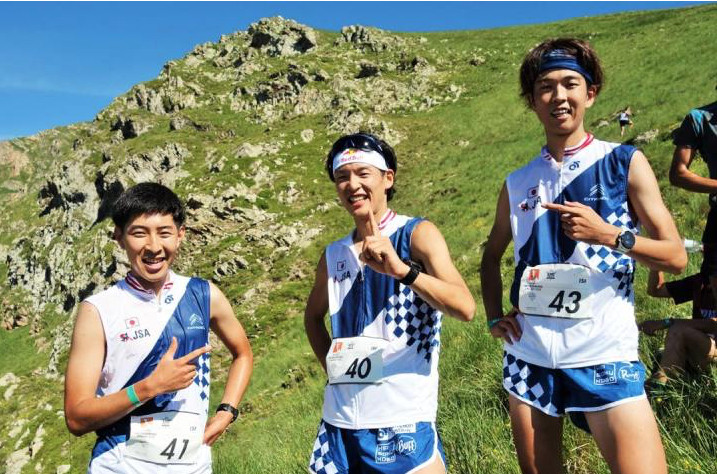
32 seconds back in 2nd was Spain's Daniel Osanz Laborda, 23, the 2018 and 2019 Youth World Championships gold medalist and 2019 Vertical Kilometer World Circuit champion. Switzerland's Roberto Delorenz was 3rd another 17 seconds back, also 23 and likewise a division champion and the 2017, 2018 and 2019 World Youth Championships.
While the men's race was close, Czech runner Marcela Vasinova easily dominated the women's field of 20, winning by more than two minutes in 41:00. Last year Vasinova won the Swissalpine Davos 68 km and Matterhorn Ultraks 25 km and was 7th in the Golden Trail Championships in the Azores. Just last weekend she took 5th in the Marathon du Mont-Blanc. 2nd in 43:14 was Spain's Oihana Kortazar Aranzeta, 3rd at last month's Olla de Nuria. France's Iris Pessey was 3rd.
Among the other members of the Japanese national team, Ryunosuke Omi was 7th and Masato Kamishohara 19th in the men's race, with Suzuha Kusuda 15th and Ayaka Ueda 17th in the women's race. The Skyrunning World Championships continue Saturday with the 68 km Sky Ultra Race, then wrap up Sunday with the 42 km Sky Race. Ueda is entered in the Sky Race, aiming for a second world title to go with his Vertical title on the opening day and the combined title.
Vertical Kilometer results:
Women
1. Marcela Vasinova (Czech Republic) - 41:00
2. Oihana Kortazar Aranzeta (Spain) - 43:14
3. Iris Pessey (France) - 44:26
4. Lina ElKott Helander (Sweden) - 45:18
5. Silvia Lara Dieguez (Spain) - 45:46
-----
15. Suzuha Kusuda (Japan) - 52:04
17. Ayaka Ueda (Japan) - 52:56
Men
1. Ruy Ueda (Japan) - 35:06
2. Daniel Osanz Laborda (Spain) - 35:38
3. Roberto Delorenzi (Switzerland) - 35:55
4. Manuel Da Col (Italy) - 36:05
5. Oscar Casal Mir (Andorra) - 36:52
-----
7. Ryunosuke Omi (Japan) - 37:44
19. Masato Kamishohara (Japan) - 41:59
(07/11/2021) ⚡AMPby Japan Running News
The Belfast man was due to make his first appearance at an Olympics in Tokyo but will now not compete as he struggles with mental health issues.
"I will not be going to Tokyo Olympics & until I feel in a better place with mental health I am taking some time to myself," Scullion tweeted on Saturday.
"Sometimes in life you have to do what is right, and I need to find a happy place," he added.
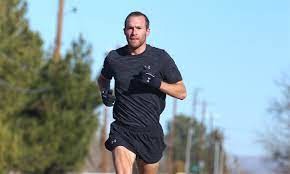
"I apologise to anybody who has supported me until now and feels lets down."
"It's ok to struggle. I promise you we all struggle and I'm sorry that it's not easier to open up," Scullion had said in an earlier tweet on Friday.

"I'm sorry that as a society it's seen as weakness struggling with mental health. It's not, and we need to talk about it more, and how to cope."
Scullion's scheduled maiden participation in the Olympic men's marathon had been confirmed on June 15.
Ireland will be represented in the event by Paul Pollock and Kevin Seaward, who both ran at the 2016 Rio Games.
(07/10/2021) ⚡AMPTokyo 2020 Olympic Games
Fifty-six years after having organized the Olympic Games, the Japanese capital will be hosting a Summer edition for the second time, originally scheduled from July 24 to August 9, 2020, the games were postponed due to coronavirus outbreak, the postponed Tokyo Olympics will be held from July 23 to August 8 in 2021, according to the International Olympic Committee decision. ...
more...Japan named host nation’s team for Olympic Games
Japan has named a team of 65 athletes to represent the host nation at the Tokyo Olympic Games.
The line-up features world 20km race walk champion Toshikazu Yamanishi along with four members of the 4x100m squad that took bronze at the World Athletics Championships Doha 2019.
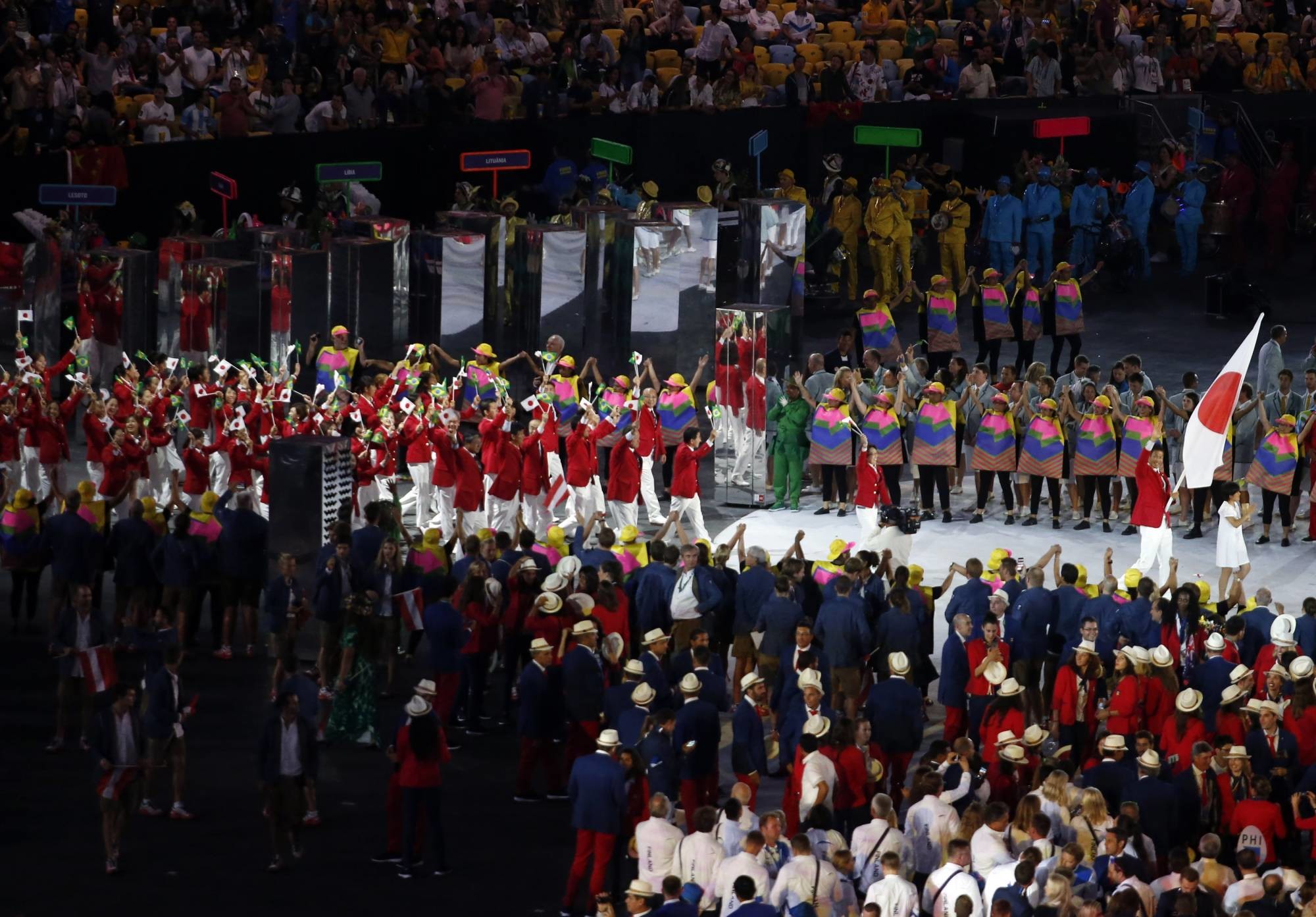
Thirteen individual national record-holders have also been selected, including 100m sprinter Ryota Yamagata, middle-distance runner Nozomi Tanaka, sprint hurdlers Shunsuke Izumiya and Asuka Terada, race walker Masatora Kawano and javelin thrower Haruka Kitaguchi.
Japan had named its marathon squad last year following a highly competitive selection process.

Japanese team for Tokyo
WOMEN
1500m: Nozomi Tanaka, Ran Urabe
5000m: Kaede Hagitani, Ririka Hironaka, Nozomi Tanaka
10,000m: Yuka Ando, Ririka Hironaka, Hitomi Niiya
Marathon: Mao Ichiyama, Honami Maeda, Ayuko Suzuki
3000m steeplechase: Yuno Yamanaka100m hurdles: Masumi Aoki, Ayako Kimura, Asuka Terada
Javelin: Haruka Kitaguchi
20km race walk: Nanako Fujii, Kaori Kawazoe, Kumiko Okada
4x100m: Hanae Aoyama, Yu Ishikawa, Mei Kodama, Ami Saito, Remi Tsuruta,
MEN
100m: Yuki Koike, Shuhei Tada, Ryota Yamagata
200m: Shota Iizuka, Hakim Sani Brown, Jun Yamashita
400m: Julian Walsh
5000m: Yuta Bando, Hiroki Matsueda
10,000m: Akira Aizawa, Tatsuhiko Ito
Marathon: Yuma Hattori, Shogo Nakamura, Suguro Osako
3000m steeplechase: Ryoma Aoki, Ryuji Miura, Kosei Yamaguchi
110m hurdles: Shunsuke Izumiya, Taioh Kanai, Shunya Takayama
400m hurdles: Kazuki Kurokawa, Abe Takatoshi, Hiromu Yamauchi
High jump: Takashi Eto, Naoto TobePole
vault: Masaki Ejima, Seito YamamotoLong
jump: Yuki Hashioka, Hibiki Tsuha, Shotaro Shiroyama
Javelin: Takuto Kominami
20km race walk: Koki Ikeda, Eiki Takahashi, Toshikazu Yamanishi
50km race walk: Hayato Katsuki, Masatora Kawano, Satoshi Maruo
4x100m: Bruno Dede, Yoshihide Kiryu, Yuki Koike, Shuhei Tada, Ryota Yamagata
4x400m: Rikuya Ito, Kaito Kawabata, Kentaro Sato, Aoto Suzuki, Julian Walsh.
(07/10/2021) ⚡AMPby World Athletics
Tokyo 2020 Olympic Games
Fifty-six years after having organized the Olympic Games, the Japanese capital will be hosting a Summer edition for the second time, originally scheduled from July 24 to August 9, 2020, the games were postponed due to coronavirus outbreak, the postponed Tokyo Olympics will be held from July 23 to August 8 in 2021, according to the International Olympic Committee decision. ...
more...Kipyegon cruises to Kenyan 1500m record in Monaco
It’s all about keeping the faith.
Going into tonight’s 1500m at the EBS Herculis meeting in Monaco, world champion Sifan Hassan announced that she had asked for a pace of 61-second laps, which would add up to a second or so under the current world record of 3:50.07.

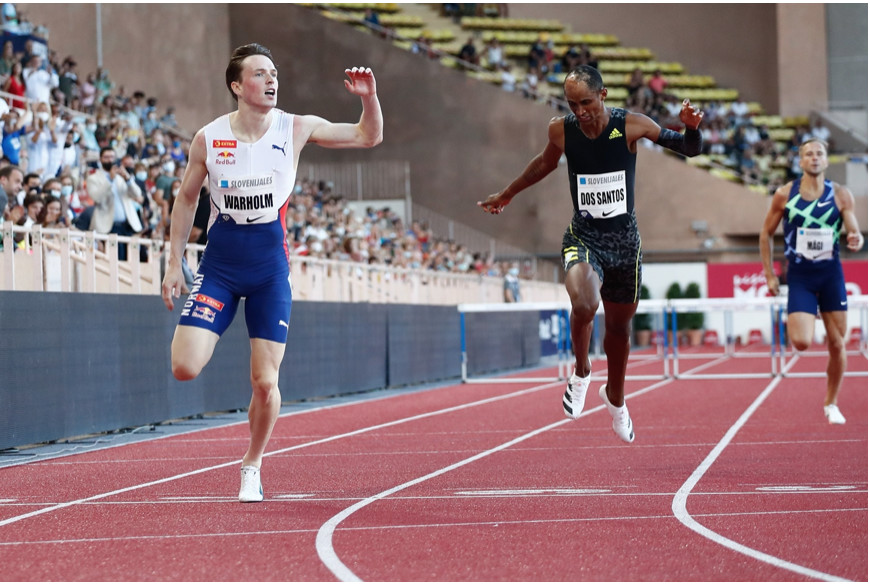
The Dutchwoman has set world records twice previously in Monaco, most recently over the mile two years ago, and she was feeling confident after rediscovering her love for the metric mile with a victory over Olympic champion Faith Kipyegon at the Wanda Diamond League meeting in Florence last month.
Hassan even floated the idea of adding the 1500m back into her Olympic schedule, having previously declared that she would attempt the 5000m-10,000m double.
She locked in behind the pacemaker from the beginning, her ambition obvious. Only Kipyegon and Ethiopia’s Freweyni Hailu dared to follow and the race was down to three when they reached the bell.
Hassan then turned the screws, but Kipyegon clung to her like a limpet down the back straight as the Dutchwoman stretched out her legs for the run home.
In the past three years races have inevitably gone Hassan’s way in this situation, her unmatched mix of speed and endurance proving irresistible. But not this time.
As they entered the final straight Kipyegon kicked hard, dashing past her rival and sprinting down the straight to win in 3:51.07, a Kenyan record and the fourth fastest time in history. In the last 90 metres she put two-and-a-half seconds into Hassan, who finished in 3:53.60, with Hailu third in a personal best of 3:56.28.
Despite her recent losses to Hassan, Kipyegon said she remained confident that her day would come.
“I knew Sifan was going for a fast race and my goal was to run a fast race here and I thank God that was,” she said. “I am really looking forward to Tokyo and I know it will be a very hard competition but I hope to go there and defend my title.”
Kipyegon gave birth to her first child in 2018, returning in 2019 to finish second to Hassan at the World Championships in Doha, but has now found an even richer vein of form than that which carried her to the Olympic title in 2016 and the world title in 2017. “I came back after giving birth and I feel like a role model for the young mothers out there and the young athletes,” she said. “I hope to show them that when you go for maternity leave, this does not mean the end of your career. You can come back strong and win races.”
Fellow Kenyan Timothy Cheruiyot was also a man on a mission tonight.
With his Olympic dreams hanging in the balance, the world 1500m champion dashed to the fastest time in the world for six years.
An out-of-sorts Cheruiyot was a shock fourth at the Kenyan Olympic trials last month, putting him in grave danger of missing selection. The situation has been complicated by the fact that second-placed Kamar Etiang has not completed the requisite number of anti-doping tests to qualify for the Olympic Games so his eligibility is in question.
That has left Cheruiyot in limbo just weeks before the Tokyo Games, but he thrust aside all that uncertainty to race with clear intent in Monaco.
In the fastest race of the year, he led at the bell and fought off all challenges, setting a personal best of 3:28.28 as four men dipped under 3:30.
Spanish surprise packet Mohamed Katir took almost five seconds from his personal best to finish second (3:28.76 national record) ahead of European champion Jakob Ingebrigtsen (3:29.25) and Australia’s Stewart McSweyn, who set an Oceanian record of 3:29.51 in fourth.
Cheruiyot revealed afterwards that a hamstring injury and the death of a relative on the day of the Kenyan trial had affected his performance there but he still hoped to be selected for the Olympics.
“Hopefully that will be the deciding performance to make the team for Tokyo,” he said.
Amos and Muir impress over two laps
On a night of high-quality middle distance running, Botswana’s Olympic medallist Nijel Amos roared back to top form, recording the fastest time of the year to down a field full of Olympic contenders.
With his arms flailing, Amos used his awkward but effective running style to propel himself past Kenya’s Emmanuel Kori (1:43.04) and Canada’s Marco Arop (1:43.26).
Britain’s Laura Muir also had the last laugh in a world-class 800m field, looming late to take the win in a big personal best of 1:56.73. Muir had never cracked 1:58 previously for the distance, but had the strength to haul in her training partner Jemma Reekie (1:56.96) and USA’s Kate Grace (1:57.20) in the final metres as all three women set personal best times.
Muir has decided to focus her energy on the 1500m in Tokyo but that will be no easy task as Kipyegon demonstrated.
Both 3000m steeplechase races were suffused with drama and unpredictability at the Stade Louis II.
The men’s race descended into confusion when an official rang the bell a lap too early, but world silver medallist Lamecha Girma still managed to run a world-leading time of 8:07.75 to take the win from Abraham Kibiwot, just 0.06 behind.
In the women’s race, 2015 world champion Hyvin Kiyeng made a break from the pack after two kilometres but misjudged the remaining laps and kicked too early. After crossing the line and hearing the bell for the actual final lap, the Kenyan tried to muster some energy to run another circuit. USA’s 2017 world champion Emma Coburn positioned herself to challenge Kiyeng as they approached the water jump, but Coburn stumbled at the hurdle and fell into the water losing all momentum, leaving Kiyeng to take the victory in 9:03.82, with world record-holder Beatrice Chepkoech second in 9:04.94 and Winfred Yavi third (9:05.45). Coburn regathered herself to cross the line in fourth place in 9:09.02.
Baker blasts to 100m victory
There was unpredictability too in the men’s 100m where the form book was upended as the ever-reliable Ronnie Baker claimed victory in 9.91, from African record-holder Akani Simbini (9.98) and Italian Marcell Jacobs (9.99).
World leader Trayvon Bromell, regarded by many as the man most likely to win the Olympic 100m crown in Tokyo next month, lacked his usual zip and could only finish fifth in 10.01.
World 100m champion Shelley-Ann Fraser-Pryce used her early speed to take the lead on the bend in the women’s 200m, but could not hold off the Olympic 400m champion Shaunae Miller-Uibo in the straight.
Miller-Uibo, who has chosen to focus on the 200m for Tokyo, won in 22.23 from Marie-Josee Ta Lou (22.25) with Fraser-Pryce third (22.48).
New world 400m hurdles record-holder Karsten Warholm returned to the competition track for the first time since his heroics in his hometown Oslo last week, eager to challenge his new “personal best” of 46.70.
He made a typically aggressive start, making up the stagger by the second hurdle, but ultimately he could not match the pace he set last week, crossing the finish line in a meeting record of 47.08, still the fourth fastest time of his career and faster than all but five other men in history.
He was pleased to maintain such a consistently high level of performance. “This was a good race so I’m satisfied,” he said.
Brazil’s Alison Dos Santos continued to build his Olympic medal credentials with a strong second place in 47.51, just outside his personal best of 47.34, also set in Oslo.
In the field, US pole vaulter Katie Nageotte carried her fine form to Europe to clear 4.90m and claim an impressive victory over world champion Anzhelika Sidorova and Olympic champion Katerina Stefanidi, who both cleared 4.80m.
A tight high jump competition was decided by a jump-off after both neutral athlete Mikhail Akimenko and Canadian Django Lovett were tied with best clearances of 2.29m. Akimenko then claimed the victory by leaping 2.32m in the decider.
World triple jump champion Yulimar Rojas had a tough night at the office, fouling four of her six jumps, including two that looked like they would have challenged the world record (15.50m). She led after five rounds with a best leap of 15.12m but could not find the board in the all-important sixth round under the Final 3 format being trialled in the Diamond League this year.
Jamaica’s Shanieka Ricketts took the win with 14.29m after she was the only one of the top three to register a legal jump in the final.
The men’s long jump also finished with an anti-climax after Miltiadis Tentoglou was the only one to hit the board in the final round (8.24m).
The women’s javelin was the only throwing event on the programme and saw a return to the winner’s circle for the veteran world record-holder Barbora Spotakova, who threw a season’s best of 63.08m in the sudden-death final round, the farthest mark ever achieved by a 40-year-old thrower.
(07/10/2021) ⚡AMPby World Athletics
How Visualizing Can Supercharge Your Running
Techniques to see success and overcome obstacles in your next race
When it comes to running, the mental game is as important as the physical game. “You can have the best training and coaching in the world, but if you don’t get your mind in the right place, it’s tough to get results,” says Under Armour’s performance coach Tom Brumlik. The pros understand this, of course, and use visualization techniques to push through difficult moments. Here’s how to take a page from their book.
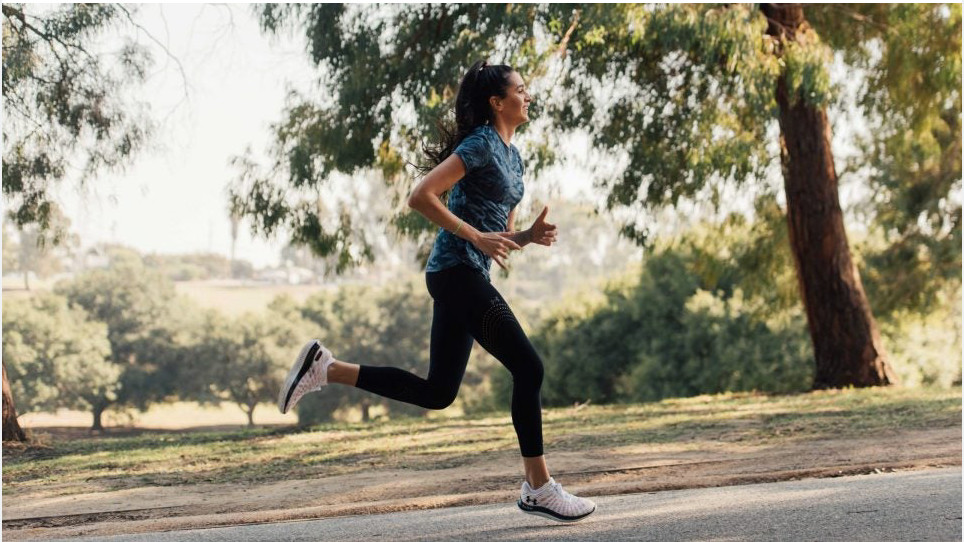
Start Practicing
Just as you train your body if you want to get fast, you must train your mind if you want to get skilled at visualization—creating a mental image of a future scenario and watching it play out as realistically as possible. “It helps to realize it takes time to develop,” says Brumlik. “The most important elements are consistent repetition and following up visualization with action.”
“If you are thinking daily about running the Boston Marathon before you have qualified, or even started the training needed to qualify, it won’t matter how well you can visualize the course,” cautions Brumlik. “That is daydreaming.” Instead, he says, focus more clearly on the actual task at hand, visualizing yourself doing it, and repeat many times over.
Olympian Joanna Zeiger, author of The Champion Mindset, adds “As with anything new, it takes practice. Start using visualization techniques long before you race.”
You Don’t Need to Follow Specific Rules
While there are certain approaches to visualization that will help, it’s not a one-size-fits-all method, says Zeiger. “The only thing that’s important is that you do it,” she says. Where you visualize isn’t important either—do it while in the midst of a hard workout or at home in a quiet, comfortable spot. For instance, “If you visualize your long run the next morning while you lie in bed the night before, that can be effective because you’ll be putting it into practice in the near future,” says Brumlik.
Experiment with What Works Best
When it comes to visualizing, athletes usually choose one of two paths: internal or external. Either is fine, but you need to figure out which works best for you. Internal visualization might look like practicing a certain aspect of running. Say you’ve been wanting to increase your cadence. “Picture driving your foot down underneath you, not throwing it out front and overstriding,” says Brumlik. External visualization is what most runners think of when they think of the practice. Imagine yourself on a racecourse with your competitors, leading the way. Or picture a particularly rough spot in training and running effortlessly through it. “I also recommend visualizing things going wrong,” says Zeiger, “so that the athlete can practice how they will handle certain adversities during a race.”
Visualize while Training or Racing
Visualization really starts to pay off when you can tap into it during a rough patch, whether during a race or training. “It can help to picture yourself finishing the interval when you’re in the midst of it, for example,” says Zeiger. “When I was doing intervals on the road, I would often picture myself on a track where I could count down in 400-meter increments. I would also visualize myself being able to stop at the end and catch my breath.”
For maximum impact, Brumlik coaches his athletes to focus on the process for months before important races, gaming out all the potential hurdles to achieving a positive outcome. “Then you will be better able to properly visualize a race when you know all the variables,” he says. No matter what you encounter during a challenging moment—rain, hills, heat, or humidity—you’re mentally practiced and ready to react in a way that will carry you through the moment.
(07/10/2021) ⚡AMPby Outside Online
What It Takes to Run a Mountain-Ultra-Trail Race
The physiology of events like the Ultra-Trail du Mont-Blanc is radically different from “short” events like the marathon
Immediately after stumbling across the finish line of the 2019 Ultra-Trail du Mont-Blanc, the legendarily punishing mountain-ultra-trail event, 56 runners hobbled over to the National Ski and Mountaineering School in the French resort town of Chamonix. Waiting there was a team of scientists with a roomful of lab equipment to measure the precise physiological toll of their exertions. The problem: one of the tests required them to run on a treadmill for four minutes while their breathing was measured. Many of the super-fit ultrarunners couldn’t stay on the treadmill for that long, so the scientists altered the protocol on the fly and shortened the treadmill run to three minutes.
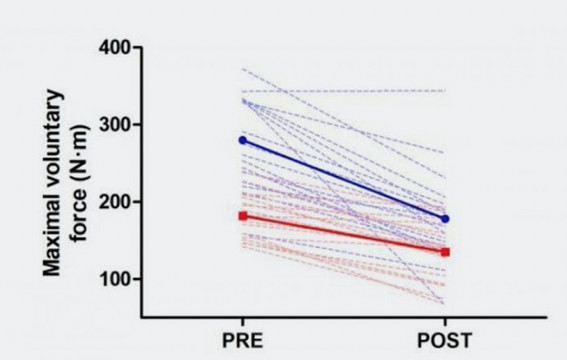
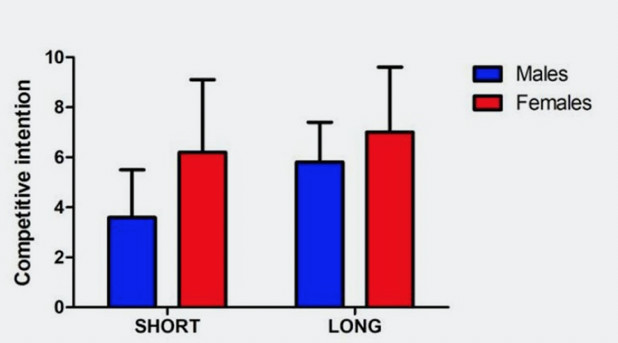
Running ultras is hard; so is studying them. Can you really get volunteers to run on a laboratory treadmill for 24 hours? Well, yes, you can—and Guillaume Millet, a researcher at the Université Jean Monnet Saint-Etienne in France (and himself an accomplished ultrarunner) has been there, done that, and published the paper. But you get more plentiful and realistic data by studying ultrarunners in the wild. So Millet and his colleagues recently published the sixth in a series of studies from that 2019 UTMB. Here are some of the insights from those studies about what it takes to run through the mountains for hours on end, and how your body responds to the challenge.
Long and Short
This year, about 10,000 runners will participate in seven different UTMB races over the course of a week in late August. The runners studied in 2019 ran one of two “short” distances (25 and 34 miles) or three “long” ones (62, 90, and 105 miles). The distance is just part of the story: the longest race, for example, also includes almost 33,000 feet of climbing and descending. The men’s winning time in 2019 was over 20 hours.
The range of distances provided a perfect opportunity to test how leg muscle fatigue responds to different durations of running. It’s pretty obvious that your quadriceps and calves will be weaker right after you run 100 miles. But it’s less clear where that fatigue originates. Is it your muscles? Your brain? The signaling pathway along your spinal cord that sends messages from the brain to the spinal cord? Millet and his colleagues put the runners through a series of neuromuscular strength tests before and after the races. There was a test of voluntary strength, but they also used magnetic stimulation of the brain and electric stimulation of the nerves to elicit involuntary muscle contractions, in order to tease out exactly where strength was lost.
After the long races, voluntary quad strength decreased by 38 percent, compared to just 27 percent in the short races. Part of the fatigue arose in the brain: even though the subjects were trying to push as hard as possible, the outgoing signal from their brains was smaller. The muscles themselves were also weaker: for a given level of electric stimulation, they produced less force. (The spinal cord played only a minor role.) In the quads, the difference between short and long races was explained by more muscle fatigue, rather than more brain fatigue.
Surprisingly, though, calf strength declined by 28 percent after both the short and long races: in this case, the extra distance didn’t seem to make a difference. When you compare these results to previous ultrarunning studies, a somewhat confusing picture emerges. Beyond a certain point—about 15 hours of racing, the data suggests—longer races don’t seem to make your muscles more tired. That may be because you can go faster in shorter races, and intensity is a key cause of fatigue—particularly if you’re hammering down quad-busting mountainsides. The scientific picture remains murky, but if you happen to run one of these races, you might want to adopt “After 15 hours, it won’t get any worse!” as an encouraging mantra.
Men and Women
Ultrarunning is one of the rare sports where top women sometimes beat top men—a feat that always prompts discussion about the physiological differences between sexes, and whether women have ultra-friendly characteristics that help them overcome the edge in muscle strength and red blood cell count that men get from testosterone. That’s a long and involved debate, but one of the hypotheses is that women’s muscles fatigue more slowly than men’s. It does appear that women have, on average, a higher proportion of endurance-linked slow-twitch muscle fibers, and better blood flow to feed those fibers.
In the UTMB data, women did indeed seem to show less muscle fatigue after the race. Here, for example, is the individual (dashed lines) and average (solid lines) data for quadriceps strength in men (blue) and women (red), before (PRE) and after (POST) the races:
The men were stronger before the race and stronger after the race—which makes sense because they had to propel bigger and heavier bodies through the mountains—but they had a bigger strength decline. This fits with previous research showing better muscular endurance in women.
There’s a twist, though. The researchers also asked each runner to rate their “competitive intentions” on a scale of 0 to 10, with 0 corresponding to “I tried to do the best time possible” and 10 corresponding to “Fun mode: my only goal was to finish the race.” Here’s what those scores looked like in the short and long races:
In this case, the men seemed to be more focused on their time, particularly in the short races—which, it turns out, is where the differences in muscle fatigue were most pronounced. This opens a different can of worms regarding potential sex differences in competitiveness. On one hand, this idea seems irrelevant to the question of why top women can compete with top men in ultra races, because the women who win races are clearly not in “fun mode.” On the other hand, women have repeatedly been shown to pace themselves better in endurance events, an observation that may be linked to overly competitive (or, to use the technical term, “stupid”) early pacing by men.
Millet’s new data can’t answer these questions, but it adds to the evidence that patterns of fatigue tend to be different in men and women. The elephant in the room, though, is participation rates. Only 257 of the 2,543 starters in 2019 were women. Until the numbers are more even, it’s risky to draw any general conclusions about sex differences.
Flat and Hilly
There have been numerous attempts to figure out which physiological traits predict how you’ll do in an ultra trail race. For ordinary road marathons, the three key parameters are VO2 max (the size of your aerobic engine), lactate threshold (which roughly tells you how much of your engine capacity you can use over a long period of time), and running economy (the efficiency of the engine). But those three factors are less useful in trail ultras: a study I wrote about a few years ago found that standard lab tests had decent predictive ability over 50K, less value over 80K, and no use at all over 160K.
Two of the things that make trail ultras so different are (as the name suggests) the terrain and the distance. It’s one thing to measure running economy on a treadmill in the lab. But how much does your running economy change when you’re climbing a steep hill? Or when your legs are rubberized by 20 hours of running? Millet and his colleagues explored both those questions: they tested running economy on a level treadmill, and also at an uphill gradient of 15 percent, before and immediately after the races.
Here again there was a counterintuitive result: running economy got worse (meaning the runners had to spend more energy to cover a given distance) after the short races, but not the long races. Previous research has shown that both intensity and duration of exercise can hurt running economy, but there seems to be a threshold where if you’re going slow enough, your running economy won’t suffer no matter how long you’re out there. In fact, an earlier study found that running economy actually improved after the 200-mile Tor des Géants race, perhaps because an ordeal that brutal trims any wasted motion from your stride.
As for the effect of slope, previous research has found that the most efficient runners on level ground aren’t necessarily the most efficient going uphill: running up mountains is a unique and specific skill. But the new data found that post-race changes in efficiency on level ground were strongly correlated with changes in uphill efficiency, which suggests that the underlying cause—mostly likely stride-altering fatigue in the muscles, rather than changes in your metabolism—affects your stride whatever the terrain.
For better or worse, none of this makes UTMB any easier. Millet even co-wrote a whole book called How to Succeed at UTMB (the English translation is unfortunately out of print), collecting the accumulated scientific research and practical wisdom from runners and coaches who specialize in mountain trail ultras. It’s a hefty read, and drives home the point that, from a physiological point of view, these races are not simply extra-long marathons. “It’s more complicated,” Millet told me at a conference a few years ago. “That’s probably why I like it so much: it’s more interesting.”
(07/10/2021) ⚡AMP
by Outside Online
The Weird and Wonderful Moments From the Olympic Trials That You May Have Missed
Want to run fast? Try wearing a pair of Doritos earrings, just like Christina Clemons.
During the 2021 Olympic Track and Field Trials, held at Hayward Field in Eugene, Oregon, we watched as the nation’s best athletes competed for spots to race at the Tokyo Games—the pinnacle for these runners. But we also some wacky, weird, and wonderful moments, reminding us that no matter how fast these athletes can run, they’re still human.
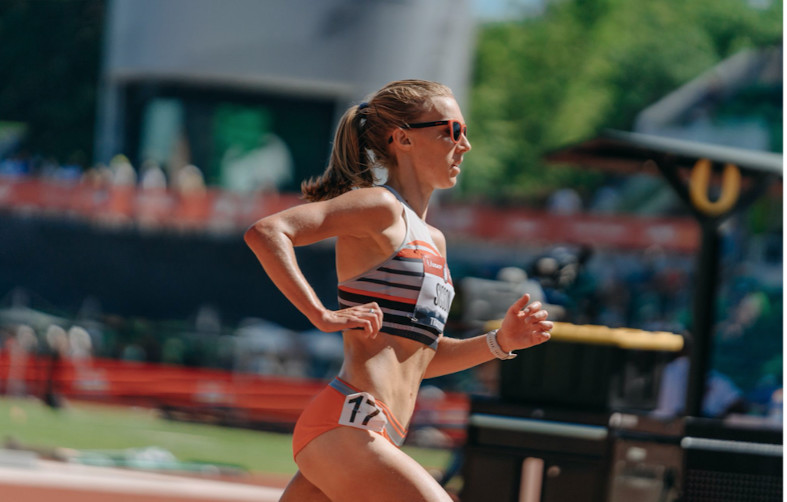
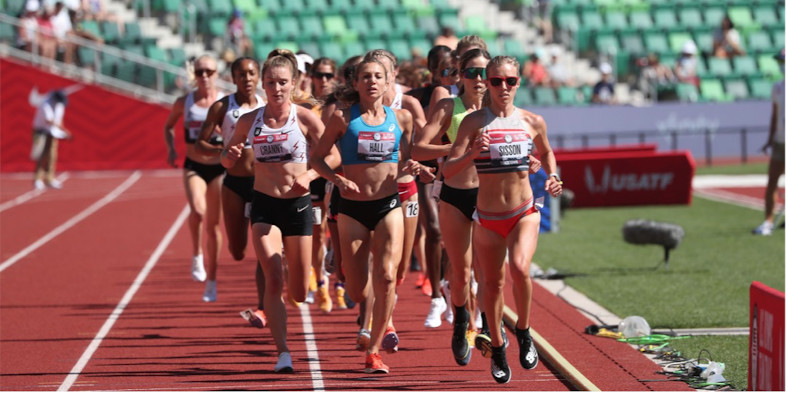
Lewis Johnson goes for a dip in the steeplechase water pit
Before the first round of the women’s 3000-meter steeplechase on Sunday, June 20, NBC broadcaster Lewis Johnson was tasked with explaining exactly what the steeplechase race is. (Runners jump over 35 barriers, seven of which are over a water pit. It also started as a horse race. Read more here!) Not only did he show viewers on TV all around the barriers, he actually took his shoes and socks off and waded into the water pit to show how deep it was. Talk about dedication to his craft.
A short time later, Allyson Felix qualified for her fifth Olympic team, finishing second in the 400 meters—and when Johnson was interviewing her trackside, his shorts appeared to be dry. Did he bring an extra pair of shorts and change? Was it so hot that his shorts dried? I haven’t stopped thinking about this for over a week. — Bette Canter
Christina Clemons makes the Olympic team wearing Doritos earrings
Forget the Wheaties cereal box. Christina Clemons, who made her first Olympic team in the 100-meter hurdles during the opening weekend of the Trials, has her face on a bag of Doritos!
How did this happen? According to The Washington Post, Clemons was looking for new earrings before the meet and purchased a pair of Cool Ranch Doritos bling at a Hot Topic. We’re so thankful that eagle-eyed viewers and on-site photographers spotted the awesome earrings, helping the selection go viral and providing Clemons this unique opportunity. May I suggest for her Olympic run, she get mini earrings of her favorite high-end car? — Brian Dalek
New England Pride in the Women’s 1500
I’m not a “real” New Englander—I’ve lived in Maine for only 18 years, or about 200 years shy of many natives’ standards for sufficient family roots. But from the fan boy angle, close enough. So it was a treat to see Vermonter Elle Purrier St. Pierre and Heather MacLean of Massachusetts finish first and third, respectively, in the women’s 1500 final amid the usual west-of-the-Mississippi-based candidates.
The moment was made sweeter by MacLean nabbing the Olympic standard, her and Purrier St. Pierre’s modest college running achievements, and the fact that they’re New Balance Boston teammates and close friends. Or, as their coach, Mark Coogan, told Runner’s World in his best southern Massachusetts intonation, “A girl from UMass and a girl from UNH are going to the Olympics, in the mile. Top that!” — Scott Douglas
Michelle Obama congratulates Sha’Carri Richardson
After Sha’Carri Richardson dominated the women’s 100-meter final with a winning time of 10.86, her performance and reaction afterwards (she ran into the stands to hug her grandmother right after the victory) went viral. Even former First Lady Michelle Obama took notice and tweeted a message congratulating the national champion. Obama tweeted a video clip of Richardson’s post-race interview in which the sprinter shared that her biological mother passed away before the championship. Richardson also thanked her family, especially her grandmother who witnessed Richardson become an Olympian.
“Without my grandmother, there would be no Sha’Carri Richardson,” Richardson told Lewis Johnson on NBC. “My family is my everything, my everything until the day I’m done.”
Richardson responded to the Becoming author’s tweet with a message of her own.
“I am up right now losing my mind!” Richardson wrote at 2:41 a.m. PDT on June 23. — Taylor Dutch
Even the pros sometimes borrow gear from their significant other
She’d sketched out her race plan lap by lap and even traded out her pre-race coffee for caffeinated gum to stay cooler. But there was one minor detail Emily Sisson realized she forgot as she was stepping onto the track to dominate the women’s 10,000 meters Saturday morning: shades. Fortunately, her husband, Shane Quinn, had a pair he was willing to part with.
“I stole them off him as we were walking into the warm-up area,” she said post-race. Those red-and-black frames—which appeared to be from goodr—made her look even more like a boss as she lapped nearly everyone en route to a new meet record and her first Olympic spot. — Cindy Kuzma
Runners warming up ... around a cemetery
Eugene Pioneer Cemetery, on the National Register of Historic Places, is also a destination for U.S. elite distance runners, warming up and cooling down for the races in Hayward Field.
The cemetery, which has a dirt trail around its perimeter that’s roughly 0.6 miles long, saw plenty of use during the Olympic Trials. Before the semifinal round of the women’s 1500, Runner’s World spotted Jenny Simpson, Dani Jones, Amanda Eccleston, Sarah Lancaster and others jogging the loop before heading one block east to the athlete entrance to the track. After the semis of the men’s 800, Bryce Hoppel went over for a cooldown.
The cemetery isn’t affiliated with the University of Oregon, but it’s adjacent to the campus, and many Duck track athletes over the years have used it for their runs. It’s an easy target for, well, gallows humor—as athletes hope warming up their doesn’t signal the death knell of their careers.
(07/10/2021) ⚡AMPby Runner’s World
Running Stronger and Faster In your 40s and Beyond
Running strong past your 30s takes dedication. As you age, your body faces new challenges, and new roles and responsibilities enter your life that affect where, when, and how long you can run. We talked to nine runners about the day-to-day physical and logistical challenges of running in your 40s, 50s, 60s, 70s, and older to steal their tips for staying fast (and in some cases, becoming faster than ever!).
Then, experts weigh in on each runner's habits to talk about how you can apply their strategies to your running life. Plus, how to fuel your runs in each age bracket.
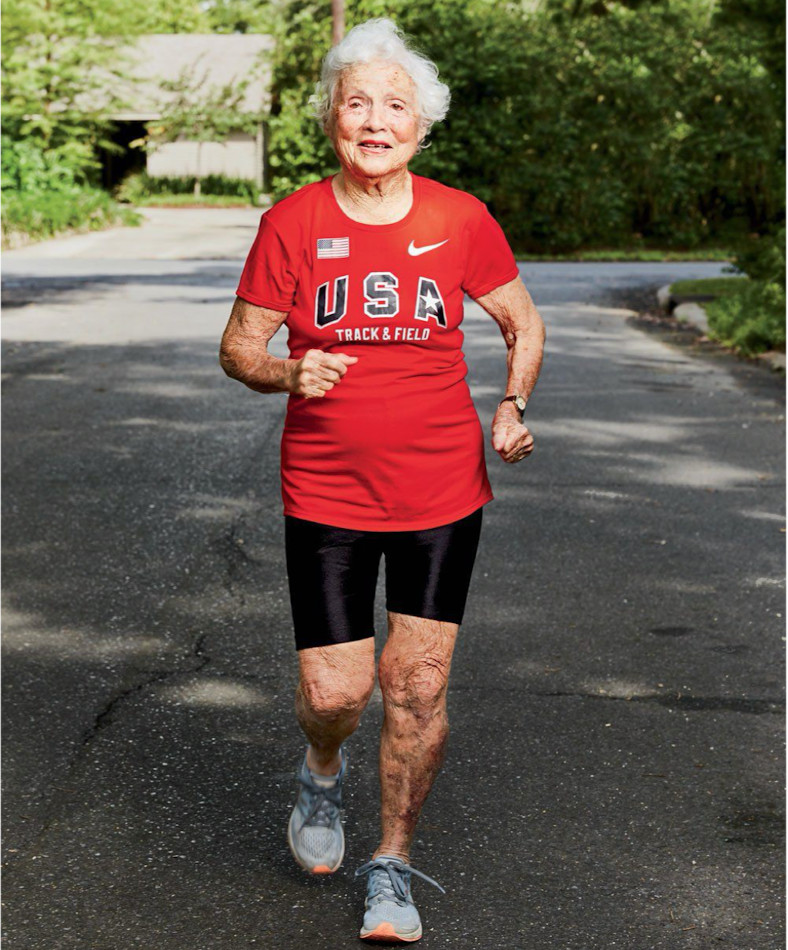
If you take care of your body, you can compete for a long time. I made my last Olympic team when I was 36 years old. But you have to adapt as you age. When you’re a young athlete, you’re still developing. You’re pushing to get stronger and faster. But once you’ve built the athleticism you need for your sport [and reached your ceiling], you don’t have to train the same, because you hit a rate of diminishing returns. Injuries come from pushing to get better and not being able to recover.
I still train six days a week, because it’s how I get my thinking in, but if I go hard two days in a row, I’m risking injury. I follow every high- intensity day with two low-intensity days, even if I feel great. On low-intensity days, I drop my effort to 70 percent. After a hard 10-mile tempo run, I’ll do 7 miles the next day, or run at 70 percent of my previous pace. When I do strength work, I use lighter weights or perform fewer reps, and I prioritize more rest between sets. I always stretch after workouts, and on off days, I’ll soak in hot water with Epsom salt, take vitamin D, and even go get a massage. To make sure I get enough protein, I take collagen, eat boiled eggs, and supplement with whey protein shakes.
The Experts Say: Reduce intensity and emphasize protein in your 40s to maintain muscle strength and cardiovascular endurance. By the time men hit age 40, strength and cardio start to drop by a percent or two per year, according to a study in Sports Medicine. Training smarter instead of harder—that means prioritizing recovery—helps you maintain performance, says Dr. Michael Fredericson, director of sports medicine at the Stanford University School of Medicine. He advises runners to do only two or three high-intensity runs a week. Research from the Netherlands suggests that eating 40 grams of protein after a training session can restore muscle faster than if you’d skimped on the protein, and research from Spain shows that adequate vitamin D is associated with improved performance and lower risk of injury. —As Told To Michael Easter
Reach for Your Peak
The Experts Say: Hormonal changes can diminish muscle and power in your 40s, so prioritize strength over endurance. “As estrogen and progesterone fluctuate and decline [during menopause], runners can experience muscle loss, loss of power, hot flashes, increased stress, and inflammation,” says female-performance physiologist Stacy Sims, Ph.D. Less estrogen makes it difficult for women to rebuild muscle, so consume more protein—0.7 grams per pound of bodyweight daily. Women also lose bone density with age, so supplementing magnesium, vitamin K2, calcium, and vitamin D3 can help you maintain a strong skeleton, per a 2020 study in Maturitas. —As Told To Emily Shiffer, With Additional Reporting By Selene Yeager
Find More to Love In Every Mile Amid a loss of muscle mass and testosterone levels, focus on movement quality, correct imbalances, and start experimenting, says Peter Park, C.S.C.S., three-time winner of the World’s Toughest Triathlon. Planks, squats, deadlifts, push-ups, and pull-ups with good technique can help you keep a balanced running form. Don’t neglect calf raises—Achilles issues are common among men in their 50s.
Park adds that racers in their 50s should quit worrying about PRs and enjoy the ride. “Put away heart monitors, pace charts, and goals. If you feel good, go faster. If not, go slower. Focus on your breath and the experience, and let running become your meditation.” —As Told To M.E.
Mobilize to Add Power Build mobility to stay elastic and prevent injury, says Jordan Metzl, M.D., sports medicine doctor at New York City’s Hospital for Special Surgery. “Muscles and connective tissues lose elasticity, which shortens your stride. People who only run tend to develop injuries as they get tight and lose strength. Building strength and mobility through your entire kinetic chain—all of the muscles, ligaments, tendons, and bones running the length of your body—is extremely important,” he says. That’s especially true for women, because they start with less muscle than men. Managing stress is important, too, because lower levels of estrogen can result in increased anxiety. While strength training helps with that, supplement your workouts with lots of sleep: Most experts agree six hours is the absolute minimum. —As Told To Selene Yeager
Feed Your Muscles to Stoke Your Speed Maintain stride length by working your glutes and hamstrings. Marathoners in their 60s had stride lengths 16 percent shorter than those of marathoners in their 40s, per a 2006 study from the British Journal of Sports Medicine. Hills can help older runners build leg strength and speed to keep strides long, says Greg McMillan, running coach and exercise physiologist. But approach hills carefully. McMillan suggests you have a consistent, strong running base, with strides at least twice per week, before you try hills. Start with shorter hills at a slow pace and build up gradually.
McMillan adds that men and women in this age group might experience noticeable weight gain. You lose muscle tissue as you age, which slows your metabolism and contributes to a higher percentage of body fat. A high-protein diet helps preserve lean muscle mass, and dietitian Leslie Bonci says runners in their 60s need at least 20 grams per meal, but should aim for 0.6 to 0.8 grams of protein for each pound of bodyweight daily. (For a 140-pound person, that’s 84 to 112 grams.) Bonci says calcium, vitamin D, and vitamin K are critical for bone health in this age group as well, plus dietary fiber—women over 50 should aim for 20 grams per day, and men should aim for 30. —As Told To Sarah Lorge Butler
Seek Running Adventures In your 60s, diversify where, when, and why you run. “Success in the 60s means reframing goals,” says Cathy Utzschneider, Ed.D., professor of high performance at Boston College. Adopt a “less is better” approach to training, and use your imagination to keep things fresh. You can use your running fitness to succeed in another sport: cycling, swimming, or even something like paddle tennis. Tony Coffey, coach of San Francisco’s Impala Racing Team, encourages cross country for his runners in their 60s because every course is different. And when you race in your 60s, Utzschneider recommends using an age-grading calculator, like the one on Mastersathletics, to score your performance on a curve. It’ll keep you competitive and be fair to your age. —As Told To S.L.B.
Embrace Leadership Prioritize balance and share your experiences with younger runners. “A comprehensive strength-training program should include balance work [in your 70s],” says McMillan. Do functional training, such as single-leg exercises, hamstring curls on a stability ball, and yoga. If you don’t have a strength routine at this age, just practice standing on one foot, then the other, for 10 seconds at a time.
Runners in their 70s should take advantage of their experience, says Utzschneider. “The brain is the biggest asset of the 70-something runner,” she adds. “Our brains help us be selective about what’s most important. Maybe it’s helping someone else get faster, whether you’re a coach or a training partner.” —As Told To S.L.B.
Outsmart Injury Use speed workouts to stay fit and competitive, says Coffey. Running at varied paces will strengthen your running economy—the energy you need to run at a given pace, adds McMillan. That can help offset the gradual decrease in max heart rate—about a beat every year—that begins sometime after age 30.
But also integrate low-impact cross training that elevates your heart rate on easy days, says Coffey, such as cycling, swimming, or even walking, to lower your injury risk. —As Told To S.L.B.
FUELING YOUR RUNS THROUGH THE DECADES
Your body’s needs evolve as you age. These nutrition strategies will more efficiently fuel your runs, and maintain muscle mass to preserve strength and metabolism.
In Your 40s...
Stop running on an empty stomach. High-carb, low-fiber foods like bananas, toast, and yogurt before a run will boost your glucose uptake and enhance performance. Make hydration a habit. Thirst response declines with age. Drink half your body weight in fluid ounces per day, plus an additional 12 to 24 ounces per hour of exercise.
In Your 50s...
Bookend runs with protein. 8 to 10 grams before a run and 30 to 40 after a run is ideal. An egg, a serving of tofu, or a cup of Greek yogurt will do it prerun, while a two-egg scramble with black beans and turkey after your run will promote recovery.
In Your 60s...
Carbs, carbs, carbs! Within 30 minutes after a run, fast-absorbing carbs help restore your glycogen, promoting better subsequent workouts. Sweet potatoes and brown rice work, but why not have some pancakes or waffles? (Three 4-inch pancakes provide about 60 grams of carbs.)
In Your 70s and Beyond...
Fuel with a meal. Eating something balanced 90 to 120 minutes before you run will boost immune function and decrease inflammation. Try a turkey sandwich with avocado on whole grain bread. Have a bedtime snack! Studies show that eating foods containing slow-digesting casein protein increases metabolic rate. Dairy is rich in casein.
(07/10/2021) ⚡AMP
by Runner’s World
Kenya's Faith Kipyegon runs spectacular 1500 at Herculis meeting
Off of an early fast pace, Kenya's Faith Kipyegon kicked to glory today in the 1500m at the Herculis meeting at the Stade Louis II, clocking the fourth-fastest time in history, 3:51.07. The 2016 Olympic 1500m champion swept past the tiring Dutchwoman Sifan Hassan in the homestretch, to beat the reigning world 1500m and 10,000m champion by two and one half seconds and break her own Kenyan record.
"I thought I could run faster than that," Kipyegon said improbably after the race.
American 800-meter runner Chanelle Price got the race off to a good start, leading Kipyegon, Hassan and Ethiopia's Freweyni Hailu through 400m in 61.5 and 800m in 2:03.6. Price quickly stepped aside, and Hassan took the lead and was clearly focused on running a fast time. Kipyegon stayed close, but did not attempt to pass. She knew this was a great opportunity to run a fast time.

"I knew Sifan was going for a fast race and my goal was to run a fast race here and I thank God that was," Kipyegon said.
The petite Kenyan, who took a full year off in 2018 to have her daughter Alyn, waited until she came out of the final bend to launch her lethal sprint, and she clearly showed the kind of fitness which will be required to defend her Olympic title in Tokyo.
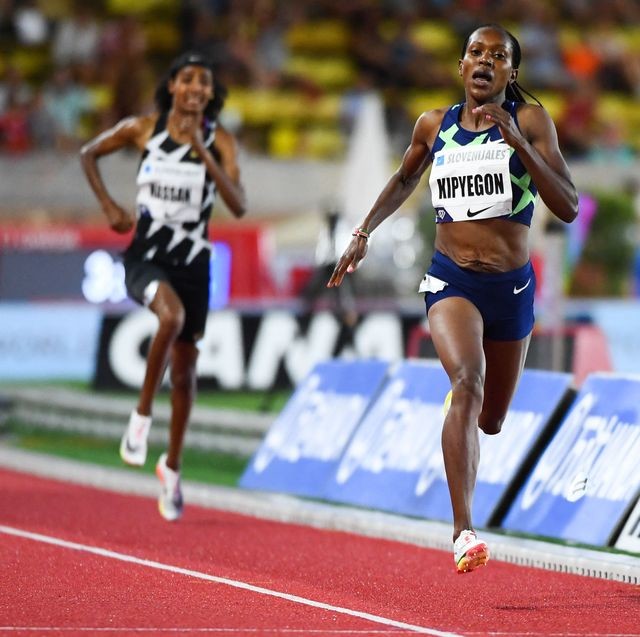
"I am really looking forward to Tokyo and I know it will be a very hard competition but I hope to go there and defend my title," she said. "I have a lot of pressure because the 1500m is a tactical race. Now I will train hard and hope to do my best at the Games."
Hailu, who is only 20 years-old, held on to get third place in a personal best 3:56.28.
There was also fast men's 1500m tonight. Off of the perfect pacing job by American 800m runner Chris Sowinski who hit 400m in 54.2 and 800m in 1:50.8, reigning world champion Timothy Cheruiyot of Kenya had a narrow lead over Australia's Stewy McSweyn and Norway's Jakob Ingebrigtsen. Spain's Mohamed Katir was close behind the leading trio.
With about 200 meters to go, Katir tried to pass Cheruiyot on the outside, but the tall Kenyan quickly responded. In the homestretch, Katir continued to dig, but Cheruiyot would not relent and beat the Spaniard 3:28.28 to 3:28.76. Cheruiyot's time was a 2021 world leader and a personal best, while Katir bested Fermin Cacho's 24 year-old Spanish record of 3:28.95.
"Today's race was good and I won it for the third time," said Cheruiyot who also won here in 2019 and 2020. "I missed competition a lot after spending a lot of time in Kenya where I had a few issues like my hamstring injury and after also losing a relative in my family on the day of the Kenyan trials explaining why I missed out on making the team," Cheruiyot added. "I am therefore happy I am back again after all this."
There were more fast times down the finish order; 11 men broke 3:33. Ingebrigtsen finished third in a season's best 3:29.25, and McSweyn ran an Australian record 3:29.51. McSweyn has also run an Australian record for the mile in Oslo eight days ago.
There were strong 800m races here for both women and men. In the women's contest, Scotswoman Laura Muir got a dramatic victory moving from fourth place to first by sweeping wide in the final 50 meters. She ran a personal best 1:56.73 ahead of her training partner Jemma Reekie (1:56.96 PB), American Kate Grace (1:57.20) and Jamaican Natoya Goule (1:57.35). Goule had led the race into the final 200 meters but tied up in the homestretch.
The men's two-lap race played out similarly when 2012 Olympic silver medalist Nijel Amos muscled past the tiring Marco Arop of Canada --who had led after the pacemaker dropped out-- and Emmanuel Korir of Kenya in the homestretch. Amos finished in a world-leading 1:42.91, while Korir got a season's best 1:43.04 and Arop a personal best 1:43.26. Clayton Murphy, the 2016 Olympic bronze medalist finished seventh in 1:44.41.
"It is always a good feeling coming out here to Monaco, that I am always winning out here, always having a good time," said Amos. "So I try to channel that positivity and bring it to the race. No matter what shape I am in, it always seems to come together."
(07/09/2021) ⚡AMPLaura Muir runs second fastest 800m by British woman and sets new Scottish record
Laura Muir broke the Scottish record in the 800m at the Diamond League meet in Monaco on Friday night, just a day after announcing her plan to solely focus on the 1500m at the Tokyo Olympics.
Muir gave up her spot in the 800m British Olympic group on Thursday in order to concentrate on success in the 1500m, a distance over which she is the current British record holder and sealed European glory back in 2018.
The 28-year-old finished seventh in the 1500m at the last Olympics in Rio five years ago and has reached each of the last three World Championship finals, finishing fourth in London in 2017.
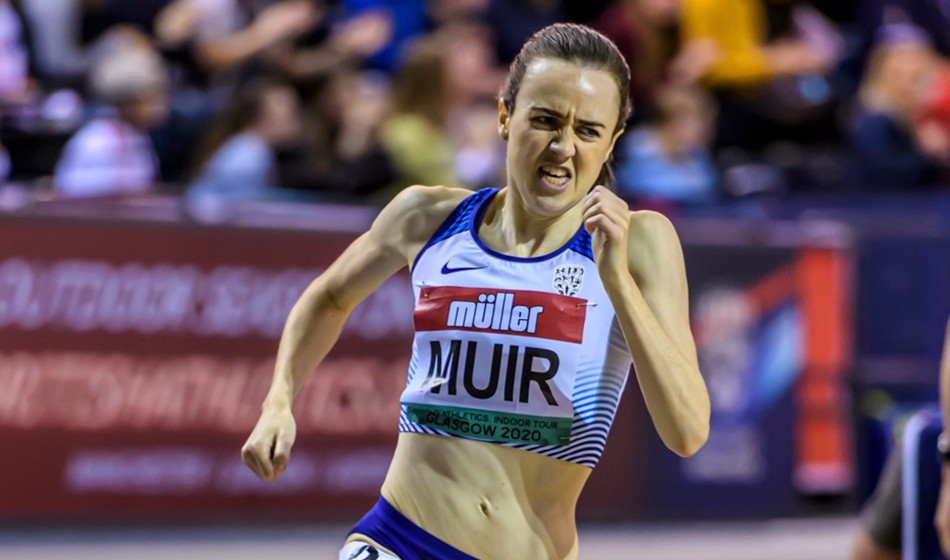
Muir finished third behind Keely Hodgkinson and Jemma Reekie in the 800m at the British Championships last month and subsequently abandoned plans to double up in Tokyo, avoiding a potential schedule of six races in the span of just eight days.
However, Muir then set a new Scottish record in the 800m in Monaco on Friday night, with her time of one minute and 56.73 seconds surpassing Lynsey Sharp’s mark from Rio 2016.
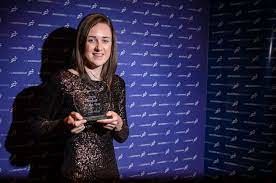
Indeed, Dame Kelly Holmes is now the only British woman to have run the 800m quicker, with her 1995 time of 1:56.21 still the fastest.
While Muir is now second on that list, training partner Reekie is third after running a 1:56.96 on a memorable night in Monaco.
Muir was quoted on scottishathletics.org.uk as saying: “This was my last race before Tokyo, so I just wanted to give it my best and put on paper the sort of shape that I know I am in and I am just so happy with that.
“Having a training partner like Jemma is huge, Jemma has made me a much faster 800m runner. We push each other so much and we’ve both run 1:56, so I have definitely become faster because of her.
“I am going to go home tomorrow, have a week at home before flying out to Tokyo and just train as hard as I can, so I am in even better shape in Tokyo. I want to win a medal, that is all I am focusing on.”
(07/09/2021) ⚡AMPSifan Hassan not ruling out Tokyo treble
Back in the stadium where she broke the mile world record in 2019 before her world title double in Doha, Sifan Hassan revealed that she had not ruled out targeting a treble in Tokyo.
The Dutch 28-year-old ran 4:12.33 for the mile at the Wanda Diamond League meeting in Monaco a couple of months before winning 1500m and 10,000m gold in an unprecedented performance at the World Athletics Championships.
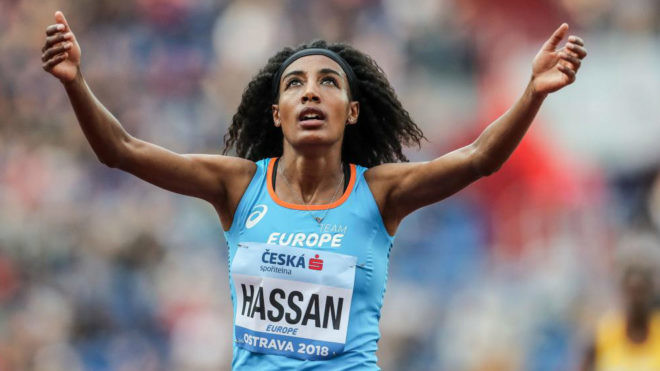
At the Herculis EBS meeting on Friday (9) she will be hoping for another confidence-boosting run at the Stade Louis II stadium – this time in the 1500m – as she prepares for the Olympic Games, where she is entered for the 1500m, 5000m and 10,000m.
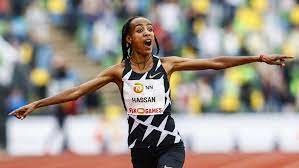
Hassan had originally said that the 5000m and 10,000m would be her target in Tokyo, but running 3:53.63 to win the 1500m at the Golden Gala in Florence last month convinced her to keep her options open.
“I had decided to do the 5000m and 10,000m, but when I ran 3:53 something inside of me – the love of 1500m – came back,” explained Hassan, speaking at a press conference on the eve of the Herculis EBS. “I want to keep everything until the last moment because I just want flexibility.
“I say life is not about medals, it is not about gold, it is also about history. I made the decision to run the 1500m (in Doha) even though I didn’t know if it was possible because nobody before had done it (the 1500m-10,000m double).”
Hassan has already made history this year by running 29:06.82 to break the world 10,000m record at the FBK Games in Hengelo. That time took more than 10 seconds off the 29:17.45 Almaz Ayana had run to win Olympic gold in Rio but Letesenbet Gidey went even faster just two days later, running 29:01.03 on the same Hengelo track.
“I just went fast in the last kilometre and I still managed to run a world record, 10 seconds off, and I was very happy,” said Hassan. “But I was also happy that it was broken after two days because I want the 10,000m to become exciting and for me it also gives me more motivation to work hard. I know the Games is not going to be easy.”
(07/09/2021) ⚡AMPby World Athletics
Australia selects 64 squad for Tokyo Olympics
Australia has named a team of 64 athletes for the Tokyo Games, which will be the nation’s biggest ever athletics squad for an overseas Olympics.
Further to those athletes already announced, the second wave of selections includes Jeff Riseley making his fourth Olympics and Kathryn Mitchell, Dave McNeill and Henry Frayne returning for their third Games.
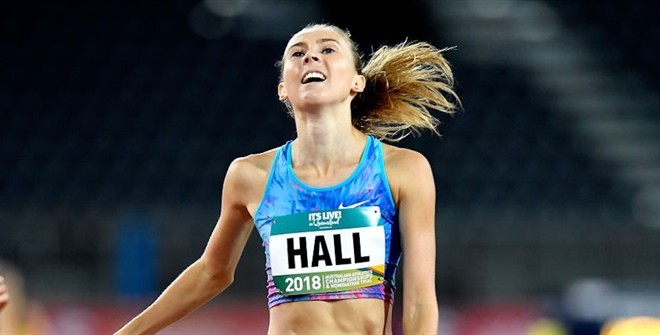
Riseley joins previously selected Tokyo 2020 teammates Dani Stevens and Lisa Weightman in equalling the most Olympics by Australian athletics representatives.
Dane Bird-Smith is joined by Kyle Swan and Declan Tingay in the 20km race walk, five years after he claimed bronze in Rio.
Nicola McDermott, who improved her Oceania record to 2.01m in Stockholm, is joined in the high jump by Eleanor Patterson, while Linden Hall, Jessica Hull, Ollie Hoare and Stewart McSweyn are among the 1500m team members.
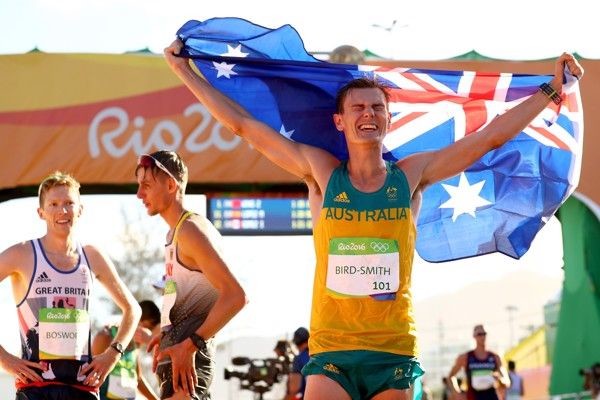
Patrick Tiernan is set to double in the 5000m and 10,000m.
Australian team for Tokyo
WOMEN
100m: Hana Basic200m: Riley Day400m: Bendere Oboya800m: Catriona Bisset, Morgan Mitchell1500m: Georgia Griffith, Linden Hall, Jessica Hull5000m: Isobel Batt-Doyle, Jenny Blundell, Rose DaviesMarathon: Sinead Diver, Ellie Pashley, Lisa Weightman3000m steeplechase: Amy Cashin, Genevieve Gregson, Georgia Winkcup
100m hurdles: Liz Clay400m hurdles: Sarah CarliHigh jump: Nicola McDermott, Eleanor PattersonPole vault: Nina Kennedy, Elizaveta ParnovaLong jump: Brooke StrattonDiscus: Dani StevensJavelin: Kelsey-Lee Barber, Mackenzie Little, Kathryn Mitchell20km race walk: Katie Hayward, Bec Henderson, Jemima Montag4x400m: Ellie Beer, Angeline Blackburn, Kendra Hubbard, Bendere Oboya, Anneliese Rubie-Renshaw
MEN
100m: Rohan Browning400m: Alex Beck, Steven Solomon800m: Peter Bol, Charlie Hunter, Jeff Riseley1500m: Jye Edwards, Ollie Hoare, Stewart McSweyn5000m: Morgan McDonald, Dave McNeill, Patrick Tiernan10,000m: Patrick TiernanMarathon: Liam Adams, Jack Rayner, Brett Robinson3000m steeplechase: Ben Buckingham, Matthew Clarke, Edward Trippas
110m hurdles: Nick HoughHigh jump: Brandon StarcPole vault: Kurtis MarschallLong jump: Henry FrayneDiscus: Matthew Denny20km race walk: Dane Bird-Smith, Kyle Swan, Declan Tingay50km race walk: Rhydian Cowley
Decathlon: Cedric Dubler, Ashley Moloney
(07/09/2021) ⚡AMPby World Athletics
Tokyo 2020 Olympic Games
Fifty-six years after having organized the Olympic Games, the Japanese capital will be hosting a Summer edition for the second time, originally scheduled from July 24 to August 9, 2020, the games were postponed due to coronavirus outbreak, the postponed Tokyo Olympics will be held from July 23 to August 8 in 2021, according to the International Olympic Committee decision. ...
more...Nick Butter ran a marathon in every country in the world is now running around Britain
Nick Butter has faced gunfire, muggings, dog attacks and a minor heart attack in his running career. Now he has a new obstacle: Britain’s rugged coastline.
Butter is best known as the first person in history to run a marathon in each of the world’s 196 countries, which he did over 674 days from 2018 to 2019. Over the course of that mammoth challenge he ran in temperatures that exceeded 40C and fell below 20C, around an erupting volcano and through a forest swarming with frogs. He recounted his experiences in a book, Running the World.
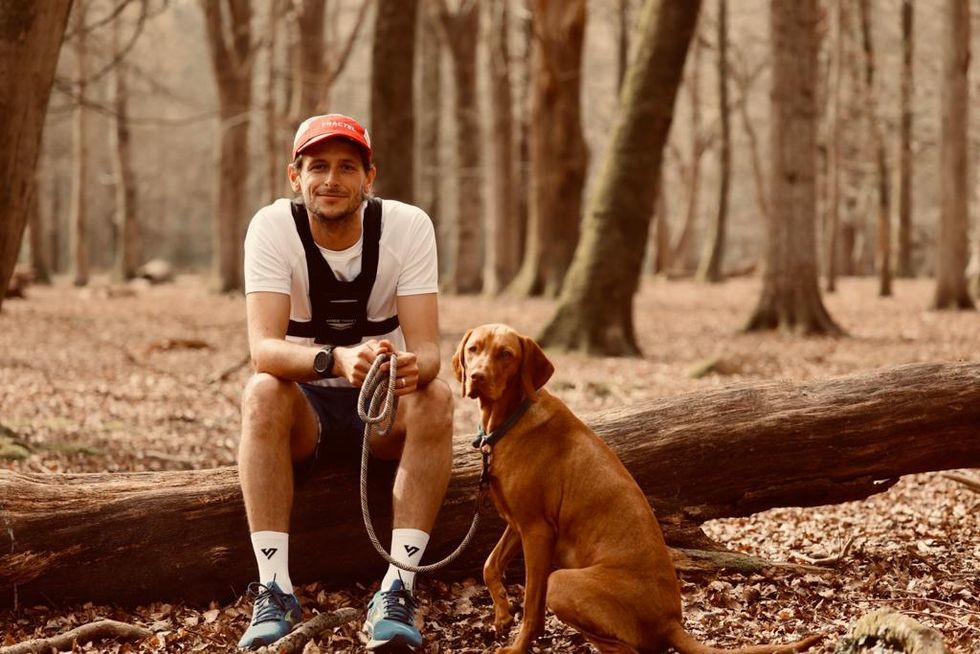
His latest challenge is a little less extreme, though by no means easy. This time Butter has embarked on Run Britain, an attempt to run 200 marathons around the coast of Britain in 100 days. His anticlockwise journey began in April at the Eden Project, in Cornwall, and will end there later this month.
After his world tour ended, Butter says he wondered what to do next. But fellow endurance athletes told him to do what he loved, without feeling the need to keep topping each previous expedition just to challenge himself.
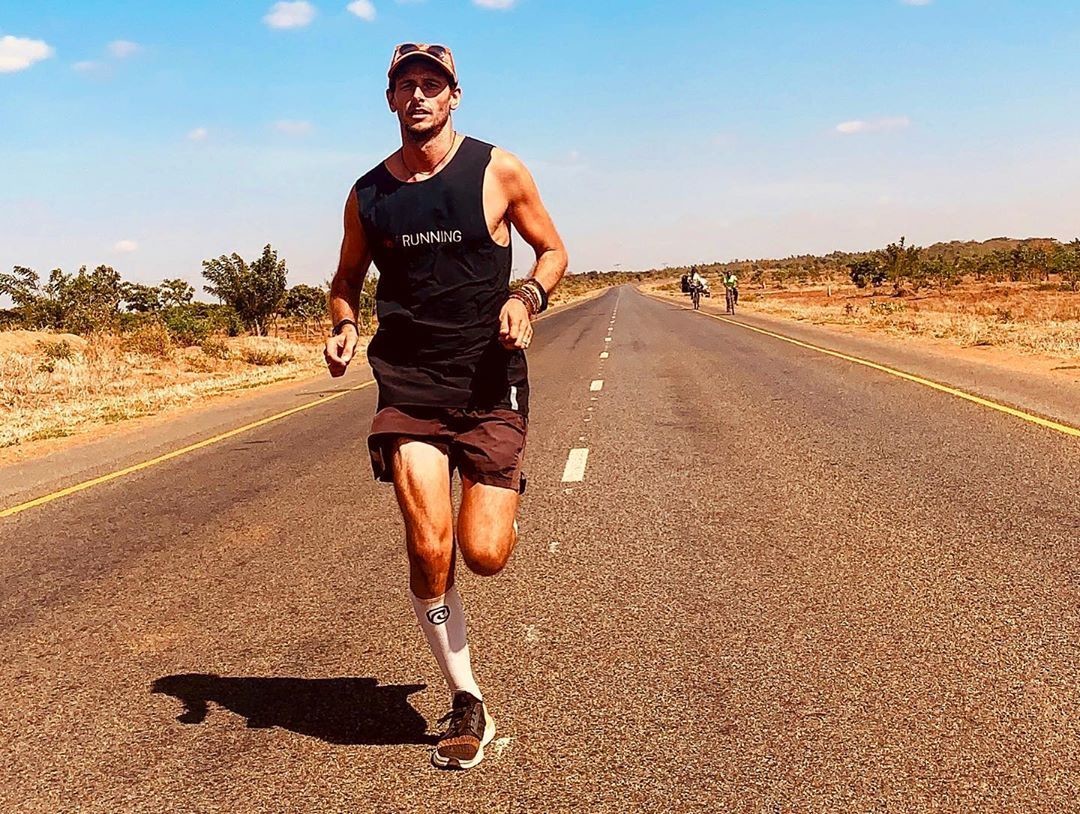
He explains: ‘When I think about the amount of people that live in Britain that have never seen many beaches, let alone the entire coastline…what do I love to do? Take photos, see the world and travel. And then you combine that with what I can do in Covid times. And here I am.’
Mountains to climb
It hasn’t been easy. When we ask if there have been moments where he doubted his ability to continue, Butter pauses. ‘‘A lot of moments,’ he says. The former skier has had four or five injuries since the challenge began, including a slipped meniscus in his knee and a stress fracture in his shin.
And while Butter’s respiratory fitness has gone through the roof during his latest epic tour, his body fat has plummeted from 11 per cent to just 2.7 per cent, which he agrees is too low. ‘I’m just skin and bones now,’ he says. ‘And I'm eating like a horse, I’m eating everything every day. And I still can't put weight on because you just burn it off and burn it off.’
Faced with those kinds of challenges, many runners would call it quits. But although Butter has had to adapt his schedule to build in more resting time for injuries, he’s determined to get to the end.
He says: ‘I started this trip very publicly saying I really don't know if I can do it. And it turns out that I can do it, but just a bit slower than I was planning to.’
The drive to keep going is partly down to the ‘machine’ Butter now has behind him: his support team, photographers, PR people and brand representatives, each with different demands. But it’s also due to the charitable intentions behind Run Britain: this challenge is a fundraising vehicle for the 196 Foundation, a micro-trust Butter set up after seeing the scale of poverty in countries such as Sierra Leone while on his Running the World trip.
‘I realised I wanted to do something significant that was going to be a bit of a legacy piece of the journey, and that I could continue putting my energy into for the rest of my life,’ he says.
Launched at the beginning of this latest expedition, the Foundation now has around 500 monthly donors. These donors give £1.96 a month: no more, no less. Anyone can write to the Foundation to suggest a worthy cause – whether that be an orphanage in Kenya or a new wheelchair for a neighbour – and once a year, all the donors vote on what cause they want their money to go to.
What’s next?
Although he hasn’t quite got to the finish line of Run Britain, Butter says it’s in his nature to have the next adventure planned. This wasn’t even the first choice of trip; he was supposed to be running north to south through New Zealand, but the pandemic forced a change of plan. Also in the works is a circumnavigation of Iceland and a journey through Malawi, visiting 196 Foundation projects. And he is exploring the idea of a north-to-south trip through Japan.
‘I'm yet to put my finger on why I love to put myself through so much pain,’ he says. ‘But I do, and this trip is brutal. ‘It’s something that I'm never going to forget.’
(07/08/2021) ⚡AMP
by Jacob Moreton
Amy Stone runs London marathon alone after cancellation
A woman from Clapham has won plaudits after running the London marathon on her own after it was cancelled due to Covid-19 concerns.
Amy Stone, 31, had planned to run the 2020 London Marathon last year and fundraise for Macmillan Cancer Support in the process.

Yet the sudden onset of the first wave of the coronavirus pandemic in the UK forced organisers to cancel the event and threw her plans into jeopardy.
Amy was not to be deterred, however, and decided to run the marathon several months later anyway, despite the cancellation.
The Clapham woman described her motivation after discovering how she and generations of her female family members were at high risk of contracting breast and ovarian cancer.
"After my Auntie Katie was diagnosed with breast cancer in 2017, she decided to take a genetic test to see if she carried the BRCA1 gene.
"Over the next 2 years we all started to get tested. 5 out of 6 of us are carrying the mutated BRCA1 gene, including myself," Amy said.
Consequently, she and others are at an increased lifetime risk of breast cancer by as much as 90 per cent, and a heightened risk of ovarian cancer by up to 60 per cent.
Amy pointed out that in one photo featuring six "wonderful" female family members represented "two bouts of triple negative breast cancer, four double mastectomies, three ovarian removals and a mum who lost her fight with ovarian cancer at 58."
As such she has been forced to make difficult life choices in anticipation of a potentially difficult future, and roundly praised Macmillan for their support in this regard, underlining how the 2020 Marathon's cancellation wouldn't stop her from supporting the charity.
"I wasn’t prepared to give up – I had worked so hard and this race was never purely about running for me. It was about an amazing charity that has done so much for my family. And for the brave women who have climbed mountains and my nan who lost her life too young.
"So, on 4th October 2020 I ran around London completing my own Marathon and finishing my 26.2 miles at my home in Clapham Junction.
(07/08/2021) ⚡AMPby Orlando Jerkinson
TCS London Marathon
The London Marathon was first run on March 29, 1981 and has been held in the spring of every year since 2010. It is sponsored by Virgin Money and was founded by the former Olympic champion and journalist Chris Brasher and Welsh athlete John Disley. It is organized by Hugh Brasher (son of Chris) as Race Director and Nick Bitel...
more...Laura Muir ditches Tokyo Olympics double plan to focus on 1500m
British athletics star Laura Muir has opted against attempting a middle distance double at the Tokyo Olympics, deciding to focus instead on the 1500m.
Muir had been named in the British team for the 800m as well, but has surrendered that spot, meaning Alex Bell gets a late call-up to the team.
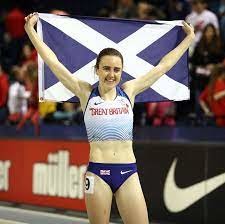
Muir is the British record holder over 1500m and that event has historically been her strongest. The Scot finished seventh at the last Olympic Games in Rio and has reached each of the last three World Championship finals in the discipline, including when finishing fourth in London in 2017.
Her performances over the longer distance had made her all-but certain to be selected and so the 28-year-old opted to run the 800m at the British Championships last month with a view to doubling up in Tokyo, but she could only finish third behind teenager Keely Hodgkinson and training partner Jemma Reekie.
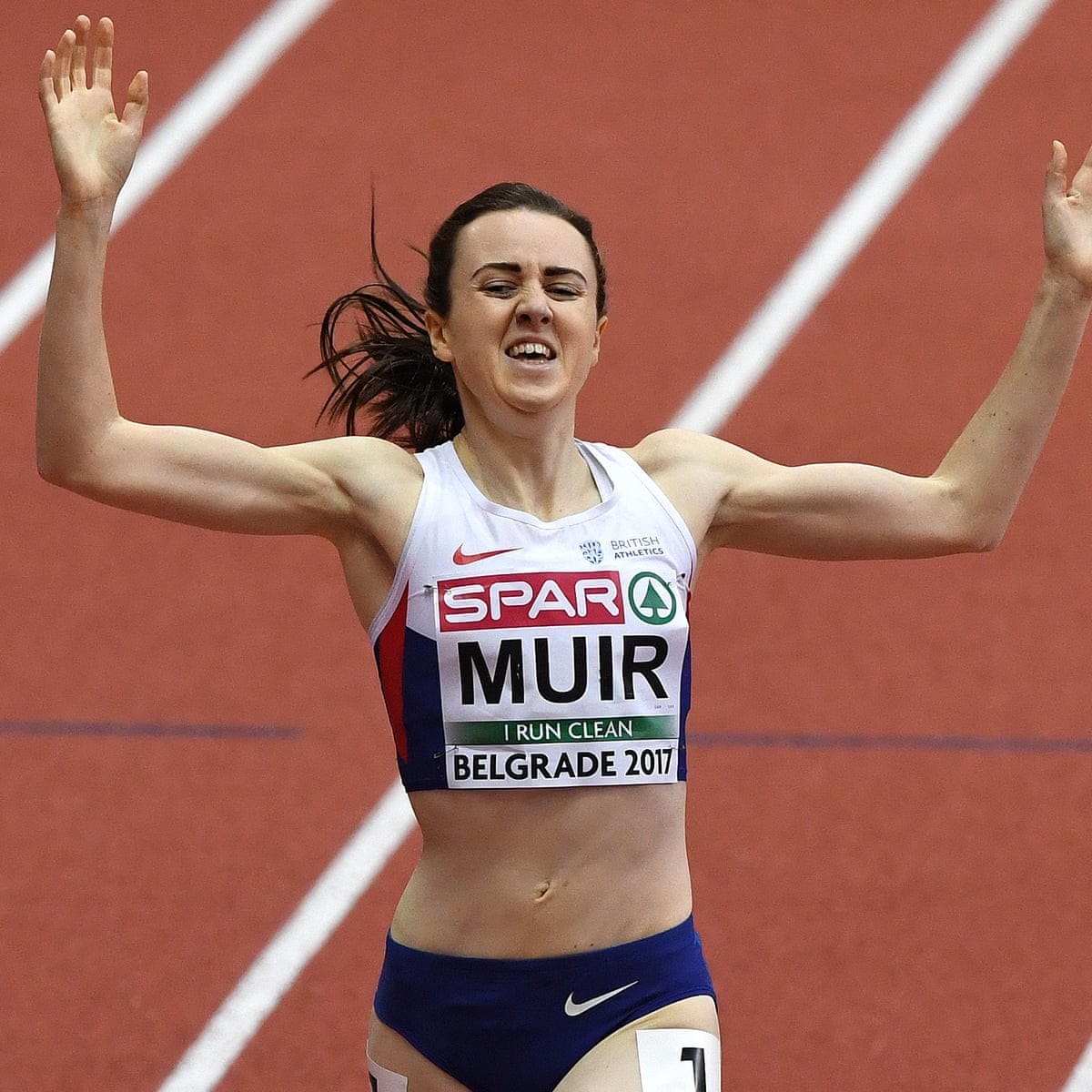
Competing in both events would potentially have meant a gruelling schedule of six races in eight days and Muir will now focus solely on the 1500m, the first round of which takes place the day before the 800m final as the competitions overlap.
Bell finished fifth at the British Championships but is ranked fourth in the UK this year - behind Hodgkinson, Muir and Reekie - after running a PB of 1:58.52 in Belfast in May and gets her first Olympic call-up.
(07/08/2021) ⚡AMPby Malik Ouzia
Tokyo 2020 Olympic Games
Fifty-six years after having organized the Olympic Games, the Japanese capital will be hosting a Summer edition for the second time, originally scheduled from July 24 to August 9, 2020, the games were postponed due to coronavirus outbreak, the postponed Tokyo Olympics will be held from July 23 to August 8 in 2021, according to the International Olympic Committee decision. ...
more...Zagori Mountain Running will be held on July 23-25, 2021, at Tsepelovo, Epirus, Greece.
Zagori Mountain Running, the leading ultra trail event in Greece and favorite athletic destination, awaits to welcome you again this summer on 24-25 July.
The Zagori Mountain Running, an integral part of this cultural harmony, offers to the athletes the opportunity to experience through their effort “the place beyond the mountain."

.Zagori Mountain races began in 2011, and they were “built” on the idea of mapping a trail route in the area, which could actually support a mountain race. The route was marked, and the second stage to follow was the implementation of the race that would be called the first Zagori Mountain Running.
Beyond all expectations, registrations exceeded the initial target! The feedback of the participants, the very first moving moments and the warm welcome of the local community, filled us with strength and courage to go on with the project in the following year.From its early years, Zagori Mountain Running has won the hearts of athletes and friends, making this trail event very special and popular.
Of course, the reasons are many, explaining why ZMR has become a leading trail event in Greece. First of all, ZMR offers multiplicity, different levels of difficulty and a wide range of terrain. Every athlete, every person can find the race that suits them best, or even try a new challenge, since there are four (4) categories available, covering distances from 10 to 80km.

Ideal start is the Entry Race of 10km for new comers in the trail running. The kids’ race called “Zagoraki” concludes the age group, offering to the families the chance to spend quality time altogether, sharing common activities in combination with a summer holiday in Zagorochoria, in Epirus, by the end of July.It has been written that “one life is not enough to experience Zagori”, yet it’s true.
The 46 villages known for their architecture and their outstanding natural beauty, their stone bridges of the famous Epirotic craftsmen, the Vikos canyon, the Vradeto steps, the Voidomatis river, the churches, the mansions, the rich biodiversity, all these captivate the visitor and at the same time give the athletes the thrill and the energy to make it to the finishing line.Zagori Mountain Running manages with total respect this significant heritage.
Our main concern is that all the participants, their friends, the visitors, inspired and delighted of what they have just experienced, make a promise to return!
(07/08/2021) ⚡AMPOlympics organizers are banning all spectators from the Games this year
Olympics organizers are banning all spectators from the Games this year after Japan declared a state of emergency that's meant to curb a wave of new Covid-19 infections, Reuters reported Thursday.
It's the latest setback for the Summer Olympics that have already been delayed for a year and racked up high costs for postponement. The state of emergency will begin July 12 and run through Aug. 22, while the Games are scheduled from July 23 to Aug. 8.

Organizers had already banned international viewers from attending and set a cap on domestic viewers at 50% of capacity, or up to 10,000 people.
There's immense pressure to curb the spread of the virus at the Games, protecting both athletes and neighboring regions. More than 11,000 competitors are expected to travel to Japan to compete, along with thousands of officials and staff also set to attend.
Nationwide, Japan has reported about 811,000 coronavirus cases and more than 14,800 deaths, according to data from the World Health Organization. However, the nation has faced a relatively slow rollout of the vaccine. Only about a quarter of the population has had at least one COVID-19 shot, according to Reuters.

Adjusting to no fans
NBCUniversal, the parent company of CNBC, plans to show more than 7,000 hours of content from the Tokyo Olympics across its networks and streaming platforms. Now NBC will have to grapple with whether viewers notice the difference without spectators.
Sports properties around the world adjusted during the pandemic with no fans, and often used digital seats to display some form of attendance. U.S. pro leagues including the National Football League and Major League Baseball also incorporated artificial sound in broadcasts to mimic crowd noise.
It's challenging to keep viewers engaged in sports broadcasts without spectators, so NBC could use the technology to enhance production. In 2014, the media giant and the International Olympic Committee agreed to a $7.75 billion media rights deal to extend their partnership. The current agreement runs through the 2032.
Still, an Olympics without fans will destroy ticket revenue for the IOC. More than six million tickets were sold for 2016 Rio Games, bringing in roughly $1.2 billion, according to an IOC annual report.
Because of the delays, the Games' budget has already jumped to an estimated $15.4 billion, according to Reuters, and ticket revenues of about $815 million will likely fall to near zero.
(07/08/2021) ⚡AMPTokyo 2020 Olympic Games
Fifty-six years after having organized the Olympic Games, the Japanese capital will be hosting a Summer edition for the second time, originally scheduled from July 24 to August 9, 2020, the games were postponed due to coronavirus outbreak, the postponed Tokyo Olympics will be held from July 23 to August 8 in 2021, according to the International Olympic Committee decision. ...
more...Top athletes Christine Mboma and Beatrice Masilingi left off Namibian Olympic team over high natural testosterone levels
Two of the world’s top female 400m runners have been discretely scratched from their country’s Olympic team after medical tests indicated they have high natural testosterone levels. Namibia’s Christine Mboma and Beatrice Masilingi, both 18 years old, will not be allowed to compete in the 400m in Tokyo this summer.
Mboma is currently ranked number one in the world at the 400m, after she ran won the 400m at the Irena Szewinska Memorial/Byrdgoszcz cup in Poland on June 30 in a world-leading time of 48.54. Masilingi ran 49.53 at a meet in Zambia in April, which still stands as the third-fastest time run this year.
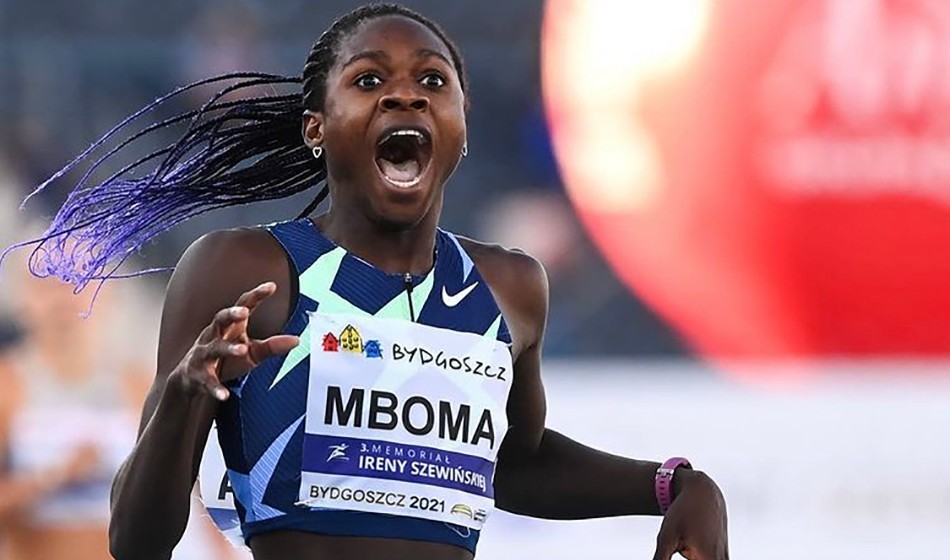
Both women have been found to have naturally high levels of testosterone, but are not DSD athletes and both have XX chromosomes. Still, their hormone levels have rendered them ineligible to compete in any distance ranging from the 400m to the mile. This is the same rule that prevents DSD athletes like South Africa’s Caster Semenya, Burundi’s Francine Niyonsaba and Kenya’s Margaret Wambui from competing in the 800m at the elite level.

The Namibian Athletic Committee has said in a statement that neither athlete was aware they had this condition, and the country’s athletic federation has said both women will now focus their full attention on the 200m.
Since they were introduced in 2018, the World Athletics testosterone regulations have been hotly debated in the world of elite sports, and Semenya has appealed the decision in several courts. The two-time Olympic 800m champion has lost two appeals, but is currently waiting on a third hearing. For now, however, the rule stands, and all athletes affected by the rule will be forced to compete in different events.
(07/07/2021) ⚡AMPby Brittany Hambleton
Tokyo 2020 Olympic Games
Fifty-six years after having organized the Olympic Games, the Japanese capital will be hosting a Summer edition for the second time, originally scheduled from July 24 to August 9, 2020, the games were postponed due to coronavirus outbreak, the postponed Tokyo Olympics will be held from July 23 to August 8 in 2021, according to the International Olympic Committee decision. ...
more...Dublin marathon has been cancelled for a second successive year due to the Covid-19 pandemic.
Announcing the decision race director Jim Aughney said that despite rigorous evaluations, there are still too many unknowns to be confident that we could provide a safe event given the pure scale of the marathon.
The organizers of the KBC sponsored event had hoped that the event could go ahead on October 24 but postponed making a final call for as long as possible.

But they have now dropped the bombshell news that the event which celebrated its 40th anniversary in 2019 has been cancelled.
“It is with great regret that we are cancelling the KBC Dublin Marathon for the second year in a row," Aughney said.

"Despite vigorous evaluations, there are still too many unknowns to be confident that we could provide a safe event given the pure scale of the marathon. We have a duty of care to the runners, volunteers, suppliers and supporters. This will be extremely disappointing news for all participants entered. We want to thank them for their continued support.”
“We have come to a critical point in our event planning when a final decision needed to be made. We took into consideration the recent updates on modeling around Covid-19 and the immense challenges of creating a controlled, safe environment for the KBC Dublin Marathon which has a footprint of 26.2 miles with 25,000 runners and 200,000 supporters who line the streets to cheer them on.”
All entries for the 2021 KBC Dublin Marathon will be valid for the 2022 race. For those who do not wish to avail of this, a full refund option will be available. Last year’s race had attracted a sell-out field of 25,000
Runners can still enter and take part in the KBC Virtual Dublin Marathon over the October Bank Holiday weekend; Saturday 23rd, Sunday 24th and Monday the 25th.
While the news is not a surprise, it will be a major disappointment to the thousands of runners who were hoping to take part in the race. It will also be a significant economic blow to both the race organizers and the business community in Dublin.
(07/07/2021) ⚡AMPby Sean McGoldrick
KBC Dublin Marathon
The KBC Dublin Marathon, which is run through the historic Georgian streets of Dublin, Ireland's largest and capital city.The course is largely flat and is a single lap, starting and finishing close to the City Centre. Conditions formarathon running are ideal....
more...130 athletes named on the team to represent the United States at the Tokyo Olympic Games
World outdoor record-holders Sydney McLaughlin, Ryan Crouser and Keni Harrison are among the 130 athletes named on the team to represent the United States at the Tokyo Olympic Games.
The squad includes 13 medalists from the 2016 Games in Rio and six defending world champions from Doha. Experienced headliners include five-time Olympians Allyson Felix in the 400m and Abdi Abdirahman in the marathon, while the youngest athlete on the team is 17-year-old Erriyon Knighton, who twice broke the world U20 200m record last month at the US Olympic Trials.
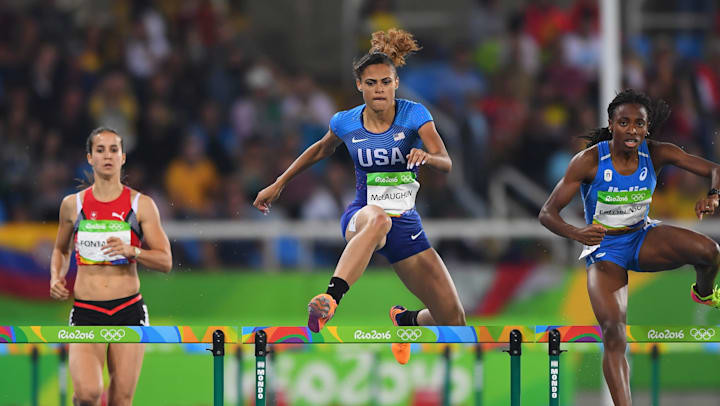
JuVaughn Harrison won both the long jump and high jump at the Trials in Eugene and he will be among the athletes contesting two events in Tokyo as he has been selected for both disciplines.
Other athletes announced on the team include world indoor 60m hurdles record-holder Grant Holloway, who was just 0.01 shy of breaking Aries Merritt’s world 110m hurdles record of 12.80 in Eugene, plus former world 400m hurdles record-holder Dalilah Muhammad, the second-fastest ever 200m sprinter Gabby Thomas and multiple global long jump gold medalist Brittney Reese.
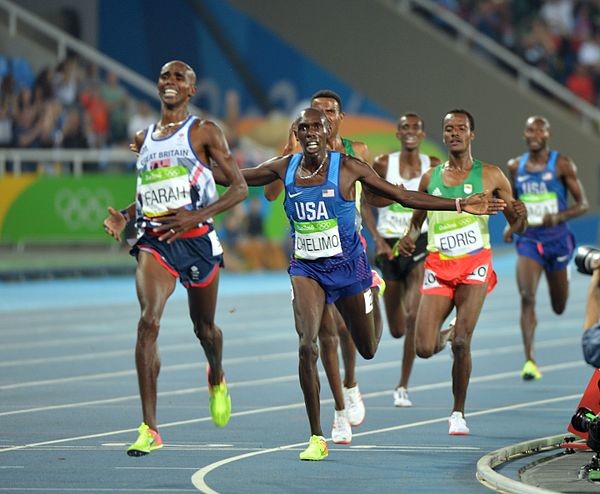
USA team for Tokyo
WOMEN
100m: Teahna Daniels, Javianne Oliver, Jenna Prandini
200m: Anavia Battle, Jenna Prandini, Gabby Thomas
400m: Allyson Felix, Quanera Hayes, Wadeline Jonathas
800m: Athing Mu, Raevyn Rogers, Ajee' Wilson
1500m: Heather MacLean, Cory McGee, Elle Purrier
5000m: Elise Cranny, Rachel Schneider, Karissa Schweizer
10,000m: Alicia Monson, Karissa Schweizer, Emily Sisson
Marathon: Sally Kipyego, Molly Seidel, Aliphine Tuliamuk
3000m steeplechase: Emma Coburn, Val Constien, Courtney Frerichs
100m hurdles: Christina Clemons, Gabbi Cunningham, Keni Harrison
400m hurdles: Anna Cockrell, Sydney McLaughlin, Dalilah Muhammad
20km race walk: Robyn Stevens
High jump: Tynita Butts-Townsend, Vashti Cunningham, Rachel McCoy
Pole vault: Morgann LeLeux, Katie Nageotte, Sandi Morris
Long jump: Quanesha Burks, Tara Davis, Brittney Reese
Triple jump: Tori Franklin, Jasmine Moore, Keturah Orji
Shot put: Adelaide Aquilla, Jessica Ramsey, Raven Saunders
Discus: Valarie Allman, Kelsey Card, Rachel Dincoff
Hammer: Brooke Andersen, Gwen Berry, DeAnna Price
Javelin: Ariana Ince, Maggie Malone, Kara Winger
Heptathlon: Erica Bougard, Annie Kunz, Kendell Williams
4x100m: English Gardner, Aleia Hobbs, Gabby Thomas (plus others selected in individual events)
4x400m: Kendall Ellis, Lynna Irby, Kaylin Whitney (plus others selected in individual events)
MEN
100m: Ronnie Baker, Trayvon Bromell, Fred Kerley
200m: Kenny Bednarek, Erriyon Knighton, Noah Lyles
400m: Michael Cherry, Michael Norman, Randolph Ross
800m: Bryce Hoppel, Isaiah Jewett, Clayton Murphy
1500m: Matthew Centrowitz, Cole Hocker, Yared Nuguse
5000m: Paul Chelimo, Grant Fisher, Woody Kincaid
10,000m: Grant Fisher, Woody Kincaid, Joe Klecker
Marathon: Abdi Abdirahman, Jake Riley, Galen Rupp
3000m steeplechase: Hillary Bor, Mason Ferlic, Benard Keter
110m hurdles: Devon Allen, Grant Holloway, Daniel Roberts
400m hurdles: Rai Benjamin, David Kendziera, Kenny Selmon
20km race walk: Nick Christie
High jump: JuVaughn Harrison, Shelby McEwen, Darryl Sullivan
Pole vault: Sam Kendricks, KC Lightfoot, Chris Nilsen
Long jump: Marquis Dendy, JuVaughn Harrison, Steffin McCarter
Triple jump: Chris Benard, Will Claye, Donald Scott
Shot put: Ryan Crouser, Joe Kovacs, Payton Otterdahl
Discus: Mason Finley, Reggie Jagers, Sam Mattis
Hammer: Daniel Haugh, Rudy Winkler, Alex Young
Javelin: Michael Shuey, Curtis Thompson
Decathlon: Steven Bastien, Garrett Scantling, Zach Ziemek
4x100m: Kenny Bednarek, Cravon Gillespie, Micah Williams (plus others selected in individual events)
4x400m: Elija Godwin, Vernon Norwood, Trevor Stewart (plus others selected in individual events)
MIXED
4x400m: Shae Anderson, Bryce Deadmon, Wil London, Taylor Manson (plus others selected in individual events).
(07/07/2021) ⚡AMPby World Athletics
Tokyo 2020 Olympic Games
Fifty-six years after having organized the Olympic Games, the Japanese capital will be hosting a Summer edition for the second time, originally scheduled from July 24 to August 9, 2020, the games were postponed due to coronavirus outbreak, the postponed Tokyo Olympics will be held from July 23 to August 8 in 2021, according to the International Olympic Committee decision. ...
more...Why chocolate is a runner's superfood
Deep in the distant past, when I was a small child, there was a TV campaign in the UK by the Dog’s Trust charity to encourage responsible pet ownership. “A dog is for life, not just for Christmas” ran the slogan. Well, I feel much the same about today’s World Chocolate Day. Chocolate is far too important to relegate to just a single day. Chocolate is for life, not just a day in July.
I wish I was the kind of person who could open a large bar of chocolate and have just a few squares before putting it away for the next day, but I am not and never will be, and frankly I’m not sure those people deserve chocolate anyway. I once went to visit my sister and her family in summer and she still had Easter egg chocolate in the kitchen cupboard. It’s incredible that I share DNA with her.

If we had the chocolate Olympics – and really, we should – then my podium places would go to Lindt Excellence Extra Creamy, Marks and Spencer’s Swiss milk and Hotel Chocolat Dizzy pralines. But though I am a milk chocolate devotee, it’s the dark stuff that I probably ought to consume more of, not least because it really is good for you – and good for running.
Bear with me, I promise this is not funded propaganda for Lindt or Hotel Chocolat (though I am entirely open to offers from both) – there is plenty of evidence to back this claim up. For a start cocoa, which of course dark chocolate is higher in, has been shown in some studies to improve vascular health. It’s thought that’s because it is loaded with polyphenols, and they help the body to fight inflammation, reduce oxidative stress and increase the formation of nitric oxide – which in turn causes blood vessels to dilate. So better blood flow = better vascular health.

But wait! There’s more. Lots of runners will have heard that milk is a good post-run recovery drink because it has just the right mixture of protein, carbs, water and nutrients. Well, chocolate milk is even better. The ratio of carbs to protein is better than in most sports drinks, it’s easily absorbed (those with dairy allergies clearly notwithstanding) and the added chocolate not only makes it taste nicer, but the added sugar actually boosts the carb content: an 8oz glass of normal milk has about 12g of carbs, whereas chocolate milk has about 30-35g.
Then there are the studies that show that chocolate can even improve your VO2 max – essentially how fast your body can use oxygen. Researchers found that 20g of dark chocolate a day for three months given to sedentary people improved their Vo2 max score by 17%. The fact that that research was done in Mexico, historically speaking the home of chocolate, is surely no coincidence…
Perhaps more surprisingly, chocolate turns out to be a good source of running fuel as well. Of course as runners we know that sugar = fuel, but chocolate is surely a far nicer source than the sticky gels that marathoners will be all too horribly familiar with. Back in 1996 a study fed some lucky college students dark chocolate before a moderate intensity run, and found that their blood sugars stayed higher, fuelling them for longer. Compared to the poor non-chocolate-fed group, they also showed a lower rate of perceived exertion and better blood lactate levels.
Seriously, where does one sign up to be a subject in chocolate-based trials? There's a brand called 80Noir Chocolate that was devised by an ultra-runner who used chocolate as fuel for years. I've never tried it, but would like to volunteer as a guinea pig for any researchers looking for willing victims to test the effects.
Chocolate has antioxidants, a bit of caffeine, a hit of iron, soluble fibre, vitamin D, manganese, copper, magnesium … it’s basically a superfood and I’m now wondering if I should eat some more of it.
(07/07/2021) ⚡AMPby Kate Carter
Cuban 400m record-holder Roberto Hernandez, who claimed 1987 world and 1992 Olympic 4x400m relay medals, died on Monday at the age of 54
Hernandez developed a heart disease last year and was hospitalized several times. He succumbed during his latest hospitalization at Havana’s Joaquin Albarran.
“It is a massive loss. We are all saddened,” said Cuban Athletics Federation president Alberto Juantorena, from whom Hernandez took the national 400m record in 1990.
Born in Camaguey, eastern Cuba, Hernandez moved as a child to Limonar, Matanzas, where he took up athletics and met his two best sports friends, world high jump record-holder Javier Sotomayor and 1992 Olympic high jump finalist Marino Drake.

“This is a very sad day for me,” said Sotomayor, who met Hernandez at the hospital three days before his passing.
“A brother, a friend, a teammate since we were children in Limonar, is gone. The good memories we lived together are countless and will stay with me forever, as a friend, a colleague and as the extraordinary athlete he was.”

Drake added: “From the EIDE (sports school) in Matanzas to the national team, he forged great friendships. He always did his best and represented the country with decorum, respect and honour. With Roberto, one of the best representatives of our generation is gone, a human being I loved as a brother.”
As a 19-year-old, Hernandez rose to the international scene in 1985 when he took 400m silver at the World University Games. In 1986 he became the fifth-fastest man under 20 years of age to run the one-lap race (45.05), a time that still stands as a Cuban U20 record.
Twice fourth at the 1987 and 1991 World Athletics Championships and fifth in the individual 400m at the 1992 Olympic Games, he anchored the Cuban 4x400m squad to silver at the 1992 Games and bronze at the 1987 World Championships. Their 2:59.13 semifinal run in Barcelona still stands as the national record.
Hernandez also picked up 1987 world indoor silver, 1991 Pan American Games gold on home soil and the 200m-400m double at the 1990 Central American and Caribbean Games.
In 1990 he improved Juantorena’s national record to 44.14 in his best season. In all his 17 400m races over six months that year, he went under 45 seconds. He also set a world best with the USA’s Danny Everett in the rarely contested 300m that year, as both clocked 31.48. He retired after the 1996 Olympic Games.
(07/06/2021) ⚡AMPby World Athletics
I would have run under 9.5 seconds with super spikes, says Usain Bolt
The fastest man in history is pondering just how much more destructive he could have been in the super spikes that have swung a wrecking ball at so many world records. Briefly, there is a battle between Usain Bolt the diplomat and Usain Bolt the competitor. The competitor wins. “Me and a friend were talking about this the other day,” he tells the Guardian. “And I was like, ‘should I be upset?’ Because I know over the years everyone has tried to make spikes different and better but …”
Bolt stresses he is not worried about the current crop shredding his 100m world record of 9.58sec or his 200m best of 19.19sec. Yet he sounds uneasy about where the arms race in shoe technology will lead. “How can I argue if World Athletics decide that it’s legal? I can’t do anything about it. The rules are the rules. I don’t think I’ll be fully happy, but it’s just one of those things.”
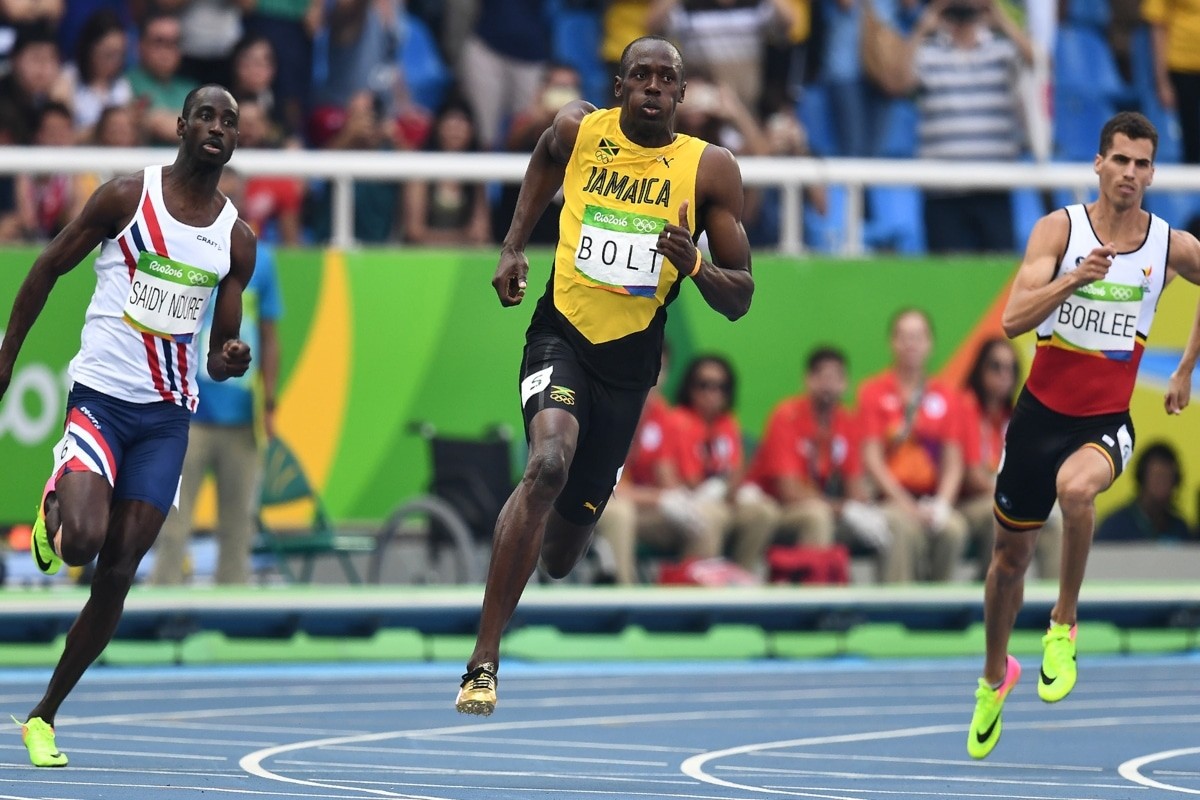
He wants to make one thing absolutely clear: he would have gone a whole lot faster in the new wave of super spikes – which feature a superlight, energy-returning foam and are said to be worth at least a tenth of a second over 100m. He is just not sure by how much. “We have guessed and we have talked about it, but I don’t know for sure,” he says. “But definitely much faster. Below 9.5 seconds for sure. Without a doubt.”
It is a punchy statement, but the greatest and most popular athlete of his generation is only just getting started. When asked about Britain’s Adam Gemili’s pledge to take a knee on the podium at the Olympics in support of Black Lives Matter he doesn’t procrastinate or play the politician. “If you believe in something, then you should do it. It’s something that we need to make the world aware of, what’s going on with racism.”
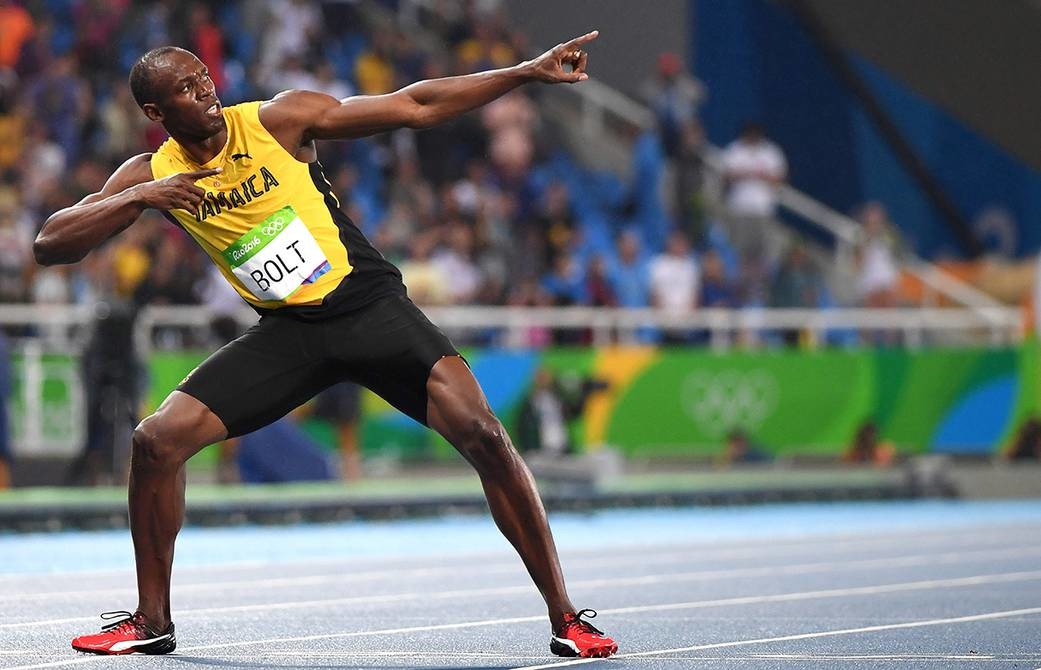
While the International Olympic Committee recently reiterated that protests on the field of play and the podium are banned Bolt suggests they are swimming against the tide. “I’ve seen it big in football now. If a track athlete decides to do it, they should be able to voice their opinion.”
It is rare for Bolt to grant an exclusive interview with a British newspaper and rarer still to hear him so reflective on so many subjects, including fame and falling short. Such sentiments are not usually associated with someone who won 134 of his 146 races between 2008 and 2017, winning eight Olympic gold medals and 11 world titles along the way. But when Bolt looks back at his career he believes he was capable of winning 200m gold at the 2004 Athens Olympics, when he was 17.
It may sound preposterous, but Bolt makes his case with the thoroughness of a Harvard law professor. He believes people forget that, as a 16-year-old, he ran 20.13sec to finish 2003 ranked ninth in the world. But after moving to Kingston, and discovering Burger King and nightclubs, he did not always want to train. That, and a subsequent injury, meant he didn’t emerge out of the heats in Athens.
“In 2003, I was running faster than almost everybody,” he says. “If I had run in the world championships that year I would have probably medalled. And if I’d continued on that road, I would have run 19 seconds earlier in my career, so for sure I could have won gold in Athens if I’d dedicated myself more.”
“But it was tough for me because even in high school I was famous. Everyone knew who I was in Jamaica. And I didn’t have somebody who had already been through it to say: ‘You have to take this seriously, because this is what you could do.’ It was just my coach telling me to train hard.
“That’s why I try to talk to the younger athletes now and explain to them ‘get serious early man’. Because the possibilities are endless.”
There is a second confession. After Bolt’s career ended with him tumbling to the track after tearing his hamstring during the 2017 world championships in London, he was twice tempted to make a comeback. “It was something I thought about in the first and second year after I retired,” he says. “I even went to my coach. But he was like, ‘It’s going to be harder than before – coming back is not going to be a cakewalk.’
“When I look back I have no regrets. I did extremely well in my career. True, it didn’t end on the greatest note but the legacy I left is wonderful.”
For years Bolt has been asked whether he will run again. Until now the answer has always been no. But on 13 July he will return to the track over 800m, a distance he has never run professionally, in a promotion for the US firm CarMax.
(07/06/2021) ⚡AMPby Sean Ingle
Tokyo 2020 ask fans to stay away from marathons
Tokyo 2020 has asked fans to stay away from the course when the Olympic marathons and race walking are held in Sapporo.
Organizers claimed that the move was necessary in order to reduce the risk of COVID-19 infections.
Sapporo is the capital of Japan's northernmost island Hokkaido, which remains under state of emergency measures because of coronavirus.
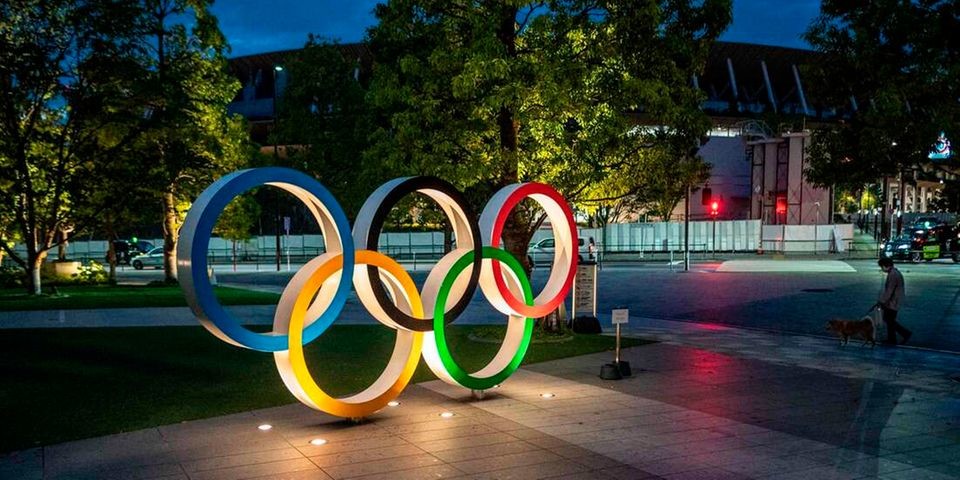
Games officials today met with both Hokkaido prefecture and Sapporo city authorities, as well as the police, to go through the arrangements for the marathons and race walking.
"At the meeting, it was agreed that in view of the current COVID-19 situation, it will be necessary to reduce the risk of infection by restricting the movement of members of the public," a statement said.

"It has therefore been decided to ask the public to refrain from spectating along the course.
"We will continue to work closely with the Hokkaido prefectural authorities, the Sapporo City Government and all other relevant organizations to ensure a safe and secure Tokyo 2020 Games for all participants and for the citizens of Sapporo and Hokkaido."
Kyodo News had previously reported that Hokkaido Governor Naomichi Suzuki had asked for a restrictions on fans at the events.
It is hoped that the prefecture's state of emergency measures will be lifted on July 11.
Sapporo, which hosted the Winter Olympics in 1972, lies 800 kilometers north of Tokyo but was named as the venue for the Olympic marathons and race walking in October 2019.
The decision, taken before COVID-19 caused the delay of Tokyo 2020 by a year, was made due to fears about high temperatures in the capital.
It was a move which resulted in the International Olympic Committee clashing with Tokyo Governor Yuriko Koike, who opposed the decision, and some athletes.
Odori Park will be the start and end point for both marathons.
The route features a large loop which is about the length of a half-marathon, followed by a second smaller loop which will be completed twice.
The fact that fans have been asked not to attend the marathons, which take place in the open air and are traditionally free for the public, is another blow for spectators as the Olympic Opening Ceremony approaches on July 23.
Tokyo 2020 yesterday delayed the results of a ticket lottery until Saturday (July 10) as organizers continue to assess the number of spectators that will be permitted in each venue.
International fans have already been banned.
(07/06/2021) ⚡AMPby Dan Palmer
Tokyo 2020 Olympic Games
Fifty-six years after having organized the Olympic Games, the Japanese capital will be hosting a Summer edition for the second time, originally scheduled from July 24 to August 9, 2020, the games were postponed due to coronavirus outbreak, the postponed Tokyo Olympics will be held from July 23 to August 8 in 2021, according to the International Olympic Committee decision. ...
more...Ex-New York marathon champ Geoffrey Kamworor to compete in Hengelo ahead of Tokyo Olympics
Former New York marathon champion Geoffrey Kamworor will compete and train in Hengelo, Netherlands as part of his preparations for the Tokyo Olympics Games.
Kenya's head athletics coach Julius Kirwa said on Monday in Nairobi that the former World Cross Country champion will head to the Dutch city from Wednesday to compete in selected races over the 3,000m distance.
The coach said it was critical for Kamworor to gauge himself in short distance races to test his speed prowess ahead of the Olympics, which starts on July 23.
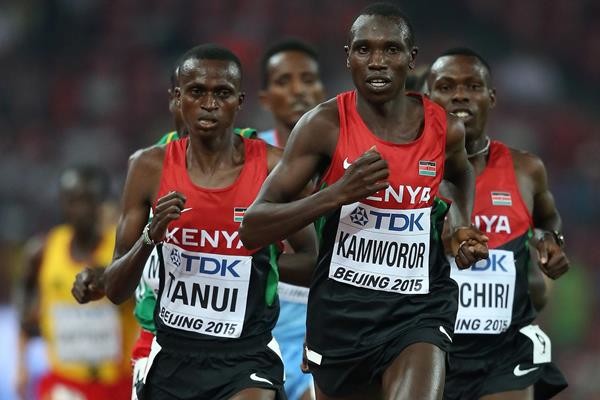
"Kamworor is heading to Hengelo for training and to compete. He will step down from his traditional 10,000m distance to 3,000m so as to gauge his speed. We want him to test himself and see where he is on the scale," Kirwa told Xinhua in Nairobi.
Kenya will line up former World Cross Country champion Kamworor, Rodgers Kwemoi and Weldon Kipkurui Langat in the 10,000m race at the Olympics hopeful to regain the elusive gold medal.
Kenya last won gold in the 10,000m race back in 1968 through Naftali Temu in Mexico City.
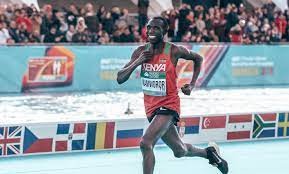
But Kirwa is optimistic, the new team, which is a blend of youth and experienced athletes will weather the storm from Ethiopia, Uganda and America challenge.
"We have a blend of young and ambitious prodigies, who will complement Kamworor to learn and exploit his experience in the Tokyo Olympics," Kirwa added.
The coach noted that in a normal cycle, athletes mature and wither, form comes and goes, momentum shifts and stars periodically align.
However, he feels that Kenya has the right blend of stars to alter the matrix and break the jinx to clinch the gold at the Tokyo Olympics.
Reigning champion Mo Farah of England will not defend his title in Tokyo as he failed to make the team.
However, Kirwa has pointed out world 10km record holder Joshua Cheptegei of Uganda as a main hurdle in Kenya quest to win gold.
"Cheptegei is a strong candidate, but we will work on a strategy to fix him. I believe in my team and Kamworor is eager to do well because this might be his last track competition before he turns his focus fully on the marathon," he said.
Kamworor, who skipped the World Championships in Doha in 2019 to focus on reclaiming his title at the New York marathon, said the allure of having an Olympic gold medal dangle down his neck is too strong to ignore.
"I have had several challenges in the past one year. Our mentor Eliud Kipchoge challenged me to make the team so that we can go to Tokyo together," Kamworor told reporters in Nairobi.
At the Rio Games, Kenya won 13 medals - six gold, six silver and one bronze - all in athletics.
(07/06/2021) ⚡AMPby Xinhua News
Tokyo 2020 Olympic Games
Fifty-six years after having organized the Olympic Games, the Japanese capital will be hosting a Summer edition for the second time, originally scheduled from July 24 to August 9, 2020, the games were postponed due to coronavirus outbreak, the postponed Tokyo Olympics will be held from July 23 to August 8 in 2021, according to the International Olympic Committee decision. ...
more...Sara Hall and Sam Chelanga Take USA 10K Titles At the 52nd AJC Peachtree Road Race
Just after the sun rose in Atlanta on an unusually cool July morning, Sara Hall (Asics) and Sam Chelanga (U.S. Army) claimed the USA Track & Field 10-K road running titles at the 51st AJC Peachtree Road race in 31:41 and 28:43, respectively. Both athletes prevailed in late-race battles and each claimed $7,500 in prize money. The race was the third stop of the 2021 USATF Running Circuit.
The women started ahead of the men, and Hall was part of a 15-strong lead pack which quickly formed in the first kilometer. With her were other pre-race favorites, like Steph Bruce and Aliphine Tuliamuk (both of Hoka Northern Arizona Elite) and Gwen Jorgensen of the Nike Bowerman Track Club. But, there were also two less established runners in the lead group, Annie Frisbie and Emily Durgin (adidas).
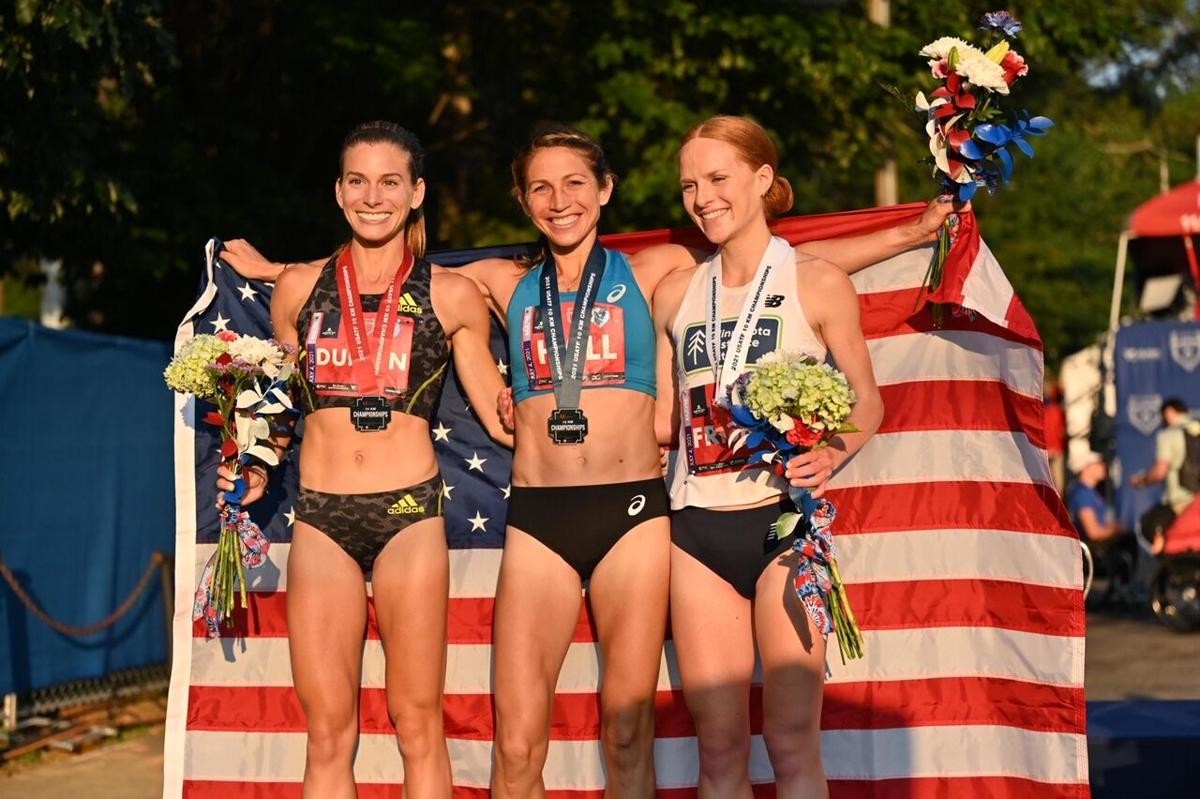
Durgin, 27, who finished ninth in the 10,000m at the USA Olympic Team Trials – Track & Field in Eugene, Ore., eight days ago, led the race through 5 kilometers in an honest 15:46. Hall remained with her as did Frisbie and Tuliamuk, but Bruce and Diane Nukuri (Asics) began to drift back. Durgin kept pressing, and 90 seconds later only Durgin, Hall and Frisbie remained in contention.
Hall, 38, who prior to today had won 10 national road running titles from the mile to the marathon, wasn’t surprised that it was Durgin who was pushing the pace. Both women live and train in Flagstaff, Ariz., and know each other well.
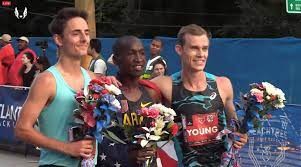
“She’s been running so strong this year,” Hall told Race Results Weekly by telephone. “At the Trials she had a great one. So, I didn’t really know who would be charging out there.”
At about the 7-kilometer mark Hall and Durgin increased the pace, and Frisbie (who is only 24) had to drop back. The two women spent most of the next three kilometers running side by side waiting for the right moment surge for the finish line. As she did at the Mastercard New York Mini 10-K on June 12, Hall finally showed her cards in the final 400 meters. She pulled away strongly from Durgin to win by eight seconds.
“That’s the first time I’ve kind of gone toe-to-toe with her in a race,” Hall said of Durgin. “She’s got a great future ahead of her. I’m excited to see what she does.” She added: “I’m really proud of her.”
Durgin set a personal best of 31:49, as did Frisbie in third (32:06). Nukuri rallied in the last two kilometers to finish fourth in 32:27, and Bruce (who won this race in 2018) got fifth in 32:35. Tuliamuk, the 2020 Olympic Trials Marathon winner, finished sixth in 32:43.
For Hall, today’s win lifted her spirits after she finished sixth at the Olympic Trials in the 10,000m, likely her final attempt at making an Olympic team on the track. She also felt like she got some payback for a bad race at the 2020 Olympic Trials Marathon, also held in Atlanta, where she was unable to finish.
“You know, I was wanting to kind of get through the hills,” Hall said of the middle portion of today’s race. “Obviously, these Atlanta hills crushed me in the Trials. So, I definitely wanted to have a strong run over those hills.” She continued: “Going into this race I just wanted to have fun out there… This was an opportunity for me to just to out there and enjoy racing.”
For Chelanga, today’s win was his first USA title since he won the 25-K crown in May, 2018, just before he said he was hanging up his racing flats.
“I had announced that I had retired after July 4th of 2018,” Chelanga said in his post-race television interview. “Then when I got back in the Army, people noticed in the physical test that I was really fast, and I ran the 10-miler for the Army team (October, 2019). So I did it. Long story, but now I’m back here.”
(07/05/2021) ⚡AMPby LetsRun
AJC Peachtree Road Race
The AJC Peachtree Road Race, organized by the Atlanta Track Club, is the largest 10K in the world. In its 48th running, the AJC Peachtree Road Race has become a Fourth of July tradition for thousands of people throughout the metro Atlanta area and beyond. Come kick off your Fourth of July festivities with us! If you did not get...
more...Kenyan´s Timothy Cheruiyot bounces back in Sweden after missing out on Tokyo Olympics
World 1,500m champion Timothy Cheruiyot put behind the disappointment of missing a ticket to the Tokyo Olympics when he clocked 3:32.30 his speciality at the Stockholm Diamond League on Sunday evening.
Cheruiyot crossed the finish line ahead of Spaniard Ignacio Fontes (3:33.27) and countryman Ronald Kwemoi (3:33.53) in second and third respectively.
The win in the Swedish capital continues the rich vein of form for the Bomet-born runner whose disappointing fourth-place finish at the national trials for the Tokyo Olympics remains the only blot to a sensational season so far.

In late-May, he set a world lead of 3:30.48 at the Doha Diamond League during the men's 1500m.
Another Kenyan, Ferguson Rotich, lay down a marker for the Olympics when he set a season lead of 1:43:84 in the men's 800m to finish first ahead of Canadian Marco Arop (1:44:00) and Briton Elliot Gilles (1:44:05) in second and third.
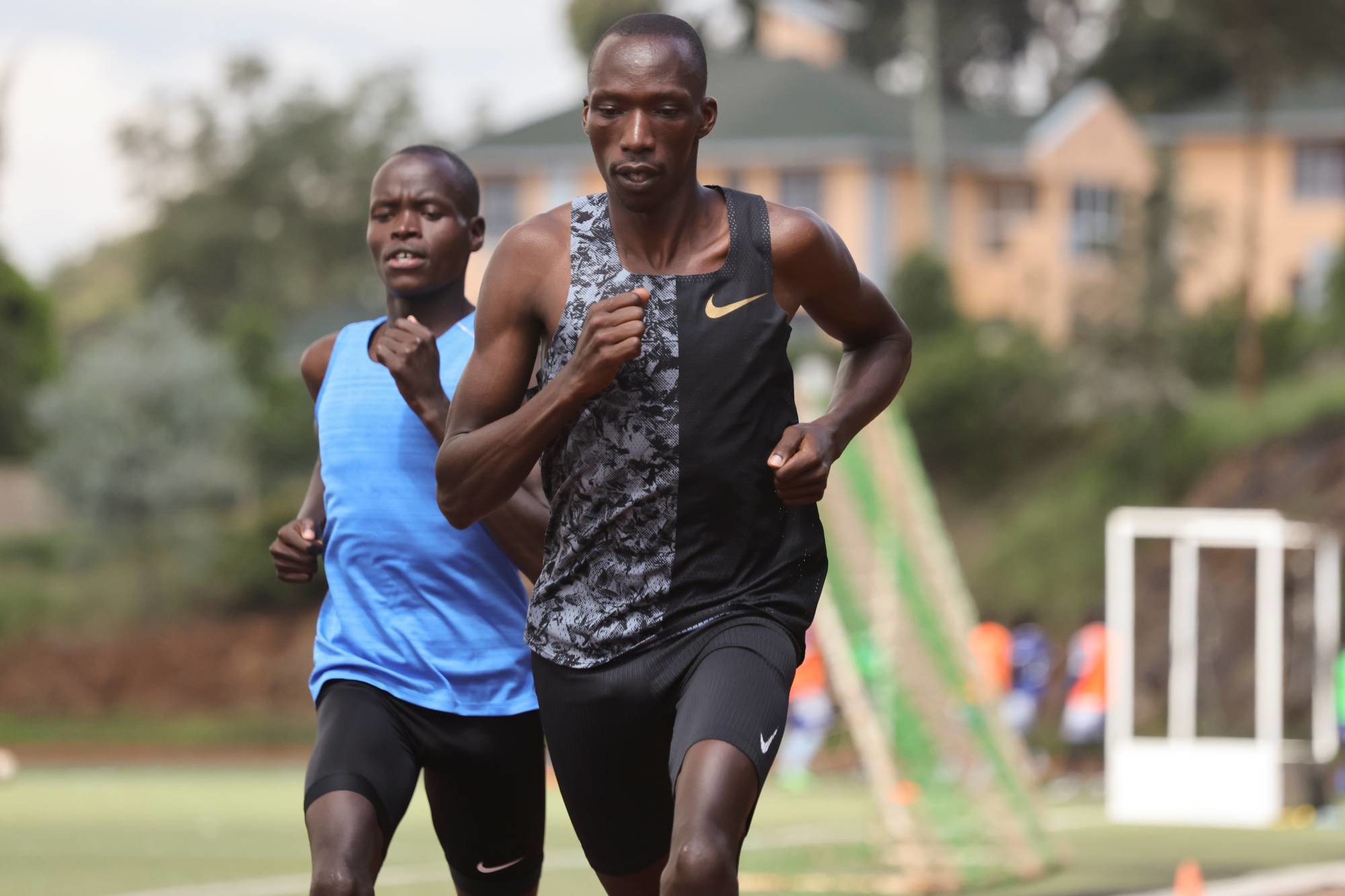
The world 800m bronze medalist recovered from a slow start to stamp his authority on the race and carry on from his impressive performance at the Doha Diamond League where he timed 1:44.45 to finish second behind compatriot, Commonwealth 800m champion Wycliffe Kinyamal.
In the women's 3000m steeplechase, former world champion Hyvin Kiyeng added momentum to her bid for an Olympic gold when she clocked 9:04.34 to finish first ahead of German Gesa Felicitas Krause (9:09.13) and countrywoman — and record holder — Beatrice Chepkoech (9:10.52) in second and third.
Other Kenyans, Purity Kirui (9:16.91) and Rosefline Chepngetich (9:22.30) finished in fourth and sixth respectively.
The exploits on Sunday followed those of Nicholas Kimeli, Jacop Krop and world 5000m champion Hellen Obiri who posted excellent results at the Oslo Diamond League on Friday.
Krop and Kimeli timed 7:30.07 and 7:31.33 respectively to finish second and third behind winner Yomif Kejelcha of Ethiopia who timed 7:26.25.
Another Kenyan — and Olympics debutant — Charles Simotwo finished fourth in the men's 1500m, clocking 3:49.40.
(07/05/2021) ⚡AMPby Omondi Onyatta
Tokyo 2020 Olympic Games
Fifty-six years after having organized the Olympic Games, the Japanese capital will be hosting a Summer edition for the second time, originally scheduled from July 24 to August 9, 2020, the games were postponed due to coronavirus outbreak, the postponed Tokyo Olympics will be held from July 23 to August 8 in 2021, according to the International Olympic Committee decision. ...
more...Running can help you sleep better
A study published in the Journal of Clinical Sleep Medicine has found that regular exercise can improve the quality of your sleep and help you sleep through the night.
The only thing is that it takes about 4 months for your body to get used to the increased activity level. So don’t get discouraged if your new training routine doesn’t improve the quality of your sleep right away. It may well be that you need longer to fall asleep if you do an intense workout right before going to bed. Why? Physical exercise stimulates the autonomic nervous system and until it settles down, you can’t sleep. So your body needs time to adjust to the new training stimuli.
BETTER SLEEP, BETTER PERFORMANCE

During the day, we want to do a good job at work and still see the best results from our running workouts. If you don’t sleep well at night, you have less energy during the day and thus less desire to exercise. Therefore, a good night’s sleep is essential for your training routine!
This has recently been confirmed by a study on student athletes conducted by the renowned Stanford University: Students who got more sleep (in this case, 10 full hours!), performed better than those who placed less emphasis on their sleep.
Incidentally, it doesn’t always have to be 10 hours of sleep a night. 7 to 9 hours is the optimal amount.
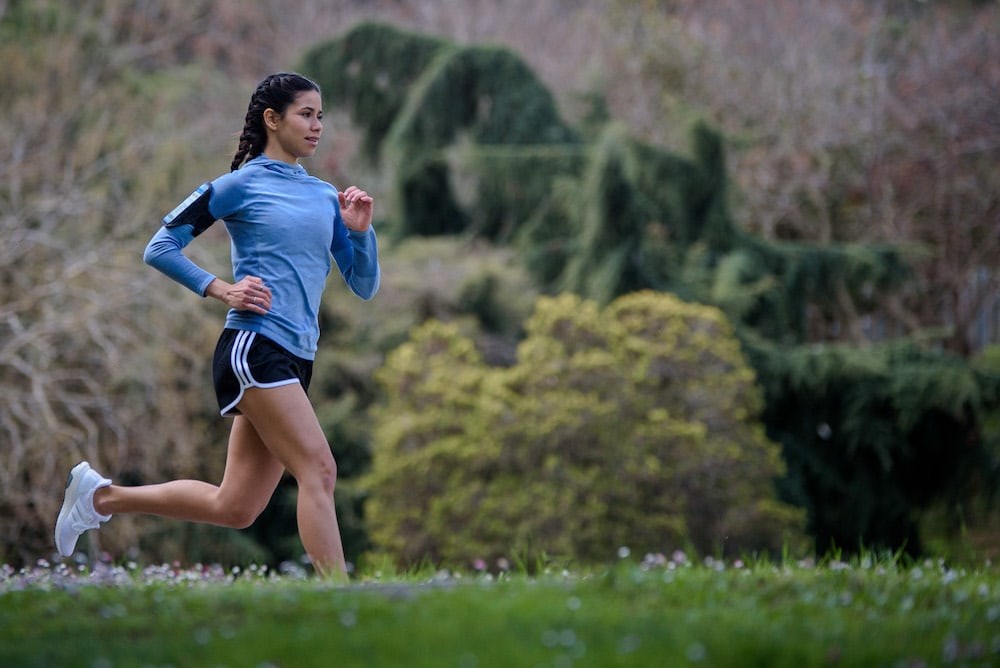
YOUR MUSCLES GROW WHILE YOU SLEEP
What you require after a long run or an intense bodyweight training session is recovery: Your muscles need to rest now – and this is just as important for your desired training effect as the actual workout itself.
Incidentally, the male hormone testosterone plays a major role in building muscles: The harder you work out and push your muscles, the more testosterone your body releases. Testosterone is needed to help your muscles recover after your workout – without it, your damaged muscles cannot build new tissue and you won’t get stronger.
This is where sleep comes in again: The longer and better you sleep, the more time your body has for recovery and growth. So you see, your muscles do grow in your sleep.
10,000 STEPS FOR A RESTFUL SLEEP
The clock keeps ticking. Your thoughts keep racing. You lie in bed for hours and you simply can’t sleep… It’s really frustrating! There are days when enough sleep is more necessary than others. For example, when you are supposed to run a (half-)marathon the next day or you have an important meeting at work.
When you are stressed, your body releases the stress hormone cortisol, which interferes with your sleep. This means that on the next day, besides feeling even more tired, you will have a huge appetite thanks to a lack of leptin, the appetite-suppressing hormone.
Low levels of leptin result in increased hunger, which of course leads to us consuming the 300 calories we mentioned at the beginning of the article.
This also lowers the quality of your sleep – particularly because the fat cells that collect in your neck lead to annoying snoring. And you certainly don’t want to disturb your loved one’s sleep, do you? The fact is that sleep and weight are connected.
That’s why you need to get plenty of exercise – you should shoot for 10,000 steps a day. Exercising outdoors can help you cope with stress and makes you pleasantly tired in the evening so you sleep better.
WHAT TO DO IF YOU CAN’T FALL ASLEEP?
If you regularly have trouble sleeping, you need to do something about it.
Besides getting in plenty of steps and exercise, you can try to improve your sleep by establishing a bedtime ritual, eating a light dinner, and limiting or eliminating your alcohol intake.
4 TIPS FOR FALLING ASLEEP
Dim the lights for a while before going to bed. This makes your body think the sun is setting, which makes you sleepy faster.
Make your bedroom as dark as possible. Light interrupts your body’s production of melatonin, which disrupts your metabolic processes.
Develop a ritual like brushing your teeth, showering or reading before lying down to sleep. Your body will get used to it and will know that it’s time to sleep now.
Sleep in a cool room. The temperature in your bedroom should be between 16°C (60.8°F) and 18°C (64.4°F).
So as you can see, sleep is incredibly important for a healthy and fit lifestyle. Take care of yourself and we wish you a good night’s sleep!
(07/05/2021) ⚡AMPby Tina Sturm-Ornezeder
2021 Vienna City Marathon on course for September 12
The Vienna City Marathon is on course to take place in September 2021, after the cancellation of its 2020 event as well as one planned for spring this year.
“We are incredibly grateful to the runners,” says VCM organizer Wolfgang Konrad. “Many have carried over their start from 2020 and many have newly registered so that almost 23,000 participants are already on the start list.

“Thanks to the continued support of all our sponsors and partners and the very good cooperation with the responsible ministries and authorities, all participating municipal departments of the City of Vienna as well as police departments and offices in Vienna, we are in the best possible position economically and organizationally.”
With the lifting of the maximum number of participants for events from 1 July a central legal basis for the implementation of major events has been restored. “All interested parties can be assured that we as a professional organizer are ready to organize the VCM in a safe and at the same time atmospheric way. We are well on schedule in all areas that we can influence through our work,” said Konrad.
(07/05/2021) ⚡AMPVienna City Marathon
More than 41,000 runners from over 110 nations take part in the Vienna City Marathon, cheered on by hundreds of thousands of spectators. From the start at UN City to the magnificent finish on the Heldenplatz, the excitement will never miss a beat. In recent years the Vienna City Marathon has succeeded in creating a unique position as a marathon...
more...Hassan and Bol among 45 Dutch athletes set for Tokyo
The Dutch team for the Tokyo Olympic Games has been announced, with double world champion Sifan Hassan named for three events.
The 28-year-old won world 1500m and 10,000m titles in Doha in 2019 and for Tokyo has been selected for both of those events as well as the 5000m, but may not decide to contest all three.
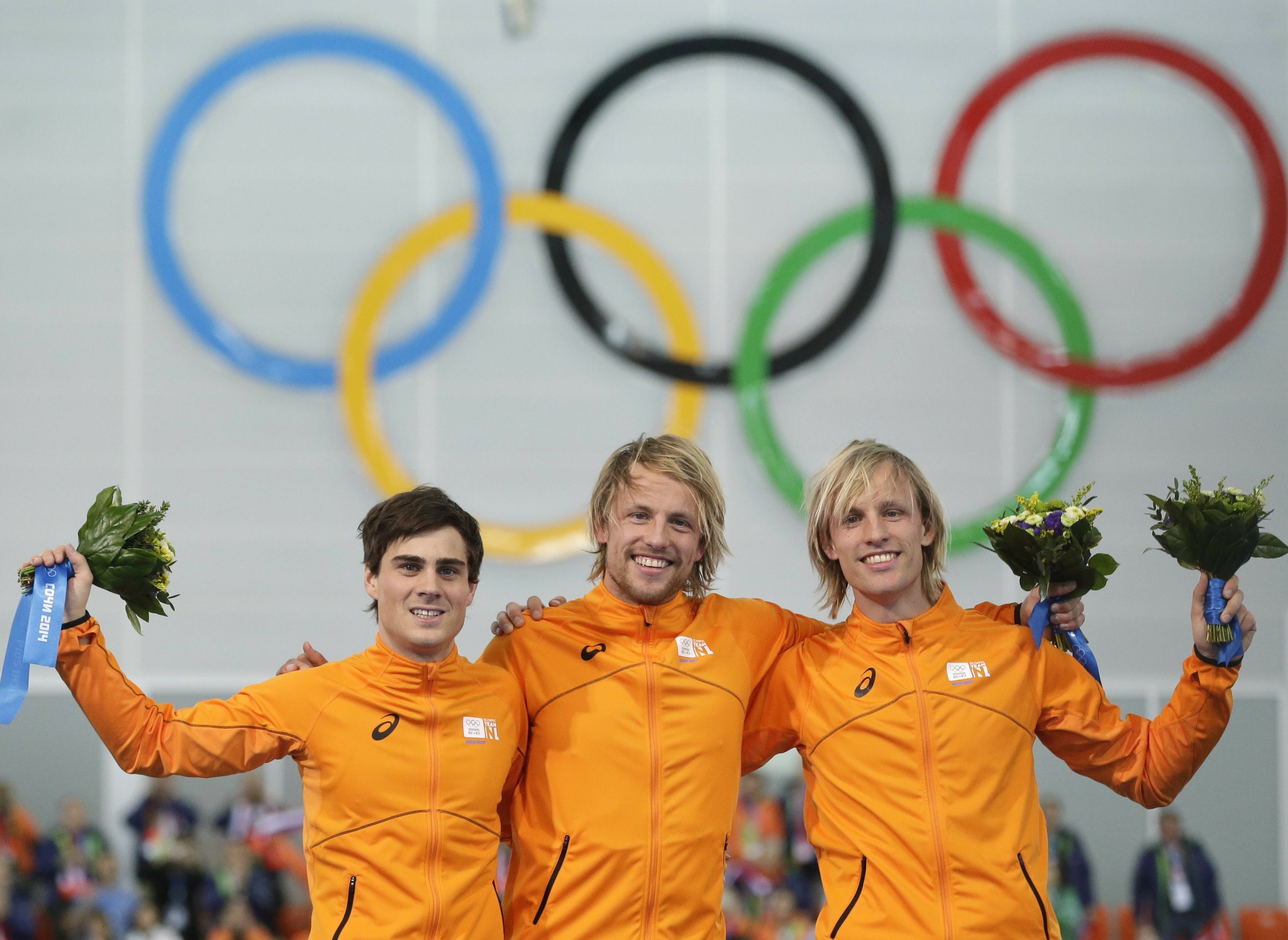
European indoor 400m champion Femke Bol has set 11 national records so far this season and has been selected to make her Olympic debut in the 400 hurdles, women’s 4x400m and mixed 4x400m.
Two-time world champion Dafne Schippers is named for the 100m, 200m and 4x100m relay, while world-leader Jorinde van Klinken’s discus selection is confirmed.
Dutch team for Tokyo
WOMEN
100m: Jamile Samuel, Dafne Schippers, Marije van Hunenstijn
200m: Jamile Samuel, Dafne Schippers
400m: Lisanne de Witte, Lieke Klaver
1500m: Sifan Hassan
5000m: Sifan Hassan, Diane van Es
10,000m: Sifan Hassan, Susan Krumins
Marathon: Andrea Deelstra, Jill Holterman
3000m steeplechase: Irene van der Reijken
100m hurdles: Zoe Sedney, Nadine Visser
400m hurdles: Femke Bol
Shot put: Jessica Schilder
Discus: Jorinde van Klinken
Heptathlon: Nadine Broersen, Emma Oosterwegel, Anouk Vetter
4x100m: Lieke Klaver, Jamile Samuel, Dafne Schippers, Naomi Sedney, Marije van Hunenstijn, Leonie van Vliet, Nadine Visser
4x400m: Andrea Bouma, Laura de Witte, Lisanne de Witte, Lieke Klaver, Hanneke Oosterwegel, Anne van de Wiel
MEN
200m: Taymir Burnet
400m: Liemarvin Bonevacia, Jochem Dobber
800m: Tony van Diepen
5000m: Mike Foppen
Marathon: Khalid Choukoud, Abdi Nageeye, Bart van Nunen
400m hurdles: Nick Smidt
Pole vault: Rutger Koppelaar, Menno Vloon
Decathlon: Pieter Braun
4x100m: Solomon Bockarie, Taymir Burnet, Christopher Garia, Joris van Gool, Churandy Martina, Hensley Paulina,
4x400m: Terrence Agard, Ramsey Angela, Liemarvin Bonevacia, Jochem Dobber, Nout Wardenburg, Tony van Diepen
MIXED
4x400m: Terrence Agard, Ramsey Angela, Liemarvin Bonevacia, Andrea Bouma, Femke Bol, Laura de Witte, Lisanne de Witte, Jochem Dobber, Lieke Klaver, Hanneke Oosterwegel, Nout Wardenburg, Anne van de Wiel, Tony van Diepen
(07/04/2021) ⚡AMPby World Athletics
Canada names 57-strong team for Tokyo
World medallists Andre De Grasse and Damian Warner are among the 57 athletes selected for Canada’s team for the Tokyo Olympic Games.
De Grasse claimed three of Canada’s six medals at the Rio Games in 2016, securing 200m silver and 100m bronze, while also forming part of the bronze medal-winning men’s 4x100m team. Warner, meanwhile, added Olympic decathlon bronze to his two world medals and went on to claim another in Doha in 2019.

“It’s always an honour to represent my country on the world stage,” said De Grasse. “I’m really proud and excited to be going to my second Olympics Games. I look forward to making Canada proud.”
Warner, who heads to Tokyo as the top-ranked athlete in the men’s decathlon, said: “I’m really excited to go to Tokyo. It’s crazy for me to think that I went to the Olympics in 2012, 2016 and now I’m getting ready for my third Olympic Games.
“I couldn’t be more honoured to represent Team Canada and to go over to Tokyo with this talented group. I will have Pierce (LePage) with me in the decathlon, which will be awesome to have a teammate in the same competition. I’m just really looking forward to going over there and competing.”
Among those joining them in Tokyo will be 2016 Olympic 800m fourth-placer Melissa Bishop-Nriagu, Mohammed Ahmed, Gabriela DeBues-Stafford, Evan Dunfee and Sage Watson.
Malindi Elmore returns to Olympic Games action 17 years after she represented Canada in the 1500m in Athens, with the 41-year-old having broken the Canadian marathon record with 2:24:50 last year to achieve her place in the 26.2-mile event.
WOMEN
100m: Khamica Bingham, Crystal Emmanuel
200m: Crystal Emmanuel
400m: Kyra Constantine, Natassha McDonald
800m: Melissa Bishop-Nriagu, Lindsey Butterworth, Madeleine Kelly
1500m: Gabriela DeBues-Stafford, Natalia Hawthorn, Lucia Stafford
5000m: Andrea Seccafien, Julie-Anne Staehli, Kate Van Buskirk
10,000m: Andrea Seccafien
Marathon: Malindi Elmore, Dayna Pidhoresky, Natasha Wodak
3000m steeplechase: Alycia Butterworth, Genevieve Lalonde, Regan Yee
400m hurdles: Noelle Montcalm, Sage Watson
Pole vault: Anicka Newell, Alysha Newman
Long jump: Christabel Nettey
Shot put: Brittany Crew, Sarah Mitton
Javelin: Elizabeth Gleadle
Hammer: Camryn Rogers, Jillian Weir
Heptathlon: Georgia Ellenwood
4x400m: Alicia Brown, Kyra Constantine, Lauren Gale, Natassha McDonald, Noelle Montcalm, Madeline Price, Sage Watson
MEN
100m: Bismark Boateng, Andre De Grasse, Gavin Smellie
200m: Aaron Brown, Andre De Grasse, Brendon Rodney
800m: Marco Arop, Brandon McBride
5000m: Mohammed Ahmed, Lucas Bruchet, Justyn Knight
10,000m: Mohammed Ahmed
Marathon: Trevor Hofbauer, Cameron Levins, Ben Preisner
50km race walk: Mathieu Bilodeau, Evan Dunfee
3000m steeplechase: John Gay, Matthew Hughes
High jump: Django Lovett, Michael Mason
Shot put: Timothy Nedow
Decathlon: Pierce LePage, Damian Warner
4x100m: Bolade Ajomale, Jerome Blake, Bismark Boateng, Aaron Brown, Andre De Grasse, Brendon Rodney, Gavin Smellie
(07/04/2021) ⚡AMPby World Athletics
Thinking About Racing Again? Here’s How to Approach the Starting Line for the First Time in a Year
Consider why you race—those reasons play a big role in deciding when to lace up again.
If you’re feeling a little rusty after a year or more without racing, the first thing to know is that your competition drought is, unfortunately, the norm. Although it may feel like races have been popping up most weekends since fall, most of those have been limited to small elite fields. The rest of the running world has been watching and biding its time until the racing door swings back open.

The second thing to know is that there are many criteria for returning to racing—like reaching a certain level of fitness, getting vaccinated, or simply craving competition—and all of them are valid. Deciding when to approach your next starting line, and how to frame that first race back, is a matter of preference that looks different for us all.
Depending on the type (or types) of runner you identify with, here are some ways to think about your comeback.
If You Race to Stay Motivated
As with a deadline at work, some runners need a race on the calendar to focus and structure their training. Susan Griffen, who splits time between Frankfort, Michigan, and Los Angeles, falls into that category. Whether in-person or virtual, her commitments hold her accountable and add a sense of purpose to her miles (as do the causes she supports through her racing).
Following a string of virtual races, Griffen plans to line up in October for the London Marathon, which will be her sixth and final World Marathon Majors race. In the meantime, once she is fully vaccinated, she hopes to race locally as part of her build-up. The uncertain future of mass events doesn’t shake Griffen’s approach.
“As far as my training, I will pretend [London’s] happening,” she says. “It’ll keep me sane and fit.”
Comeback Tips: If you’ve been running virtual races, you shouldn’t feel as out of your element in a real race as you might otherwise (although being in a crowd may still feel unsettling). You can, however, expect to get a little more out of yourself from the atmosphere and competition.

For those holding out for an in-person event, it looks like you’ll be back in business late summer or early fall. If you’re eager to start training with a goal in mind, it may be time to register for (or plan on) a race, with the least risky option being small local road races in the fall.
If You Race to Capitalize on a Good Opportunity
Dawn Grunnagle, a three-time Olympic Trials qualifier and youth coach in Dallas, says that “opportunity to race is number one” in her return-to-racing criteria. Similar to Griffen, Grunnagle trains best with “something solid” on the calendar. But virtual races don’t quite do it for Grunnagle, who’s waiting for an in-person opportunity that feels meaningful and exciting.
“Once I have a set date for a race,” she says, “I know my physical and mental fitness will come around to be ready on that day.”
Grunnagle’s last race was the Olympic Marathon Trials in February 2020, and her next big one will likely be a fall marathon. There, she plans to “jump in and rip off the band-aid.” She sees it as a fresh start, as well as an opportunity to practice staying positive, to trust in her coaching and preparation, and to get even stronger for her next battle.
Comeback Tips: If, like Grunnagle, you’ve had a long gap between racing opportunities that fire you up, you can expect your options to increase by the month. Depending on how hard you’ve been training (or not) this last year, it may take you a while to get back in the swing of structured training and reclaim a competitive mindset. Grunnagle’s advice is to focus on daily and weekly improvement, be consistent with your training, and believe that your fitness will fall into place.
If You Race When You Feel the Itch
New York-based Allison Devereux treats racing like a surfer treats a big wave. They’re out there, watching for opportunities, and when a wave of motivation comes, they ride it. The New York City Marathon, held every November (in non-COVID years), typically gives Devereux a reason to ramp up her training the prior spring. The thawing of the city around that time helps, too.
Devereux ran 2:57 in the 2019 edition, which was her last race, and is waiting to hear whether she’s been accepted into this fall’s field. With spring in the air and a decision coming soon, she senses some momentum bubbling beneath the surface. The return of races in general will likely fuel her fire, too. “I miss waking up early and running with a big group of strangers,” says Devereux. With mass vaccinations under way, soon that might not be such a crazy concept.
Comeback Tips: 2020 wasn’t an inspiring year for road racers, to say the least. If your motivation has flagged, that’s understandable. Honor your cravings (as you might with food) and look for the next scheduled race that gets your heart pumping.
If, on the other hand, your eagerness to compete has been building, use that a secret weapon for your next race. Either way, Devereux recommends a slow transition back. Rather than fixating on speed or mileage, focus on “recovering the pure, simple joy of getting outside and running,” and trust that the urge to race—if not already present—will follow.
If You Race Your Way to Full Fitness
Then there’s the type—take Molly Grabill of Boulder, Colorado, for example—who uses early-season races as stepping stones leading to future goals. These runners start racing when they’re in good shape but not at 100 percent, and they keep lining up until (ideally) they’re in peak fitness for their target race. This approach works for Grabill because it takes some pressure off individual races and offers frequent, valuable benchmarks.
After placing 25th in the Olympic Marathon Trials, Grabill dialed back her training for the first nine months of the pandemic, slashing her mileage from triple-digit weeks to 25 to 30 miles per week.
Almost a year to the day after her last race, and on just six weeks of focused training, Grabill kicked off her 2021 track campaign with a 10,000-meter race in Austin, Texas. She walked away from that race with a PR (32:46), a runner-up finish in her heat, and a solid step taken towards her goal of qualifying for this summer’s U.S. Olympic Track and Field Trials, which will be hosted by her alma mater, the University of Oregon. Grabill hopes that race was the first of many between now and June, and has her eyes set on another 10,000-meter attempt in May.
Comeback Tips: First (and half-jokingly), Grabill pleads, “Don’t use the phrase ‘rust-buster’ or say you haven't done speedwork.” No one is in PR shape year-round, so you don’t need an explanation for a sub-stellar result—especially on the heels of a global pandemic. More seriously, Grabill says, “I think being confident in your running ability, and okay with where you are in your fitness, is the best way to feel successful.” As you reenter the racing scene, try to see those early ones like quizzes en route to an exam (your end goal); how you’re trending is a better metric than any one result.
If You Race to Run Fast, Place High, or Crush a Big Goal
Some people race only when they feel ready to run really well—whatever that means to them. American 25K record-holder Parker Stinson says, “I want to always be at a starting line feeling prepared and like I have a chance to break a PR or go for the win.” If he’s not in that position, he’d rather stay home and train, saving that max effort for a better day.
That doesn’t mean that all of Stinson’s races are a home run. But by constantly putting himself in positions in which running well is likely, his successes mount and his confidence soars.
In January, Stinson ended a 15-month racing lull that started with a knee injury after the 2019 Chicago Marathon, extended through 2020 (and kept him out of the marathon trials), and ended with his victorious comeback in a Naples, Florida, half marathon. He chose that race because it was low-key and he liked his odds of winning. Next up for Stinson is a half marathon in Omaha in late April, where his main objective is to “run really fast.”
Comeback Tips: Big goals come with some degree of nerves and pressure—especially when you haven’t chased one in a while. Don’t be surprised if, like Stinson, you feel “nervous as hell” before your return. Two things helped him transition back smoothly. First, he ran a few indicator workouts leading up to the race that helped him set realistic goals and boosted his self-belief. Second, Stinson reflected back on everything that seemed to work in past races, from his wakeup time and pre-race breakfast to his acknowledgement that “it’s not a workout and it’s going to hurt really, really bad.”
If You Race When You Feel Ready to Brave a Big Crowd
Though an outlier among elites, Boston-based Kaitlin Goodman has plenty of company among road racers at large. As she detailed in December, the four-time Olympic Trials qualifier, coach, and public health professional won’t race until she and more people are fully vaccinated, COVID-19 is better contained, and she feels that the rewards of racing outweigh the risks. She also cares about a race’s safety precautions, such as a mask and vaccination proof requirements.
The last starting line Goodman toed was the Olympic Marathon Trials in early 2020, and her next one probably won’t be until this summer or fall. In the meantime, she’s hardly sitting around waiting for the pandemic to pass.
“I’m keeping up baseline fitness,” she says, “so when the time comes for me to compete again, I can jump back into race-specific training, hopefully without any injuries.” She’ll also run some solo time trials to reduce the shock of a race-like effort.
Comeback Tips: Waiting to race until you feel completely safe and ready to brave big crowds is as respectable of a requirement as it gets. Mass events may not reach pre-pandemic safety levels for a while—Goodman points out that the CDC still advises against medium- and large-scale gatherings (even for the vaccinated)—but there are other ways to test your fitness until they do. In addition to running time trials, Goodman suggests signing up for virtual races, which have the added benefit of supporting a financially strapped race organization. 

Meanwhile, keep an eye on CDC recommendations and know that peace of mind is a powerful performance enhancer, no matter how long you’re away.
(07/04/2021) ⚡AMPby Runner’s World
4 Ways to Reach Your Potential by Being a More Confident Runner
Believing in yourself can lead to breakthrough performances. Here’s how to make that happen.
Picture yourself on the starting line of an important race. As you stand there, simultaneously not wanting the race to begin and wishing they would just get things going already, you review your goals for the race. Do those goals seem attainable if you execute your race plan? Or do you wonder what delusional person thought you could do such a thing?

If your answer is more often the latter, you’ll come closer to reaching your potential by improving your self-confidence. As with any psychological skill, you can purposefully nurture and develop self-confidence. It’s not a psychological characteristic you should consider fragile or in a constant state of uncontrollable flux. Instead, by drawing on controllable sources, you can set about building a sturdy level of self-belief.
What is self-confidence?
Even at the highest levels of sport, confidence is considered the most important psychological characteristic required for success. 

What exactly does “confidence” mean in this context? It’s not cockiness, or self-delusion. Blasting off the start line at a pace that’s well outside your physical capacity is always going to end badly, no matter how sure you are you’re up to the task. Rather, self-confidence is a grounded belief that we have the abilities required to achieve a certain outcome. In running, this might be our belief that we can hold a certain pace throughout a race, or place ahead of the runners around us in the second half of a race. In other areas of life, self-confidence might mean believing we can successfully pass an exam, get a job that we apply for, or manage a large work project. 

Before we get to specific ways to improve self-confidence, let’s consider something about confidence that isn’t always obvious. We’re not going to tell you what it feels like to be high or low in confidence—you probably know both sides of that coin already. Instead, what we’d like you to reflect on is this: Feeling more confident isn’t as random as a coin toss. It’s not a quality that relies on luck—something we can’t control, that just happens, or that inexplicably comes and goes. Building confidence can be a controllable process; you can learn to flip the coin in your favor by nurturing your self-belief with the best sources of confidence available. This is what makes self-confidence more controllable than you might previously have considered.
Here’s another potentially surprising thing about self-confidence: The beliefs that underpin our self-confidence have less to do with what we’re actually capable of, and more to do with what we think we can do with the skills we possess. Sometimes we can be crippled by self-doubt, even for tasks that we’re more than capable of completing. You might doubt your ability to answer questions in a job interview, for example, despite having the knowledge and information required to do so. Your doubts might even mean you avoid applying for the role to begin with. Similarly, you might avoid signing up for races because you think you’re not fit enough, even though your training has been solid the past few months.
But the opposite is also true. If our belief in our abilities is higher, then we are more likely to try harder or persist for longer on a task than an equally skilled person with lower self-belief. In this way, our beliefs create a self-fulfilling prophecy. We try harder because we first believe we can accomplish a task. And we ultimately achieve it because of our increased effort and persistence, not just our abilities. Thus, our beliefs are fundamentally important to how we act, and higher self-confidence—without changes in ability or skill level—has been shown to improve performance in both athletic pursuits and the challenges of day-to-day life.
Again, this doesn’t mean we can fake it. We’re not talking about make-believe and fairy dust here! Instead, to build self-confidence—the unshakable kind—we need a solid foundation to start building on.
Specific steps toward self-confidence
Many of the general things you probably already do as a runner will build your self-confidence. These include setting challenging goals and striving to accomplish them, focusing on controllable actions, and talking to yourself in a constructive way. While these are helpful, here are four more-specific techniques for tapping into the strongest sources of self-confidence.
1. Meticulously record your preparation and milestone achievements.
Previous accomplishments, good preparation, and mastery of the skills of running are key to building robust self-confidence. But the process can crumble when you fail to make the connection between the work that you’ve done and the challenge that lies ahead. For many athletes, keeping a diary is one way of logging progress. Doing so can increase feelings of being well prepared and self-confident when an important event nears. Nothing helps to ease worries and dampen doubts more than evidence of the work you’ve done to prepare for an event.
Simply keeping a diary isn’t enough. It’s also important to prominently record the progress and achievements that you make during the weeks, months, and years of preparation. This might be highlighting training sessions that went well, flagging a successful experience like using a new mental tool to stay focused, or celebrating a performance milestone, such as setting a personal record. 

No matter how you choose to record snippets of information about your progress and achievements, the important bit is to draw on them regularly to feed your self-confidence. You might note them in a diary, but you might also attach them to your refrigerator door, or store them in a confidence jar beside your bed. Whatever the format, reading about them—and recalling each event— can help you overcome doubt-filled moments. The key point is that you ensure that your self-confidence is secured to controllable preparation and milestone achievements. These nuggets will provide the strongest sources of evidence as you methodically build and develop that confidence.
2. See it to believe it. 
Mental imagery can serve many different purposes, each of which can improve self-confidence. Athletes use their imagination to rehearse specific skills and routines. You might, for example, visualize yourself in the second half of a race running fast and relaxed. Performing these actions successfully—even in your mind’s eye—can have a positive impact on your self-belief.
Equally, when trying to achieve a goal, you might imagine working toward that goal, step by step, and making good progress. You might also imagine the emotions that accompany a stressful situation, and imagine managing these emotions to remain calm. 

Finally, you might imagine overcoming challenging situations and coping with difficult moments while staying focused and avoiding distractions. This might seem counterintuitive. After all, we often prefer to avoid thinking about things going wrong in the hope that everything works out fine. But imagining negative scenarios—the “what-if” moments—and mentally planning how to respond to each in the best possible way can be a powerful tool in our confidence-building kit. Elite runners regularly do these mental exercises, such as thinking through what they’ll do if they miss their drink at an aid station, or briefly lose contact with the pack they’re running with.
3. See others to believe it. 
Learning from others who have traveled a path similar to the one you hope to follow can raise your belief about what you’re capable of. You might, for example, pick the brain of someone in your running club who progressed from your current PRs to your goal times. What was her training like? Did she steadily chip away at lowering her times, or have a breakthrough after seeming to plateau? You might learn that you’re more ready to reach your goals than you thought you were. Remember, self-confidence beliefs are more about what we think we can do with our skills rather than an objective measure of the skills we possess. 

By learning from others, you might grasp how they cope with setbacks, or how they overcame the same disadvantages that you might experience. Even learning from their failures can increase your belief that you can overcome similar obstacles in your life.
4. Get a good support crew, including yourself. 
Finally, getting a good support crew around you can be helpful to develop self-confidence. Support might come in the form of positive feedback and encouragement from training partners, a coach, even non-running friends and family members who might believe in you more than you do. If enough knowledgeable people tell you you’re capable of reaching your goals, odds are they, and not your inner doubter, are correct.
(07/04/2021) ⚡AMPby Runner’s World
New British record for Tokyo Olympics-bound Eilish McColgan after smashing Paula Radcliffe's 5km time
Eilish McColgan received a pre-Tokyo boost by setting a new British standard in 5km by taking more than half a second off Paula Radcliffe’s 17-year-old record.
Earlier this week McColgan was selected for this year’s Team GB heading to Japanwhich will place her among Scotland’s select band of female athletes to compete in three Olympics.
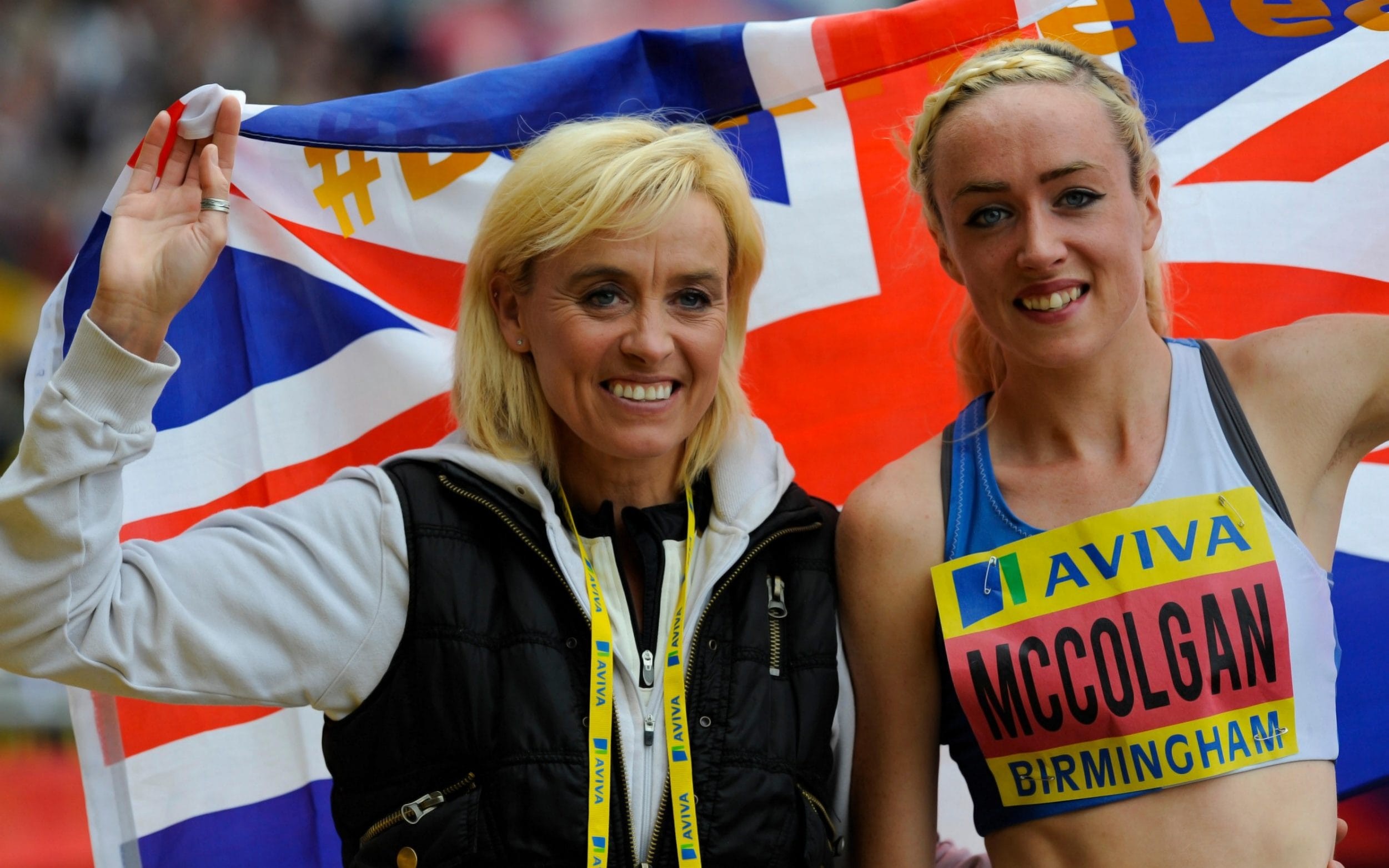
And she capped a memorable few days by making mum Liz, also a three-time Olympian, a ‘proud mama and proud coach’ with her performance in Norway.

The 30-year-old finished fourth in the Diamond League meeting in Oslo, but stripped 18 seconds off her own best time following Kenya's Hellen Obiri and Ethipoians Fantu Worku and Margaret Chelimo Kipkemboi home.
Her 14:28.55 time bettered Radcliffe’s existing record of 14:29.11 which was set at the Spar European Cup in Bydgoszcz, Poland 17 years ago.
Fellow Scottish runner and British record holder in the 1500m, Laura Muir, tweeted: “@EilishMccolgan!! New 5000m British Record Holder!! Amazing!!”
Mum Liz, who also coaches her eldest daughter, added: “Oh my days we knew it was on
McColgan senior won Olympic silver in Seoul 1988 for the 10km, and was fifth in Barcelona four years later. She ran the marathon in Atlanta for the 1996 Olympics. Eilish, born midway between the Seoul and Barcelona games, will compete in the 5km in Tokyo having raced the 3km steeplechase at London in 2012 and 5km in Rio four years later. She will double up with the 10km later that week.
Her selection this year, sets her alongside Lee McConnell and her mum as female athletes qualifying for participation in three Olympic Games. Steph Twell’s selection in the marathon also adds her name to the illustrious group.
Earlier this week Eilish wrote: “Officially selected for my THIRD Olympic Games! It still sounds a little surreal, but I'm super proud to represent Team GB once more in what will be my third different individual event. From the Steeplechase in 2012 to the 5,000m in 2016 and now the 5/10K double in 2021.”
McColgan set her previous best time of 14:46 – a Scottish record – in Doha in 2019. The run in Norway now places the Dundee Hawkhill Harrier fifth on the European all-time list.
(07/03/2021) ⚡AMPby David Oliver
Galen Rupp and Aliphine Tuliamuk will tune up Sunday’s USATF 10 km Championships
U.S. Olympic Team Trials – Marathon winners Galen Rupp and Aliphine Tuliamuk headline Sunday’s USATF 10 km Championships presented by Toyota, as both athletes eye winning another U.S. title, while tuning up for the Olympic Games in Tokyo, which get underway later this month.The USATF 10 km Championships, hosted by the Atlanta Journal-Constitution Peachtree Road Race are the third stop on the 2021 USATF Running Circuit presented by Toyota.
Sunday’s contest in Atlanta offers Rupp, along with fellow Olympic qualifiers Jacob Riley and Abdi Abdirahman, a chance to test their fitness before departing for Tokyo. Rupp is coming off a strong sixth place finish at the U.S. Olympic Team Trials – Track and Field in the 10,000m, where he contended for a top three finish for much of the race. Rupp is in fine form and comes to Atlanta as the pre-race favorite.For Riley and Abdirahman, both of whom have had very quiet 2021 seasons, Sunday is even more important to get a quality racing effort before their marathon race in Tokyo on August 8.

While both are strongest over the marathon distance, a top five finish for either athlete is not out of the question in Atlanta.While Rupp enters as the pre-race favorite, Clayton Young is having a strong 2021 campaign. Young currently leads the USATF Running Circuit standings with 18 points, having won the USATF 15 km Championships, his first USATF title, back in March. Young followed up the winning effort with an eighth place showing at the USATF 1 Mile Road Championships in Des Moines.Veterans Colin Bennie and Sam Chelanga are also top three contenders.
Bennie, who placed sixth at the USATF 15 km Championships and ninth in Atlanta last year at the U.S. Olympic Team Trials – Marathon, seems ready to challenge for his first USATF title, while Chelanga is in fine form coming off an eighth place showing in the 10,000m at the U.S. Olympic Team Trials – Track and Field in Eugene.Other notable entries include 2016 Olympian Jared Ward, 2020 U.S. Olympic Team Trials – Marathon fifth place finisher Augustus Maiyo, 2018 USATF 10 km Championship runner-up Haron Lagat, and veteran Elkanah Kibet.

On the women’s side, Tuliamuk is entered and ready to run her first race since she qualified for the Olympic Games in February 2020. Tuliamuk, who became a mother back in mid-January, is in fine form and ready to show she’s primed for Tokyo.Tuliamuk’s top competition should come from Sara Hall. The ten-time USATF champion finished third at the USATF 10 km Championships in 2018.
This year, she’s coming off a tremendous sixth place effort in Eugene at the U.S. Olympic Team Trials – Track and Field. Hall is arguably the most versatile American distance runners, a title contender at almost any distance, and Sunday she should be at the front pushing the pace once again.Stephanie Bruce, who won the 2018 USATF 10 km Championship title, looks to add another national title to her resume.
The Flagstaff-based runner placed 13th in the 10,000m at the U.S. Olympic Team Trials – Track and Field, while also having run 1:09:55 for a half marathon win back in late-April.
Not to be overlooked, Emily Durgin is having a tremendous season. Durgin placed third at the USATF 15 km Championships earlier this season and sits a mere five points behind USATF Running Circuit overall leaders Emily Sisson and Rachel Schneider. Durgin placed ninth in the 10,000m at the U.S. Olympic Team Trials – Track and Field last month, in addition to a 1:09:47 third place effort in a half marathon in late-January.
Diane Nukuri is showing fine form this season, coming off a tenth place finish at the USATF 15 km Championships, while Allie Kieffer finished fourth at the 2018 USATF 10 km Championships and is a seasoned veteran capable of a top five finish.
Add Maegan Krifchin, Joanna Thompson, Whitney Macon, and Bridget Lyons Belyeu to the mix and this race has both talent and depth, which should make for a thrilling morning of racing in Atlanta on Sunday.
(07/03/2021) ⚡AMPby Usaft
New generation of Kenyan steeplechase stars emerges
Simon Koech from South Rift and Central Rift's Jackline Chepkoech will lead Kenya's assault in men and women's 3,000m steeplechase during the World Athletics Under-20 Championships in August in Nairobi.
Koech clocked eight minutes and 18.43 seconds to win the men's race, beating Amos Serem of Central Rift to second place in 8:20.26.
Koech and Serem now have now been bestowed with the honour of going to try and recapture the steeplechase title Kenya relinquished during the 2018 Tampere Championships.

"I am really impressed and I thank God since I have been waiting for this opportunity since last year," said Koech, who hails from Bureti, Kericho County but trains in Silibwet, Bomet County under veteran coach John Kimetto.
"I am going for nothing but gold so as to emulate my training mate Leonard Bett and the likes of Ezekiel Kemboi and Conseslus Kipruto," said Koech.
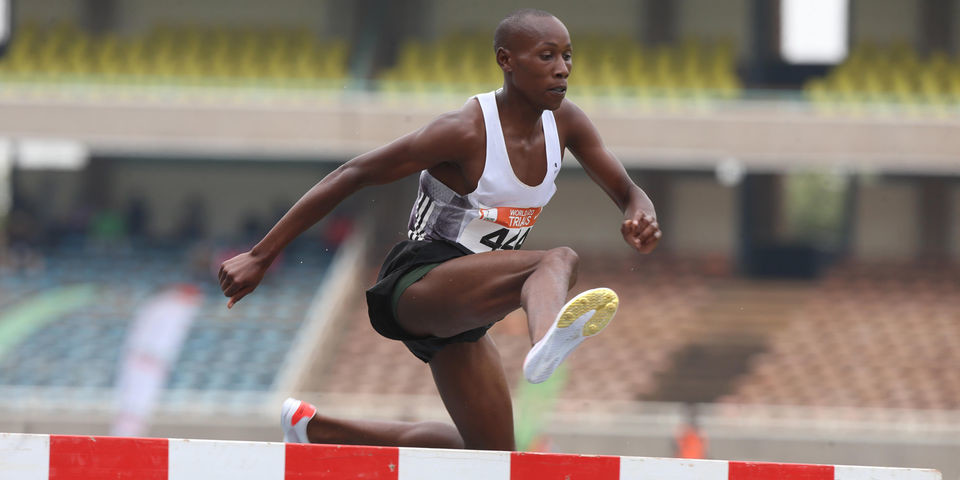
Serem is glad to represent Kenya for the first time.
"I used a lot of energy during the heats but I now known what to do...we all learn from mistakes," said Serem, who trains in Kaptagat, Elgeyo Marakwet.
"Kenyan trials are always tough and challenging hence you must be good to make the team. I thank God," added Serem.
Chepkoech timed 9:32.99 to edge out Faith Cherotich from South Rift to second in 9:33.02 with both earning places in Team Kenya.
They will be eying to succeed fellow countrywoman Celliphine Chespol, who won in 2016 Bydgozszc and 2018 Tampere.
"I still continued with my preparations despite the cancellation of the Africa Cross Championships in March in Togo," said Chepkoech. "It's never enough in terms of preparations."
(07/03/2021) ⚡AMPby Bernard Rotich & Ayumba Ayodi
Mary Cain launches professional women's running team
Mary Cain has announced the launch of her new professional women’s running team, Atalanta New York. Cain previously ran for Alberto Salazar and the Nike Oregon Project (NOP), and in 2019, four years after leaving the team, she opened up about the emotional and physical abuse she endured in her short time training with that group. That abuse pushed Cain to the point of considering suicide, and it was fuelled by Salazar’s win-at-all-costs mentality. Cain is now looking to fight this mindset (which was not unique to the NOP), and Atalanta NY will work to empower and support its athletes and young female runners everywhere.
Cain is the president and CEO of Atalanta NY, an endeavour she says is the next step in her fight against the toxicity plaguing the world of athletics. “Ever since I shared my story to The NY Times, I have wanted to do more,” she wrote on Instagram. The first step in this fight, she said, was speaking out against Salazar, the NOP and the must-win culture (which has led to the abuse of so many female athletes) in track. “Maybe it’s the runner in me, but I wanted to take more than a first step.”‘
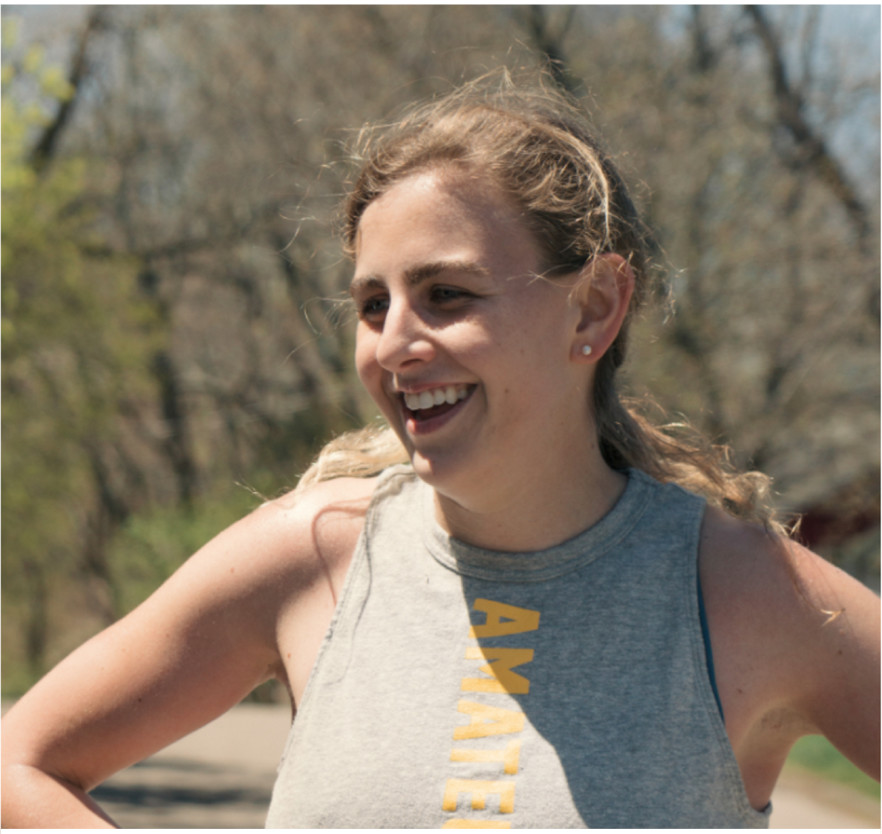
Atalanta NY is a New York City-based nonprofit that will employ its athletes, not as competitors, but as mentors to young women in the running community. This takes the emphasis off of performance (which is the usual focus for professional running teams) and instead places it on community involvement, something that Cain said she believes will “shake up the current model of professional sports.”
This is similar (although not identical) to the structure of Tracksmith’s partnership with Cain. In 2020, Cain signed with Tracksmith to work as a full-time employee while also running for the brand. This allowed Cain to run worry-free, as her contract was not dependent on her results, but rather on her work as the brand’s New York City community manager. Cain is still representing Tracksmith, and the company is a founding sponsor of Atalanta NY.
“Atalanta New York’s mission is two-fold,” reads a post on the Tracksmith Instagram page. “As a team, its goal is to help elite runners chase their athletic dreams through a sustainable and healthy organizational model. As a nonprofit, the goal is to educate and inspire young female athletes in underserved New York communities to find joy and wellness through sport.”
So far, Atalanta NY has only named two professional athletes to the team: Cain and Jamie Morrissey. Cain hasn’t raced much in the past few years (she raced four times in 2020, interrupting a four-year break from competition), but she still owns several big records, including the world U20 indoor 1,000m record (2:35.80) and American U20 two-mile best (9:38.68). Morrissey is a former University of Michigan standout who owns a PB of 4:11.48 in the 1,500m.
No other runners have been publicly added to the team yet, but Cain has said there will be more athlete announcements soon. To learn more about Atalanta NY and the team’s mission,
(07/03/2021) ⚡AMPby Running Magazine
Meet the Texas man running 50 marathons in 50 weeks in 50 states
In November 2015, Houston’s Aaron Burros was shot five times. He was at work when he heard a commotion and went to help whoever was in distress. Burros did help, distracting the enraged individual while everyone in danger got away, but he was not so lucky. Lying on the ground after tackling one of the assailants, Burros stared up at another man, who was ready to shoot him. He now says everything slowed down in those moments, giving him a chance to wonder if he was going to die.
Fortunately, the gunman misfired his first shot, which only grazed Burros’s torso, giving him just enough time to get up and run away. As he fled, he was hit in both glutes, but he managed to get to safety without being shot fatally. Almost six years later, Burros is still plagued by the terrifying memories of that day, and a bullet fragment left in his right glute is a physical reminder of the attack, still sending shots of pain up and down his leg with each step. Despite all of this pain, both physical and mental, he continues to run, which he says gives him purpose, even in his darkest moments.
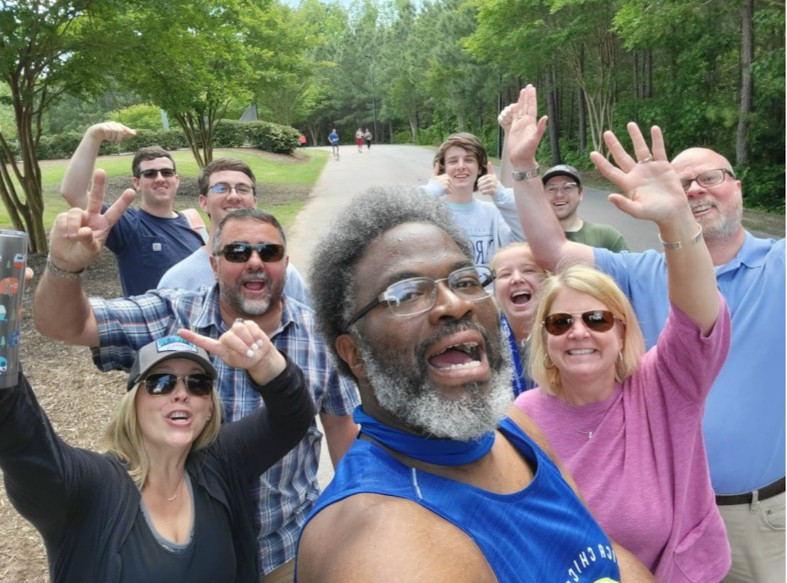
Today, Burros is in the middle of a year-long running challenge in which he is looking to run 50 marathons in 50 weeks in the 50 U.S. states, all as a celebration for his 50th birthday. He’s using the challenge as a way to fundraise for St. Jude Children’s Research Hospital in Tennessee, with the hope of raising a grand total of $50,000.
So far, Burros has completed 24 races this year, leaving him a little behind his goal of close to one per week. He has missed a few races, for various reasons, but he has made it to the start line of most of them, and he’s continuing to work toward his ultimate goal of raising $50,000.
Burros’s running journey
In 2010, years before he was attacked, Burros weighed close to 400 pounds. Looking to lose weight, he began running, slowly at first and only for 15 minutes or so each day. As any runner knows, though, with persistence comes fitness, and after a year, Burros had lost 100 pounds and gotten much better at running. By 2015, he was a seasoned marathoner, and he signed up for a 50-miler.
“That was set for two weeks after I got shot,” Burros says now. After undergoing surgery to have the bullets removed from his glutes, Burros asked his doctor if he could still run the race. His doctor told him that it would be a brutal run, but he wouldn’t cause any further damage, so Burros decided to go for it.
“I played sports my whole life,” Burros says. “My threshold for pain was high, so I just went out and tried to do the ultra.” He made it to about the 40-mile mark, but then he started falling down over and over again. He wasn’t tripping on anything, but he simply couldn’t stay on his feet. “There was this medic there who kept asking if I was OK. He told me to walk.”
Burros took the advice and slowed down, but not even a mile later, he was hit with an anxiety attack. “That was when my PTSD kicked in,” he says. “The anxiety, the depression, the crying spells. I couldn’t even walk in a straight line.” Burros didn’t make it to the finish that day, and he required assistance to get off the course. Going into the race, he had figured that the only obstacles he would face would be physical, and while he encountered his fair share of those challenges, it was the mental injury he suffered that forced him to pull out of that race.
“I had no clue what I was going through at that point,” he says. “I was facing all kinds of emotional battles.” For the next four years, Burros saw a number of specialists to help him work through the trauma, but he says his mental state only continued to worsen. It got to the point where he stopped doing pretty much everything, including running.
“I would wake up, sit at Starbucks all day, then go home and go to sleep,” he says. “I did that for four years. Unless I was going to my appointments, that was it, I didn’t go anywhere else. I didn’t know how to function.” In that time, he regained much of the weight he had lost before he was shot, until the scale eventually said 299.
“I told my psychiatrist I had to do something, that I wasn’t going back to the 300 club,” Burros says. “For me, gaining weight back was just as damaging as being shot.” He got back into running, setting a big goal for himself: to run each of the six World Marathon Majors (WMMs). In 2019, Burros checked four of those races off his list, running in London, Berlin, Chicago and New York City.
He had plans to run the Tokyo and Boston marathons in 2020 and complete his goal in just one year, but both mass participation events were cancelled due to COVID-19. This year, he will run the Boston Marathon, and he hopes to check Tokyo off his list in 2023. (Organizers of the Tokyo Marathon have closed the race to international runners this year and next, meaning anyone like Burros has to wait until at least 2023 to cross the event off his bucket list.)
Coming into 2021, Burros decided to celebrate his 50th birthday with a goal even more audacious than his plan to run all six WMMs. “I was turning 50 and I wanted to do something meaningful, to have some hope,” he says. “I know what running means to me, so I chose to do something with my running.”
50 in 50 in 50
Burros billed his event as running 50 marathons, and while most races he’ll run this year are 42.2K, he has mixed in a few 5Ks, 10Ks, half-marathons and even some ultras. Running 50 races in 50 weeks in all 50 states is a big goal, and it has taken its toll on Burros. “It’s been challenging, frustrating and overwhelming at times,” he says. But he has held onto hope throughout the journey, and managed to push through tough times. Two of his driving forces come in the form of children: Aiden and Gabby.
Aiden is a boy Burros met at the Chicago Marathon in 2019. He suffers from multiple illnesses, and Burros began to pray for him, but he didn’t think that was enough, and he decided to take action. After researching different causes, Burros decided to raise funds for St. Jude Children’s Research Hospital.
“I know medical costs can break a family, so I wanted to do something to help them and honour Aiden and Gabby,” he says. Burros only met Aiden briefly, but he has a close connection to Gabby, who is his grand-niece. Just before starting his 50 in 50 in 50 challenge, Burros heard from his brother, Gabby’s grandfather, that Gabby had been diagnosed with kidney cancer. Her kidney was successfully removed, but doctors found tumours in her skull.
Burros has had a tough time with his running challenge so far, and understandably so, but he uses Aiden and Gabby as inspiration to keep going. He knows he may miss a few weeks along the way, but the number of races he runs isn’t his priority, and instead, his main goal is to help as many children in similar positions to Aiden’s and Gabby’s as possible. To learn more about Burros’s journey and to follow along, click here, and to donate to the cause, click here.
(07/03/2021) ⚡AMPby Running Magazine
Emily Sisson’s 7 Secrets for Nailing a Tough Race—Like the 10,000 Meters at the Olympic Trials
The 10,000 meters at the Trials was run in unprecedented heat. Here’s how she kept her head in it.
A disappointing DNF in her last major race. Temperatures so hot that race organizers moved the competition nine hours earlier than planned. And a training partner and mentor who was unexpectedly absent.
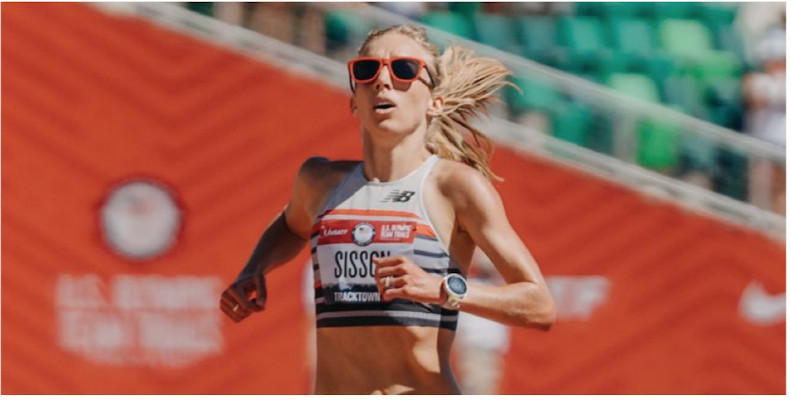
None of this shook pro runner Emily Sisson at her third U.S. Olympic Track & Field Trials. On Saturday, the 29-year-old went to the front of the pack five laps into the women’s 10,000 meters—and never let up. Not only did she claim victory and secure her first spot on an Olympic team, her time of 31:03.82 was a new Trials record.
In her post-race comments, Sisson offered a master class in mental preparation for difficult efforts. Here are seven lessons you can take on how to steel your mind for hard work ahead, even if you don’t have an Olympic berth on the line.
1. Grieve your defeats—then let them go.
In 2019 and early 2020, Sisson was “all in” on making the Olympic team in the marathon, she said. So after dropping out of the Olympic Marathon Trials in Atlanta at mile 22, she felt heartbroken and confused.
Though she typically excels at moving on from bad races, Sisson struggled a bit more than usual. She allowed herself some extra time to feel disappointed—then, with emotional support from her husband, Shane Quinn, and physical assistance from her chiropractor, John Ball, she began pulling herself forward toward the next big goal, the 10,000 meters.
“No matter what my previous performance was—whether I had a really good run or a really poor one—I always kind of look forward and work hard for whatever the next thing is,” she said.
2. Break the race down into parts.
Rounding the oval for 25 laps in the 10,000 meters can be mind-numbing even in optimal conditions. In the 85-degree heat of Eugene, Oregon, on Saturday, it had the potential to feel downright brutal.
To stay mentally engaged rather than overwhelmed, Sisson and her coach Ray Treacy devised a race plan involving several segments. She focused on hitting the halfway point in 15:50—keeping it steady at 76 to 77 seconds per lap—then picking up the pace slightly until five laps to go. Then, it was all about pushing harder until she crossed the line.
In fact, she was so focused on this strategy that she was somewhat surprised when she saw her speedy finishing time. “I was just focused on the section of the race I was in,” she said, “and wasn’t thinking overall of a certain time.”
This “chunking” concept can work in a marathon, too, says Justin Ross, Psy.D., a clinical psychologist in Denver who specializes in athlete mental health and performance. For instance, think of the first 10 miles as the warm-up, the middle 10 as cruising, and the last 6.2 as the race to the finish.
3. Draw on your past successes—and others’.
Forget Netflix or HBO Max—during her buildup, Sisson would frequently watch race videos. These include her own past performances, such as her personal best 30:49.57 in the 10,000 meters at the 2019 Stanford Invitational.
“Sometimes it’s just seeing something you've done before and reminding yourself, ‘Oh, yeah, my legs know how to do this,’” she said. “It sounds kind of cocky, but it’s for me, it’s helpful.”
Also in her queue: races won by two-time Olympian and American record holder Molly Huddle, who scratched from the Trials on June 14. Watching championship races where Huddle has taken the lead from the front, and then won, inspired Sisson and brought feelings of connection to her longtime training partner.
“I like looking at them; I am a very visual person,” she said. “I’ve watched and re-watched videos of her running, and running away from the field. Having her as a mentor has been huge for me.”
You might not have any of your own race videos at the ready, but “we all have the ability to draw upon our past successes, both in and out of sport,” Ross said.
He recommends using your training log as your own personal power journal. “With each day’s training, write down areas when you executed mental toughness and how you were able to get through difficult runs,” he said. Reviewing these notes prerace will ward off the doubt and anxiety that can often creep in last-minute.
4. Reshape your narrative.
Recalling those victories of the past can shift you away from negative thought patterns. You can also recruit someone who knows you well as a runner—for instance, a coach or a training partner—to reinforce the message.
During the final phase of her preparations, Sisson traveled from Arizona back to Providence, Rhode Island, to see Treacy in person. These sessions improved her confidence as well as her fitness. “He knows how I think, and he knows to challenge the stories I have about myself in my head,” she said.
“I was telling him something along the lines of, ‘Oh, I can't outkick certain people.’ And he’s like, ‘That’s not true,’” she said. “He brought up a race that I did in college where I outkicked someone and ran a 65-second last lap.”
Because she trusts him and knows “he’s a realist,” his assessment wards off her moments of self-doubt. “If he says, ‘You’re capable of doing this,’ I know that’s what I’m capable of doing,” she said.
5. Add to your toolbox.
In addition to reinforcing her past strengths, Treacy also assigned her workouts to build the exact skills she’d need to hone her finishing speed. “We actually practiced running a lot of faster 400s,” she said.
In addition, she ran three 5Ks in her buildup, in which she consciously focused on picking up her speed in the last two kilometers. “Even when I was tired, I knew with 2K to go: all right, time to go,” she said. “I think that was great practice.”
6. Remember: It’s tough for everybody.
Living in Phoenix likely gave Sisson an advantage in the heat, even though she did her recent training this year in cooler Flagstaff and Providence. Still, she channeled the memory of tough workouts in scorching temps—and implemented the adjustments to her routine they required, such as trading hot coffee for caffeinated gum or a shot of espresso prerace.
At tough spots during the competition, she honed in on those advantages rather than dwell on the bad conditions. “Even when it felt really hot, I kept telling myself: ‘I know, you’re feeling the heat. But so is everyone else,’” she said.
7. View obstacles as opportunities
When 41 women toe the line on a scorching day, not everyone will be able to keep up with the lead pack. In fact, Sisson lapped many talented runners—all but six others in the field—en route to her victory.
Though she—along with second-place finisher Karissa Schweizer and Alicia Monson, who finished third—had to weave a bit as the race wore on, Sisson didn’t view these competitors as a hindrance to her progress.
In fact, she was grateful the race was condensed to one section instead of two, as proposed by USATF in late May. That way, even as a front-runner, she had competitors to key off of. “It kind of gives me something to eye in front of me and reel in,” she said. “They helped me.”
(07/03/2021) ⚡AMPby Runner’s World
6 Signs Your Protein Intake is Too Low
It keeps your energy up, builds muscle, and keeps you satiated, but it can be a nutrient many runners lack in their diet: protein.
In general, female athletes are more likely to miss the mark on their nutritional needs than male counterparts, says Yasi Ansari, national media spokesperson for the Academy of Nutrition and Dietetics, registered dietitian, nutritionist, and Certified Specialist in Sports Dietetics. That is especially true for runners who restrict their food intake, putting themselves at risk for low protein intake.
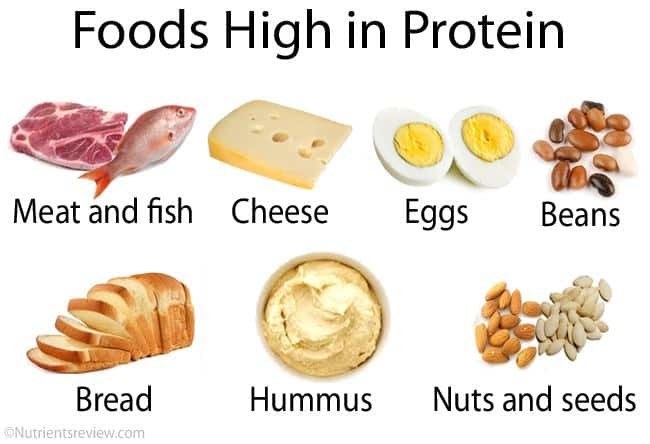
"In the work that I do, it's really important to encourage my athletes to be eating enough to ensure they are meeting their nutrition needs from all their macronutrients," she says.
Eating the right amount of protein plays a significant role in a runner's diet. It helps repair muscles after a rigorous workout. It also builds and maintains muscle mass, which boosts performance. And it helps to support the immune system. "Protein plays many other roles as well," says Ansari. It aids in cell turnover, for example, "the structural component of the body and makes up enzymes and some hormones while playing a role in a variety of physiological functions."
"Hemoglobin is also a protein that carries oxygen," she adds. "Without enough protein we are also at risk of fatigue which can lead to poor performance and low energy during training."
Of course protein intake varies depending on the intensity of your run workouts. Many female athletes are able to consume the recommended protein requirements from their daily diet as long protein intake is 10 to 15 percent of their nutrition plan, according to the Journal of Sport and Exercise.
If you're unsure on whether you're getting enough protein, there are signs that you can pay attention to.
Signs You're Not Eating Enough Protein
Dave Scott, six-time IRONMAN champion, works with many athletes to make sure they consume the right balance of nutrients to avoid any issues during a competition. He outlines six warning signs that it might be time to up your protein intake:
Restless sleep
Lack of clear cognitive thought process
Loss of muscle tissue or changes in body composition
Brittle nails and hair
Feeling lazy, sluggish, or generally fatigued
Low libido
Scott suggests women should use the following protein guideline to ensure they consume the right amount:
Ansari recommends checking with a registered dietitian to dial in on your precise protein needs. But as a general rule, you may need more protein if you're at risk of energy deficiency, you've increased your training, the intensity of your training has gone up, you're pregnant, recovering from injury, or an older adult.
Everyone should be including protein in every meal. "Several studies agree that evenly distributing protein at about 25-35 gm of protein per meal, throughout the day will also help optimize muscle protein synthesis compared with an uneven distribution of protein," says Ansari.
Some tips to do so: Sprinkle protein powder in your oatmeal, smoothie, coffee, or yogurt parfait in the morning. Eat beans or meats at lunch or dinner, and snack on high-protein foods in between meals (like cheese and nuts or peanut butter and crackers).
In a traditional diet Scott recommends eating cold water fish, grass-fed beef, and chicken three to five times a week. For vegetarian or plant-based diets he recommends Nori seaweed or Tempeh instead. (Note: While vegan and vegetarian athletes may be at higher risk for low protein intake, Ansari is a firm believer that it is possible to have a solid nutritional game plan: "If you are following a vegan or vegetarian eating pattern you can meet your protein needs with an appropriately planned vegan or vegetarian eating pattern.")
"Consistency is key," says Ansari. "See which protein sources work best for you and how/when you can add more protein to your plates."
Some other great protein sources include:
Ansari adds the encouragement that you likely already know if you're getting enough protein in your diet based on how you feel. "If you're an athlete who is meeting their needs through consistent and adequate nutrition, you are likely meeting your protein goals," she says.
(07/03/2021) ⚡AMPby Trail Runner magazine


